Cathedral MUSIC
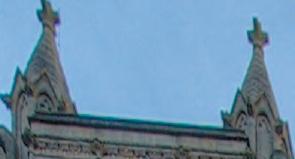
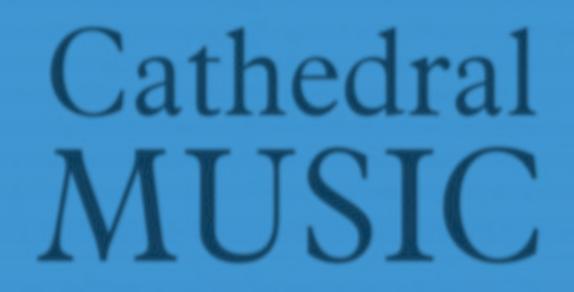

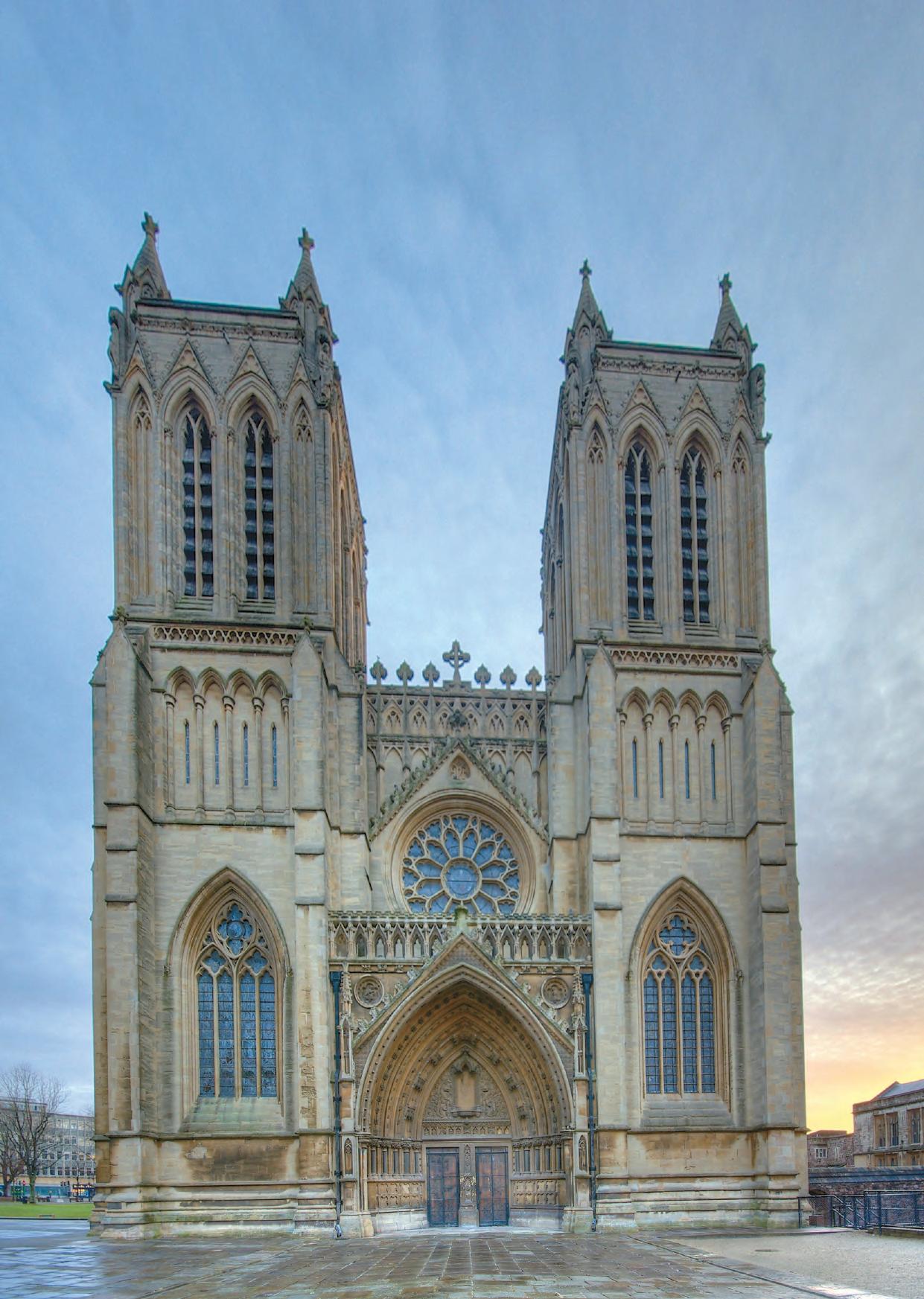
ISSUE 1/09
For many years organists throughout the land have aspired to playing a Makin organ. Now with the unsurpassed sampled technology within the Westmorland Custom range, designed by organists for organists; there has never been a better time to own one. Don’t expect gimmicks because you won’t find them here.



Design your own specification, with motorised drawstop or illuminated tab control, with 2, 3 or 4 manuals in sumptuous consoles. These organs are for people who are serious about music, with a discerning taste for the best in sound and build quality. People like you.
Makin is renowned for excellence in after sales service and our highly competitive prices. As the UK’s leading manufacturer, we install at least two Makin and Johannus organs each week at churches, schools, halls, homes and crematoria throughout the British Isles. Visit our web site for customer testimonials, lists of forthcoming and recent installations, sample specifications and much, much more. Contact us today and take your first step to becoming a member of the Makin Family.

You don’t buy a Makin Organ; you invest in one ... Why settle for less? Custom
Westmorland For more details & a brochure please telephone 01706 888100 sales@makinorgans.co.uk Visit our web site www.makinorgans.co.uk
Organs
Cathedral Music
CATHEDRAL MUSIC is published twice a year, in May and November
ISSN 1363-6960 MAY 2009
Editor
Andrew Palmer
21 Belle Vue Terrace Ripon North Yorkshire
HG4 2QS
ajpalmer@lineone.net
Assistant Editor Roger Tucker
Editorial Advisers
David Flood & Matthew Owens
Production Manager Graham Hermon
FCM e-mail info@fcm.org.uk
Website www.fcm.org.uk
The views expressed in articles are those of the contributor and do not necessarily represent any official policy of Friends of Cathedral Music. Likewise, advertisements are printed in good faith. Their inclusion does not imply endorsement by FCM.
All communications regarding advertising should be addressed to: Roger Tucker
16 Rodenhurst Road
LONDON SW4 8AR
Tel:0208 674 4916 cathedral_music@yahoo.co.uk
All communications regarding membership should be addressed to:
Friends of Cathedral Music
Membership Department
27 Old Gloucester Street London WC1N 3XX
Tel: 0845 644 3721
International: (+44) 1727-856087
E-mail: info@fcm.org.uk
Every effort has been made to determine copyright on illustrations used. We apologise to any individuals we may have inadvertently missed. The Editor would be glad to correct any omissions.
Designed and produced by MYPEC
The Old Pottery, Fulneck, Pudsey, Leeds, West Yorks LS28 8NT Tel: 0113 255 6866
info@mypec.co.uk
www.mypec.co.uk
Cover Photographs Front Cover Bristol Cathedral Photo: © Neil Hobbs Back Cover The Nave and Organ Screen at Beverley Minster Photo: © Craig Wilkinson The Magazine of the Friends of Cathedral Music CM Comment 4 Andrew Palmer Chorister Days with Alan Spedding 5 Graham Hermon A Personal Reflection 6 Alan Spedding reflects on forty-two years as Organist and Master of the Choristers at Beverley Minster Just for the Record 12 Christopher Humphries talks about his recording experiences Stephen Darlington 16 60 Seconds in Music Profile Safeguarding this Priceless Heritage –Bristol Cathedral Choir School 18 Canon Wendy Wilby, Precentor Liverpool’s Year as Capital of Culture 2008 22 Timothy Noon Simon Johnson 24 60 Seconds in Music Profile The Singingmen’s Supper 26 Bristol Cathedral’s Lay Clerks’ Tune Singingmen & Drinkingmen 28 A Lay Clerks Tale –Andy Marshall The Klais Organ of Bath Abbey 30 Peter King Whose Music is it Anyway? 38 Revd Martin Eastwood –Liturgy and Music at St Paul’s between the Wars The King’s Singer 42 Tim Rogerson Clergy, Organists & other Disharmonies 46 A talk given at the conference ‘Cathedral Voices across half a Millennium’ BBC Proms Preview 53 Roger Tucker Sounds New Contemporary Music Festival in Canterbury 54 Paul Edlin Cambridge Choirs Today 56 Geoffrey Webber –Cambridge University celebrates its 800th Anniversary Letters 59 Your views Book & Music Reviews 60 The latest books and recordings Cathedral Music 3 Payment of a donation of £3 to the distributor of this magazine is invited to cover the cost of its production and distribution Cathedral
MUSIC Cathedral MUSIC
CM Comment Andrew Palmer’
lost all their singing boys.
In this edition we are publishing a letter from FCM member Lynda Collins, which indicates her disquiet over what she sees as the erosion of the pre-eminence of the traditional all-male cathedral choir by the slow but sure march of girl choristers into our cathedral choir stalls. In my last Comment [2/08] I dared to suggest that this had not undermined the all-male tradition in the way that was predicted by a minority of its supporters.
The whole complex interaction that has followed from the formation of the first girls’ top line at Salisbury in 1991 is difficult to unravel. I use the term ‘top line’ rather than ‘choir’, because these groups were never intended to be freestanding choirs of girls’ voices.
The concern which Lynda Collins expresses is that girls will eventually replace the tradition of boys singing the top line in our cathedrals; so that is the case that has to be proved.
I recall the response of Alan Thurlow, our immediate past chairman, when this matter was raised in FCM Council: “show me an example of this happening and I will take the threat seriously.” It has to be said that we never could.

The Campaign for the Traditional Cathedral Choir (CTCC) was predicated on this perceived threat. As part of their service they now produce a leaflet (advertised in our last edition) which shows how many all-male choirs are still around in cathedrals and churches, which seems to belie their basic fear. In the latter category it is certainly true that many churches have
The CTCC predict the demise of the boys’ top line but they also have never adduced the hard evidence that Dr Thurlow called for. I know of no Anglican cathedral, where boys have always sung the top line, from which they have now disappeared; in fact there are several where boy choristers have been restored e.g. at St Davids and St Edmundsbury and, incidentally, both St Anne’s and St Peter’s Cathedrals in Belfast have introduced a boys’ top line. It is interesting to note that Dublin’s three cathedrals each offer a different model. Of the two Anglican foundations, St Patrick’s has an all-male choir fed with boys from the only choir school in Ireland, whereas Christ Church closed its choir school in 1972 and now has an adult choir. At the RC Pro-Cathedral there is the wonderful Palestrina Boys’ Choir, which as well as singing Solemn Mass with the cathedral’s main choir, performs as a free-standing concert ensemble.
The truth is that there are arguments and pressures both ways: yes, there are those who want girls to have more opportunities to sing in cathedrals and there are those opposed to this, although it is politically incorrect to reveal it. Some deans and chapters are in favour, others are against, because of financial, practical or musical traditional reasons. A director of music cannot initiate such an innovation because he or she wants to, nor can they do the reverse but they can advise their deans & chapters. One assumes no professional cathedral music directors would want to lose their boys’ top line and they work very hard to go out and recruit good voices, especially in cathedrals where there is no choir school. It is interesting to note that some of the major English foundations still do not have a girls’ top line, although a few have an alternative girls’ group on a quite different footing from the main choir. There are clearly signs that most cathedrals want to strike a balance between giving girls their longawaited opportunity and keeping the
all-male tradition strong. The CTCC can claim some of the credit for opening up this debate by highlighting the dangers. The resulting scrutiny of this divisive issue from all sides, not least from the parents of both the boys and the girls, has all helped.
My point is that it is a mistake to exaggerate the trend, so implying the battle is lost. I believe that we shall not know the outcome for many years and the trend may be less total than Collins and other members of the CTCC fear. The truth is that, on the evidence, the all-male tradition is not dying but coexisting peacefully. At Salisbury, the recruitment of boys is stronger than ever. The real danger is that the practice of mixing boys and girls singing the top line might increase, because then the unique qualities of each will be submerged in a homogenised and undistinctive vocal timbre. It is pleasing to note that this has not happened and there is still only one Anglican cathedral in England with a mixed top line. The majority of cathedrals are not in favour of mixing.
Another threat to the traditional sound is the temptation to use women to sing the alto line, because of the lack of male counter-tenors, the unique feature of the English cathedral choir. Indeed the loss of boys from the top line will lead eventually to a shortage of altos, tenors and basses. Always remember that the majority of lay clerks are ex-cathedral choristers who have been hooked on the traditional repertoire as boys.
In criticising FCM, Lynda Collins makes the mistake of confusing the messenger with the message. It is an exaggeration to say that ‘the makeup of choirs is far removed from those in existence when the FCM was founded’, the alto, tenor and bass lines are still sung by men and in the majority of services in cathedrals there is still a boys’ top line. The inclusion of women in cathedral choirs is extremely rare. At all events, the traditional repertoire is still sung in our cathedrals: and it was to safeguard this that our founder, Ronald Sibthorp, set up the FCM.
Cathedral Music 4
‘
The CTCC predict the demise of the boys’ top line but they also have never adduced the hard evidence that Dr Thurlow called for.
Chorister Days with Alan Spedding
The photograph above is pretty much the view I saw as a boy from the bathroom of our family home in Wilbert Lane, Beverley. I was fortunate in that my mother attended church and out of the two fine churches in Beverley, we lived in the parish of the Minster, often referred to as one of the finest Gothic church buildings in Europe. When Alan Spedding started at the Minster in 1967 he was looking for new choristers. Speaking to my mother after one service to enquire if my two elder brothers might be interested in joining the choir, my mum declared: “I have a third boy at home who loves singing”. This was the start of my chorister days at Beverley Minster and what a kickstart it was. I was in awe of the building, its beauty, the organ and the new Master of the Choristers, Alan

Spedding. Alan had a clear idea of what he expected from us choristers, and had the skill and expertise to get exactly what he wanted. Thursday night Evensong was a highlight for me and I will never forget those dark winter nights where we would sing this wonderful service in a building of such beauty and magnificence. Historically, the organists of Beverley Minster have tended to have long tenures –Alan Spedding has been no exception to that rule. If you have seen this building you will understand, like me, why this should be the case. For those of you who have not visited Beverley Minster, you should put it on your ‘To Do’ list. You will not be disappointed!
Sadly my chorister days at the Minster were cut short due to a family move to North Yorkshire, but I never lost contact with Alan. Some years later as an adult,
I sang under his direction for a few years on a summer course at Salisbury Cathedral. With a love for cathedral music I went on and became a lay clerk at Ripon Cathedral and sang there for seventeen years. Such has been Alan’s inspiration to not just me, but many choristers, organ scholars, and song men. Alan retired from the Minster directing his last service on March 12th 2009. A service was held on Sunday 1st March 2009, at which Alan’s retirement presentation was made. A very large congregation attended and a former Vicar of the Minster, now the Bishop of Chester preached. Dr Peter Foster gave a light-hearted sermon and cited the happy days he had served at the Minster and spoke of the excellent working relationship he had enjoyed with Alan.
Graham Hermon
CATHEDRAL MUSIC Production Manager
Cathedral Music 5
I am enormously proud to write this foreword to Alan’s article and am certain that I am amongst hundreds of people who send Alan our very best wishes in his retirement, though I have no doubt he will still be very much involved in music-making.
Beverley Minster, north view © Jonathan Tait, 2008 www.flickr.com/photos/jontait2002
Alan Spedding A Personal Reflection

Cathedral Music 6
Beverley Minster from the east © Michael Briggs
In 2002 I was invited to contribute an article in CATHEDRAL MUSIC to mark my thirty-five years as Organist and Master of the Choristers at Beverley Minster. The Editor has been kind enough to ask me to write again now that my retirement, after forty-two years in the post, is imminent –a post which I expected originally to occupy for five years at the most. As I had covered my Beverley years fairly fully in 2002 I thought I might reflect on my earlier musical experiences, however self-indulgent an exercise this may be and for which I apologise at the outset.

I can remember the day I joined the choir of St Mary’s, Wimbledon at the age of eight. It was a Sunday and I was an insignificant probationer among about thirty other boys. (The church is situated just above the famous All-England tennis courts and is visible in many TV relays during Wimbledon fortnight.) I remember nothing of the morning service (Matins, of course), but the Evening Canticles were sung to Noble in A minor. I soon found that sight-singing came naturally to me and I rose, eventually, to the dizzy heights of solo boy and head chorister.
My piano teacher, Horace Collins, sang in the choir and felt, rightly, that singing would widen my musical horizons. He had already given me a thorough musical training which covered, in addition to piano playing, theory, aural training, sight-reading, piano accompaniment, listening to records (he had a vast collection of 78s), playing piano duets and so on. He and my father also took me to orchestral concerts and piano recitals. My Thursday evening lesson took three hours, 6.00pm to 9.00pm, all for the princely sum of two shillings. We were a poor family and I owe him so much for giving me such a foundation.
Our choir had its own rules and customs, some set by the
choirmaster, others by the boys themselves, among which were some initiation rites which would appall the current health and safety lobby. One of these involved jumping off a wall at the bottom of the churchyard and another consisted of climbing to the top of the monument to the great Victorian engineer Bazalgette, removing the top tile, presenting it to the head boy and returning it whence it came as quickly as possible. Our elders and betters were blissfully unaware of any of this, I’m sure.
The choir was affiliated to the special choirs of Westminster Abbey and St Paul’s Cathedral respectively. Both these choirs attracted boys and men from parish choirs all over London and gave us the opportunity of singing some exciting repertoire. I revelled in discovering such works as Gibbons’s O clap your hands and Weelkes’s and Gibbons’s Hosanna to the Son of David in performances in the Abbey under William McKie, at which the purists might turn up their noses in the light of modern scholarship, but which inspired a whole generation of young singers. On one occasion we sang Parry’s I was glad as Queen Elizabeth and Princess Margaret processed through the Abbey. This was 1951 and King George VI was prevented from attending through illness from attending the service and, sadly, he was dead within a year.
At St Paul’s we sang Messiah on the first Tuesday in Advent and a truncated version, in English, of Bach’s St Matthew Passion, on Tuesday in Holy Week, conducted by John Dykes Bower. The large choir sang under the dome to a packed congregation and I can still remember the thrill, not only of taking part in such awe-inspiring surroundings, but also in listening to some of the superb soloists from the cathedral
Cathedral Music 7
Alan Spedding and his wife with the choir after a service of celebration for his work, March 1st 2009 © Michael Hopps
choir who sang in these performances. These included Alfred Deller, Gerald English, Norman Allin, Thomas Helmsley, Alpha Newby and many more. The St Paul’s trebles sang some of the arias together and the effect of hearing Have mercy, Lord from the Passion, with its heartwrenching violin solo (played, I think, by Marie Wilson) has never left me. There was an interval in the Advent Messiah when the collection would be taken from the vast congregation during just four verses of the hymn, Lo! He comes, with clouds descending taken at a most majestic tempo and accompanied on the cathedral Willis, by Harry Gabb. We made friends with the cathedral choristers and used to smuggle food for them, especially jars of Marmite because they claimed to be half-starved –so much for Maria Hackett!
St Paul’s had been bombed in the war and both the north transept and the high altar were blocked off until the work of restoration could be completed. Outside the cathedral the bombs had done their worst and the ground to the north was flattened and derelict.

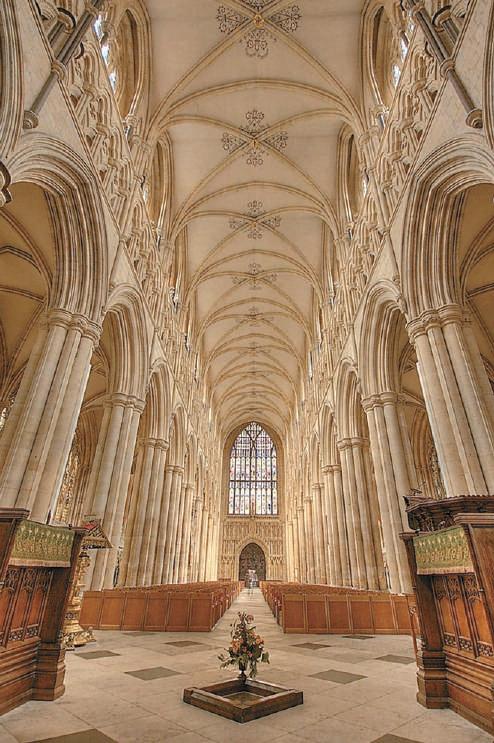
During this time I made friends with a German boy of my own age who came to my primary school as part of a scheme to help children badly affected by the war. He came from Hamburg which had been badly blitzed and many of us could sympathise as we had been bombed out ourselves (twice in my case). He introduced me to a delightful, highly cultured German-speaking lady who invited us to string quartet parties in her house, where she entertained many Jewish refugee musicians from Viennese orchestras who had sought asylum in London from the Nazis in the thirties. There I heard much of the standard Haydn, Mozart, Beethoven and Schubert repertoire played in a style which has long been superseded, but which may still be heard in archive recordings. This was another valuable musical experience beyond the narrow confines of church music.
A further experience was my introduction to orchestral music. The London Philharmonic Orchestra came to our local town hall about once a quarter and my father and my teacher took me to my first concert when I was about eight. The main work was Rimsky-Korsakov’s Scheherezade. I had had the work explained to me in advance, so that I knew what to expect. What I had not expected, however, was the flamboyant conducting style of Sergiu Celibidache who at that time had long black hair, which flew about wildly during the livelier passages but hung like a curtain in front of his eyes when the music quietened down. The leader of the orchestra, David Wise, spotted me in the audience, sought me out during the interval and took me backstage to meet the players –a kind gesture on his part and a great excitement for me. At another concert in the Royal Albert Hall the programme featured music by Brahms and Richard Strauss. The main work in the second half was Till Eulenspiegel and I was mystified to see that most of the audience had evaporated during the interval. It was explained to me that this was a protest against Strauss (who was still alive) because he was believed, unjustly, to have been a Nazi sympathiser during the war. On another occasion I was taken to a Saturday afternoon concert in the Albert Hall where I heard Honegger’s King David with Margaretta Scott as narrator and what was possibly the first London performance of Hymnus Paradisi by Howells.
When I was about eleven, the organist of our church, Leonard Morris, showed me the rudiments of organ playing and then allowed me the use of the organ. I could play the manuals, but was determined to use the pedals and I remember forcing myself to play a Bach fugue very slowly and deliberately one afternoon for about three hours, until I achieved some measure of independence of hands and feet. My parents could not afford organ lessons and I learned much by watching some of the best London players of the day. On more than one occasion I was
Cathedral Music 8
Beverley Minster Nave looking west © Craig Wilkinson
Beverley Minster Font © Lez Slack
invited into the loft at the Temple Church by the great George Thalben-Ball, who allowed me to stay on and play after the morning service. I was also invited to turn pages for recitalists at one of our local churches where I met a number of great musicians, including GTB, William Harris and Francis Jackson, all of whom were extremely kind to me.
Aged thirteen I became assistant organist of a church in Tooting Bec where the organ has since been described as the worst in London. To add to its inadequacies as an instrument, the blower was in the crypt where it picked up the coke fumes from the boiler and blew them into the organ loft. At sixteen I was appointed to St John’s, Wimbledon, with a fine threemanual Hill, Norman and Beard organ to play. I recruited the church youth club to sing in the choir and had a very happy time with good friends of my own age. The church had had a number of illustrious organists, including Alfred W Ketèlbey of In a Monastery Garden fame, who was also appointed at the age of sixteen.
Then came National Service in the army where, at the end of ten weeks’ basic training, I passed out with the champion recruit’s medal to the utter amazement of my father and many of my friends. Posted to Aldershot, I played in one or two of the local churches and gave the opening recital on the new organ in the garrison church.
On demobilisation I gained a place at the Royal College of Music where at last I had regular organ lessons with the brilliant John Birch. Cello was my second study, with Harvey Phillips, another fine musician. My harmony professor was Phillip Cannon, whose lessons were always stimulating and interesting and his own compositions were written in an individual, personal language which I find most sympathetic. His works deserve to be much better known.
1963 was a very significant year. Early in the year I took over as conductor of a choral society within a few weeks of their
performance of Bach’s B Minor Mass. In April I was appointed organist of the Parish Church of Kingston-upon-Thames. In July I graduated and, most importantly of all, my wife and I were married in August prior to my taking up my first full-time teaching post as Head of Music at a new school in Kingston. The Vicar of Kingston, Evan Pilkington, was an inspiring preacher and a pastor of great warmth and kindness and congregations were very large. He was most encouraging to the choir and would join us socially for visits to the pub after choir practice and occasional forays into the curry houses of the town.
In 1967 my wife and I, together with our first son, aged six months, took steps into the unknown when I was appointed to Beverley Minster. The north was not altogether new to us and indeed my father’s roots were in the Lake District, but we had always lived in London. Nevertheless, it was something of a culture shock at first and the pace of life was slower.


Re-reading my earlier article for CATHEDRAL MUSIC I am struck by the variety of musical experiences I have enjoyed in common, no doubt, with many other church musicians. The round of activities connected with music in the Minster has included Sunday services, mid-week evensongs, weddings, funerals, occasional services and civic events, concerts, recitals, broadcasts, lectures, rehearsals and choir practices.
Beverley Minster is a parish church and not a cathedral and I have always had parish church resources to work with. There is no choir school and recruitment of singers has never been straightforward, in spite of a large congregation. A high standard of music is expected by visitors to the church who enter a magnificent building of European significance and we do our best to meet their expectations. We are blessed with an organ of national importance which is a constant joy to play for both service accompaniment and recital work.
In addition to my work at the Minster I have needed other employment to supplement my income. The church is not an
Cathedral Music 9
The staircase to the organ loft at Beverley Minster © Craig Wilkinson
Beverley Minster Great West Door © Craig Wilkinson
over-generous employer. For four years I was Head of Music at a large comprehensive school in Hull before becoming Music Master at Beverley Grammar School. I taught there for about twenty years, after which I taught part-time at Hull University. I have conducted two large choral societies, made recordings, broadcast on radio and television, adjudicated in music festivals, worked as an examining member of the council of the RCO, directed many RSCM courses, festivals and other events and served as an Associated Board examiner. I have also published choral and organ music. For nine years I was coeditor of Organists’ Review.
As I leave the Minster I shall miss so much that has been a significant part of my life. I shall miss my friends in the choir and my musical colleagues. I have been privileged to have shared so many spiritual and musical experiences with them, not to mention being involved in many aspects of their personal and family lives. I shall miss the young singers and the sheer enjoyment in exploring music together and I shall miss the wonderful Minster organ. I am looking forward to having a little more time in which family life is not always dominated by the church timetable. I couldn’t help comparing the organist’s lifestyle with that of the clergy when I read an obituary in The Times recently of a prominent Anglican priest who summed up the clerical life as, ‘We like what we do and, by and large, we do what we like!’ I have already enjoyed some innocent fun in quoting the remark to chosen clergy friends. After all, in the words of Alexander Pope it is, ‘What oft was thought, but ne’er so well express’d’!
 Alan Spedding
Alan Spedding

Cathedral Music 10
© Michael Hopps
The Queen meets Alan Spedding during her Golden Jubilee Tour to Beverley
Photo: Hull Daily Mail
Tewkesbury abbey
Music sacred to god performed within a Liturgical setting
Monday 27th July to Sunday 2nd August 2009
Tewkesbury Abbey Church Street
Tewkesbury Gloucestershire GL20 5RZ 01684 850959

E-mail: office@tewkesburyabbey.org.uk
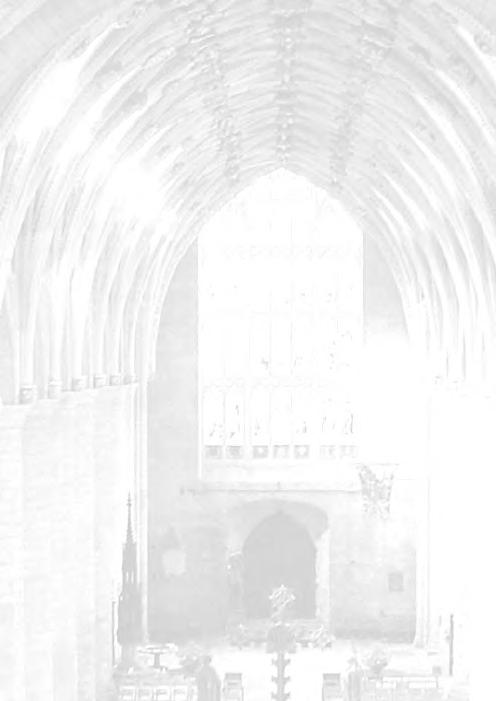

Dean Close Preparatory School Lansdown Road Cheltenham

Gloucestershire GL51 6QS
www.deanclose.org.uk
Tel:(01242) 258001
Cathedral Music 11
CHORISTER SCHOLARSHIPS & BURSARIES TEWKESBURY ABBEY SCHOLA CANTORUM OF DEAN CLOSE PREPARATORY SCHOOL CHELTENHAM Voice Trials for boys aged between 6 and 11 ■ Usually weekday/term time commitments only ■ Worldwide concerts and recordings ■ Broadcasts for TV and Radio ■ Co-educational Aged 2+ - 18 ■ Boarding and Day School T EWKESBURY A BBEY S CHOLA C ANTORUM No Christmas or Easter commitments
W`âá|vt f xÉ tvÜt
Just for THE RECORD
Ex-chorister and aspiring recording engineer Christopher Humphries talks about his experiences at recording sessions in Canterbury, Oxford and Huddersfield.

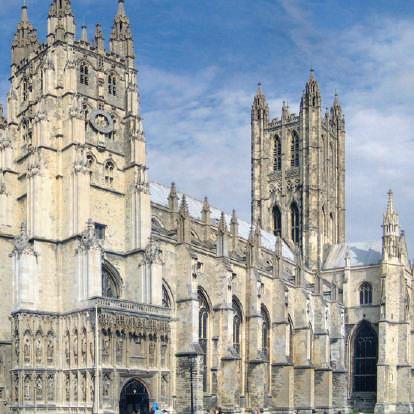
Since I started doing Music Technology at AS-level at school I knew I wanted to be a classical music recording engineer as it would be a perfect combination of my two passions. However, my love of sacred choral music emerged long before, as a chorister at Canterbury Cathedral under David Flood. During my tenure I was lucky enough to take part in several BBC Choral Evensong broadcasts and record two CDs: A Canterbury Christmas (1998) and Easter at Canterbury (2000). Recording a CD was a little out of the ordinary for us as choristers as we were used to single performances, one chance at getting it right and no ‘take 2’ if it wasn’t quite up to scratch. Nevertheless, I remember I was more fascinated than most by the technology involved, and took every opportunity to visit the engineer and his equipment situated in the crypt during the breaks. I’m sure this is one of the factors that has led me to the classical recording industry, and my future career.
This year I heard that Canterbury Cathedral Choir was planning to record another CD and thought that it would be a wonderful opportunity to see how it all worked from the other side and how a professional CD recording worked in the real world. David kindly agreed to let me sit in and observe the sessions, and put me in contact with the engineer, who seemed very happy for me to be there and to have me ‘on the team’.
The main work featured on the disc was to be Britten’s Ceremony of Carols (hence the album title Ceremony), but it also includes some favourites, works that have won a special place in the hearts of both choir and congregation. These include such gems as Stanford’s Canticles in G and Mendelssohn’s Lift Thine Eyes, as well as his well-known anthem Hear My Prayer Also featured is a piece that is particularly close to my heart; Tim Noon’s Evocation to a Friend was a commission for the Canterbury Cathedral Choristers at the time I was a chorister and so I was consequently a part of its very first performance, so to be a part of its first recording too was something special.
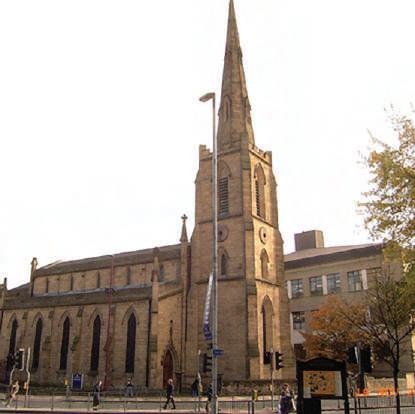
I had the feeling that David had been saving this specific selection of works for a special group of choristers, because although there are some full choir pieces on the CD, as a whole it is very much a showcase for the choristers, with over
half the disc using boys’ voices, with seven treble soloists featured throughout.
The engineer for the sessions was Brendan Hearne of York Ambisonic who, during David Flood’s twenty years as Organist and Master of the Choristers at Canterbury, has recorded eleven CDs of the choir and two of the organ. Both the CDs I took part in (as well as Ceremony), boast on the cover: ‘STEREO/AMBISONIC UHJ SURROUND SOUND RECORDING’. Every time I listened to them I wondered what this meant, and at these sessions I finally got the chance to ask the man himself.
It turns out that Ambisonics is the name for a surround-sound recording system developed in Britain by which a complete sound field, including reverberant as well as direct sound, is recorded in one environment (the recording location) and reproduced in another, such as your home or car.
The sound is often captured through a Soundfield microphone whose four capsules are arranged to sample from the surface of a sphere, as it were. The signals omnidirectional, front and back, left and right and up and down are labelled W, X, Y and Z respectively and are collectively known as ‘Bformat’. They contain all the necessary information to build a complete 3D image of a performance.
The signals from those four capsules can then be encoded to two channels in such a way that they will sound good through headphones or stereo loudspeakers. This encoding system is based on collaborative work between the inventors of Ambisonics and the BBC and represents a fusion of the Ambisonic 45J encoding system and the BBC’s Matrix H encoding system. Further, since that encoding known as stereo UHJ encoding also contains surround-sound information, that additional information can be extracted using a special UHJ decoder and played through four loudspeakers.
B-format is now most often used to create 5.1 surround recordings, but this is not its only use. Ambisonics was the undeserving loser in a format war many years ago, much the same as VHS vs Betamax or even Blu-ray vs HD DVD today, but technically, Ambisonics was, and still is, far superior. Ambisonics encodes using complex algorithms that allow the decoding to
Cathedral Music 12
Canterbury Cathedral
Merton College, Oxford HuddersfieldUniversity concert hall
be more versatile, meaning that where 5.1 is bound to be only played in six channels, Ambisonics can be decoded into four or more, dispersing itself equally around the speakers, providing a much more effective surround experience.
Even though most people will not have UHJ decoders on their home hi-fis, the side effect of using the Soundfield’s multichannel output and the multitude of algorithmic encoding is that, because of the inherent inter-channel phase relationships, a UHJ-encoded stereo recording gives the listener the experience of a stereo image that is significantly wider and deeper than that of a standard stereo recording.
Stereo UHJ encoding can either take place live in the signal chain directly after the microphone preamplifier or in postproduction if additional manipulation or ‘tweaking’ is required. With a UHJ hardware encoder, Brendan took the first approach and used its circuitry to encode the data in real time, converting the B-format signal to a stereo UHJ signal which he then recorded onto two DAT machines simultaneously, to be safe. The last thing you want is to be doing the best take of the night and the tape machine suddenly breaks down!
Despite the complex encoding, Brendan favored a very simplistic approach to micing, opting to continue with the preferred method of using solely one microphone, a Soundfield Mk4, placed with ultimate precision. This provides a very natural sound obviously, and captures both the direct sound of the choir, as well as the acoustic of the environment. Although 5.1 currently dominates the commercial market, exciting things are happening in the world of Ambisonics, and people like Brendan are gradually making it increasingly well known to the public.
We used different parts of the cathedral for different items on the CD; the Quire for pieces with Organ, and the Nave for those without. In the Quire the choir stood on the Decani side in front of the pews next to the choir stalls with the microphone in the first row of the Cantoris side, about 10 ft high. In the Nave the mic was placed about 20ft away from the choir, also raised to a height of about 10ft. Great care was taken during both set-ups to ensure the mic was placed in exactly the same position, height and direction, so as to minimize the difference in sound from session to session. There were four sessions overall, two-and-ahalf in the Nave, and one-and-a-half in the Quire. They were all evening sessions, 7.00pm-10.00pm, as this was the only time that the boys, lay clerks and the cathedral itself are all free. Before these intensive sessions the boys will have had an 8.00am-9.00am rehearsal, a full day of school, followed immediately by a rehearsal and evensong service, leaving only an hour to eat and do homework before they are back in the cathedral. When you consider this, it is quite incredible how fresh and bright the sound is.
Whilst recording the well-known O for the wings of a dove section of Mendelssohn’s Hear My Prayer, some of the perspex panels in the building began to resonate in sympathy with one of the notes of the organ. In the full-choir sections this would not be as perceptible, but in a pp section with a solo treble, it becomes surprisingly dominant! To prevent this, a number of lay clerks volunteered to place their hands on the panels to keep them quiet while another few takes were recorded. Being in the makeshift control room in the crypt, I unfortunately missed this spectacle, but when I listen to that section now, I can’t help but picture them there hugging the walls while the soloist sings!
In the summer I was fortunate enough to be present at a different choral recording session, this time with the choir of New College, Oxford in their own chapel in the city. This time the music being recorded was all six of Bach’s Motets (BWV 225-230), which required a full SATB choir with a chamber
organ accompaniment. These sessions, which were engineered (and produced) by Adrian Hunter, were quite different from those at Canterbury in many aspects.
Adrian prefers to have a selection of microphones around the space to allow for more control over the sound in postproduction, in order to get the optimum sound from the environment as well as the performers.
For the main sound from the choir, he used a pair of DPA 4003 omnidirectional microphones, placed in a similar position to Brendan’s, but with a pair of AKG 414s alongside, in cardioid pattern. Also, to pick up the ambience and reverberation of the chapel, he placed a pair of AKG C4000Bs facing into the wings. Also a pair of Røde NT55s were put near the chamber organ, just in case its sound was buried too much in the fuller sections and needed to be reinforced.
During the early part of the first session, it became clear that, through the microphones, the sound of the trebles was slightly overpowering that of the lay clerks. To try and restore the balance we decided to rearrange the choir into a more unorthodox arrangement, placing the boys behind the men, standing on benches. This movement of only a few feet made a remarkable difference to the sound, and gave a much better sense of balance to the sound.
Since these sessions I have returned to the University of Huddersfield to study for an MA by research degree, and am taking the opportunity to record as many ensembles as will let me, to gain such experience. The first of these this year was conveniently similar to those I witnessed – Huddersfield’s local parish church choir in the University’s church-turnedconcert hall. The choir wanted to record some of their favourite motets from their repertoire, as well as some hymns. We have a Soundfield mic mounted in the hall for general concert recording, which I used for ambience, and I set-up two AKG 414s closer to and above the choir to get the more direct sound. In the a cappella sections this worked quite well, giving a good balance of direct to ambient sound, but during the hymns the choir were a little overpowered, and in hindsight I would have changed the set-up. However, the choir seemed very happy with the result, and have asked me to do another CD with them later in the year.
Also at the end of last year I was invited back to Oxford to record the debut concert of a new concert choir, Voxabilis. This gave me a golden opportunity to record in the marvellous space that is Merton College Chapel. As it was a concert I had to be conscious of where I placed microphones so that it did not detract from the audience’s view of the choir, or enjoyment of the concert. I used a pair of DPA 4011s placed just behind the conductor slightly above head height to get a good close sound from the choir, and a pair of AKG 414s half way down the chapel, about 20ft further back and high up to capture the reverb of the building. The difference between the two was quite striking, and when mixed together gave a nice representation of both the choir and the space.
I feel privileged to have been present at these recording sessions and I hope I have given you a glimpse into the process of choral CD recording –watch out for my name on albums in years to come!
‘Ceremony’ (York CD 202) is available now from the Canterbury Cathedral Shop (www.cathedral-enterprises.co.uk). Reviewed on page 61.
New College Choir’s ‘Bach Motet’ CD is scheduled for release later this year.
For more information about Ambisonics, please visit www.ambisonic.net
Cathedral Music 13
NEWS BITES
NEW E-MAIL NEWSLETTER FOR SACRED MUSIC LOVERS
A free e-mail newsletter to keep aficionados of church and sacred music up to date with latest news and information has been launched by the Royal School of Church Music (RSCM). It will be distributed by e-mail six times a year and is available through the RSCM website at www.rscm.com where anyone can sign up for it, whether a member of the RSCM or not. The newsletter will include news and information from the RSCM, including ideas, inspiration and recommendations for the best use of music in worship, new publications, and information about forthcoming events and courses. It will also contain details of forthcoming broadcasts and other news such as key church music appointments and reflect wider issues. To view the first issue and sign up for the newsletter go to www.rscm.com/newsletter
CHOIR SCHOOLS ASSOCIATION FESTIVAL

140 choristers from choir schools across the South West descended on Wells on the 4 March when Wells Cathedral School hosted the annual Choir Schools Association Festival. The girl and boy choristers from choir schools at Winchester, Hereford, Llandaff and Truro, arrived midmorning, and following a munificent lunch, enjoyed taking part in the competitively-fought annual soccer and netball tournaments in the afternoon sunshine. St John’s College, Cardiff, won the netball tournament, the Pilgrims’ School, Winchester, won the soccer, and a special award was given to Connor Harris from The Cathedral School, Llandaff, for outstanding sportsmanship. The visiting Head of Xinghai Music School in Guangzhou, China, Professor Li JiWu, who is staying at Wells Cathedral School with five of his talented musical students, as part of the British Council School Linking Exchange with Wells, was delighted to present the trophies to the choristers.
After a high tea of sandwiches, cake and buns, all choristers joined in a splendid Evensong in Wells Cathedral, where they sang Psalm 23, Magnificat, set to music by Timothy Byram-Wigfield, and Nunc Dimittis set to music by Geoffrey Burgon. Pupils loved the fact they were competing against other choristers and that all who were involved were coming from the same experiences and musical background.
Head of Wells Cathedral Junior School, Nick Wilson, said: “The day was a marvellous opportunity for so many talented choristers to come together from over a wide area of the country to share experiences on the sports fields and also in the cathedral. Despite a morning of snow, the sun came out and the event was competed for in bright sunshine. The choristers are extremely competitive and they thoroughly enjoyed doing ‘battle’ in their respective sports. The Evensong was an uplifting experience with the sound of 150 voices filling the cathedral.”
CANTERBURY FESTIVAL CELEBRATES 25 YEARS IN 2009
This October Canterbury Festival - Kent’s International Arts Festivalcelebrates 25 years of bringing the best in classical music and opera to the city in this annual celebration of the arts, which attracts over 70,000 visitors each year. A multi-arts Festival that includes over two hundred events in two weeks each October, at the core of the Festival’s activity is its extensive classical music programme, which takes places in venues across the city, including the stunning Nave of Canterbury Cathedral. This year’s Canterbury Festival takes place between Saturday 17 – Saturday 31 October 2009. Tickets are available to Festival Friends from Monday 20 July and the general public on Monday 10 August. To become a Festival Friend or to receive a free Canterbury Festival brochure go to www.canterburyfestival.co.uk or contact the Canterbury Festival Office on 01227 452853.
PRINCE OF WALES TO BE PATRON FOR A FURTHER FIVE YEARS

HRH The Prince of Wales has announced that he is to renew his Patronage of Hereford Cathedral Perpetual Trust for a further five years. The announcement came at the end of the very successful visit of The Prince and The Duchess of Cornwall to Hereford Cathedral, to mark the beginning of work on the Cathedral Close. The Prince of Wales, who became Patron of the Trust in February 2004, launched the major restoration of the Close, which is substantially funded by the Heritage Lottery Fund. “We are delighted with the news,” said Robert Rogers, Chairman of Hereford Cathedral Perpetual Trust. “The Prince of Wales has been a great supporter of our work for many years; indeed his first visit to the Cathedral was in the early 1980s. We are thrilled that he will remain as our Patron as the works to the Cathedral Close proceed and, in due course, as we start to look at the projects which will follow.” During their visit, Their Royal Highnesses had the opportunity to tour the Close and meet those who had been involved in the development of the project and its funding. The Prince of Wales and The Duchess of Cornwall spent some time in the Cloister Café and Cathedral Shop, with The Duchess buying some chocolate brownies and two Hereford Cathedral teddy bears. The Prince also took the opportunity to take a look at the stone carved to mark his 60th birthday last year, which has now been placed high above the windows on the south side of the building.
SALISBURY CATHEDRAL 20 NOVEMBER 9 FEBRUARY 2009
Emily Young, one of Britain’s greatest contemporary sculptors, brought seven-and-a-half newly sculpted Angel Heads to Salisbury Cathedral from 20 November 2008 to 8 February 2009 as the final and most spectacular temporary art installation celebrating the iconic building’s 750th Anniversary. Taking her inspiration from the word ‘angel’ and from the architecture of the Cathedral itself, these heads emit a profound spirituality, humanity and optimism.
The Angel Heads, one for each century of the Cathedral’s history, have been installed in three different locations. All are sculpted from the same Purbeck stone as the Cathedral itself, seven in Purbeck freestone and the small ‘half’ head in blue Purbeck marble. The expressions on the individual faces reveal a sense of deep contemplation which develop from the stone itself as Young works with the surface scars, revealing the ancient beauty created by the elements over unimaginable time scales. There is also a musical sound scape, composed by Arthur Jeffes, inspired by the sounds of the cathedral and its surroundings. This can be heard at specific times each day.
The four largest heads, up to one metre square and weighing almost a ton, are positioned in the main nave surrounding and reflecting in the much celebrated new living water font by William Pye. One smaller head and the blue ‘half’ head are situated in the Trinity Chapel adjacent to the blue Purbeck marble pillar. The remaining two stand illuminated in the cloisters looking towards the cathedral’s soaring spire.
Cathedral Music 14
News from Choirs and Places where they sing
Prof Li JiWu presents a trophy
by World Renowned artist
Carlo Curley
Romsey Abbey
Friday 22nd May
Ealing Abbey
Friday 5 June
All Saints’ Parish Church, Leamington Spa
Saturday 27th June
Norwich RC Cathedral
Friday 24th July
Ripon Cathedral
Tuesday 8th September
Salford RC Cathedral
Friday 9th October
Viscount Organs are delighted to announce the launch of a revolutionary new development in pipe organ sound generation, that takes digital organs to a new level of authenticity and excitement.

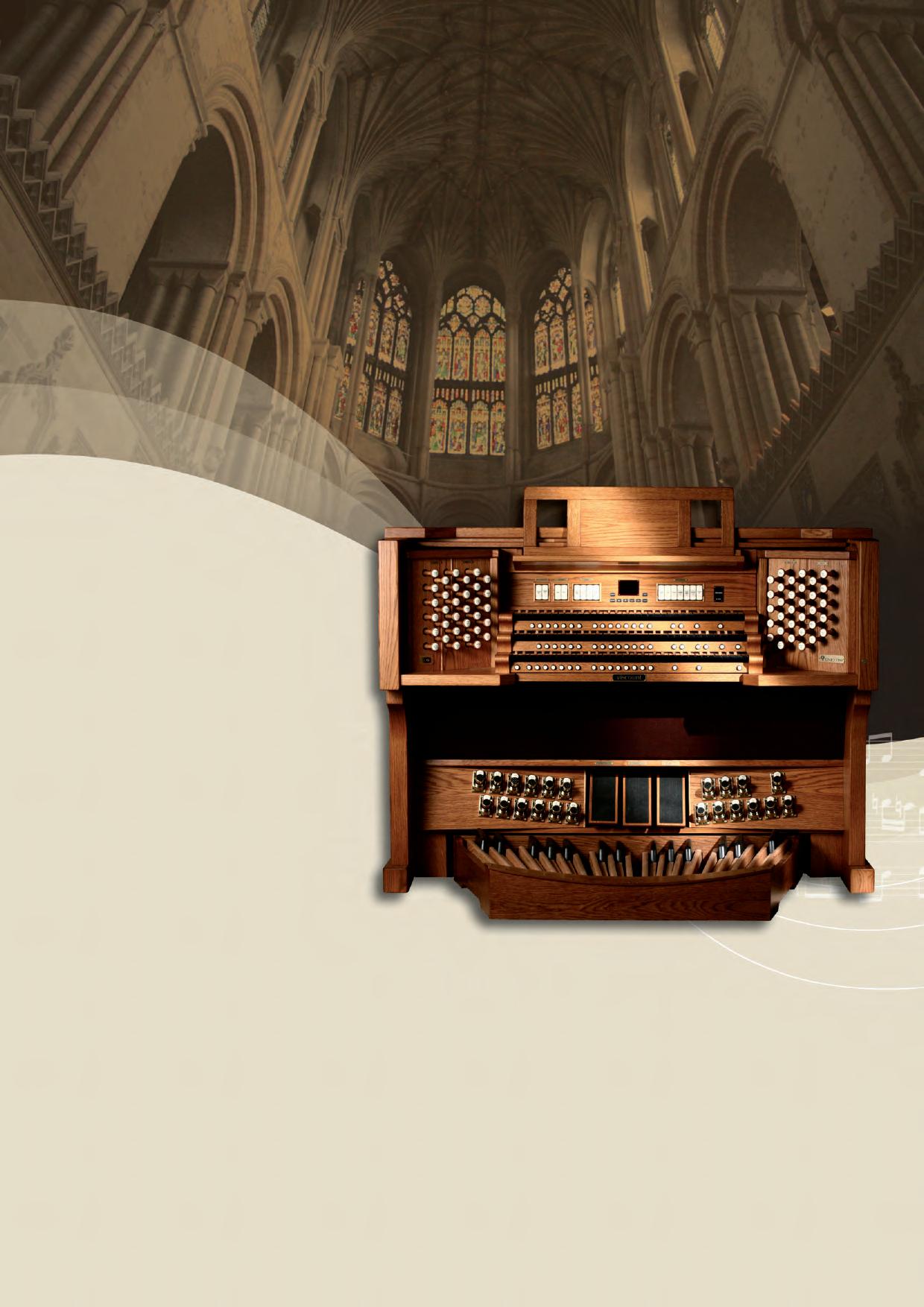
So that you can evaluate the wonderful sounds of we are offering you the opportunity to experience one of the new instruments for yourself within the venue.
To book an appointment or for further information, please call Viscount Organs on 01869 247333 or email sales@viscountorgans.net
ome and ear the ifference D
C ome and ear
ifference D
C
elebrity Recital Programme
H
the
H
C
www.viscountorgans.net www.physisorgans.comwww.prestigeorgans.com
60Seconds in Music Profile Stephen Darlington
Age: 56
Education details:
King’s School Worcester, Christ Church Oxford (Organ Scholar 1971-74)
Career details to date:
Assistant Organist, Canterbury Cathedral (1974-1978)
Master of the Music, St Albans Abbey (1978-1985)
Artistic Director, St Albans International Organ Festival (1979-1985) Organist and Official Student in Music, Christ Church, Oxford (1985-present)
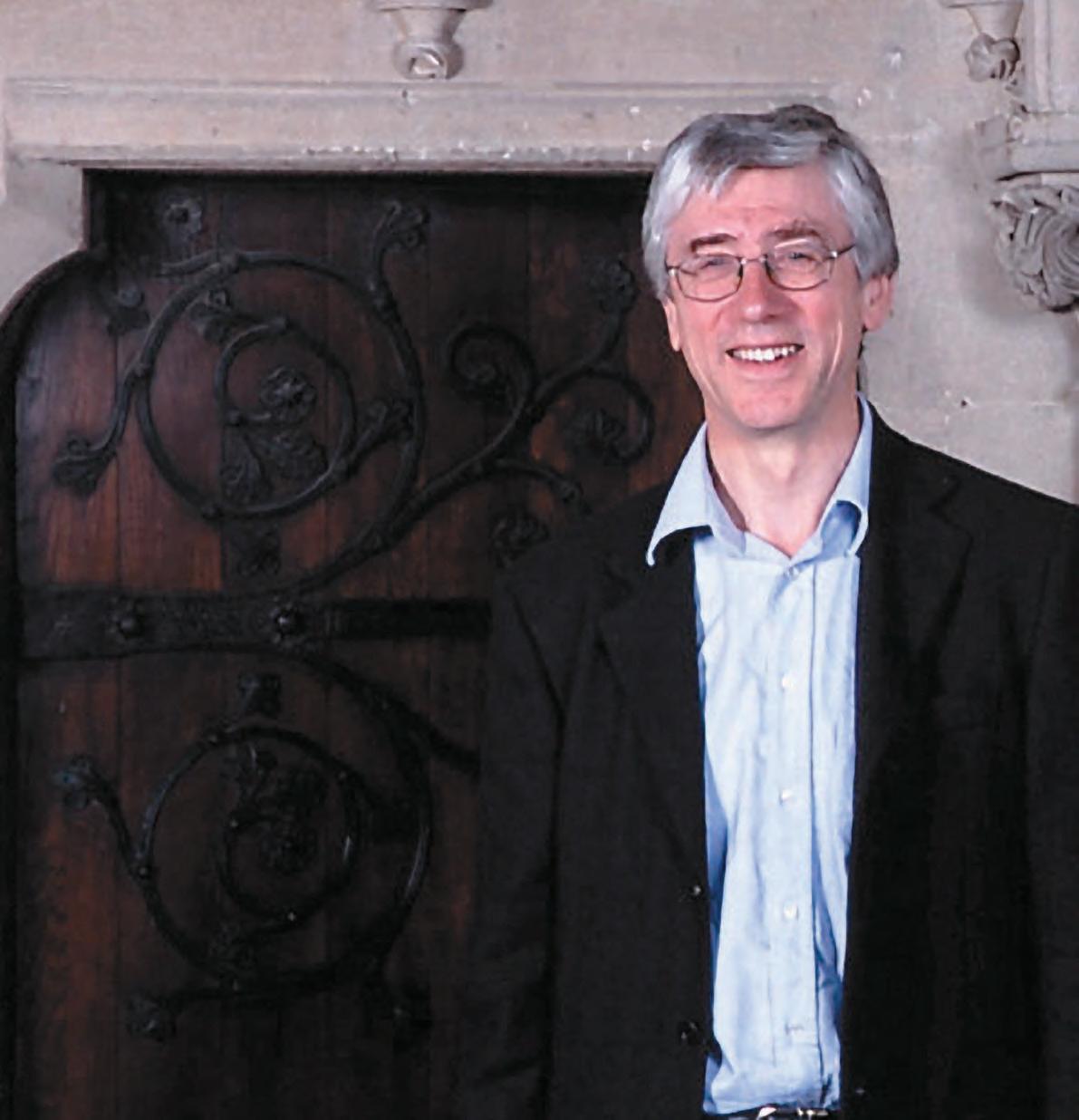
What do you enjoy most about working in a cathedral like Oxford?
The combination of maintaining the choral tradition of the Church of England within the context of a centre of academic excellence.
What have been some of the highlights during your career?
Actually there are too many to name! Sometimes they occur in surprising ways: a perfectly balanced performance of a Palestrina motet in a service features in my memory as much as conducting in Sydney Opera House or the Royal Festival Hall. The wonderful thing about music is that there are always new discoveries to be made.
Briefly tell us about a typical day at Christ Church?
The day starts with a rehearsal of the choristers from 7.55am - 8.55am. Some days are spent teaching undergraduates and graduates or lecturing in the Music Faculty, and others are spent in research. The afternoon rehearsal is at 5.00pm with Evensong at 6.00pm.
Do you still play much and if so, which organ pieces have you been inspired to take up recently and why?
Sadly I do not have time to play very much these days.
What or who made you take up the organ?
I was a pupil at King’s School Worcester when Christopher Robinson was in charge of the music in the Cathedral and Harry Bramma his assistant and Director of Music in the School. It was because of them that I was inspired to take up the organ.
Cathedral Music 16
Which organists do you admire the most?
The list of organists I admire is long! It surely includes of the older generation, Peter Hurford, Simon Preston and Gillian Weir, and of the younger generation Thomas Trotter, David Goode and my own assistant, Clive Driskill-Smith.
What was the last CD you bought?
Verdi’s Aïda.
What was the last recording you were working on? Music from the Eton Choirbook

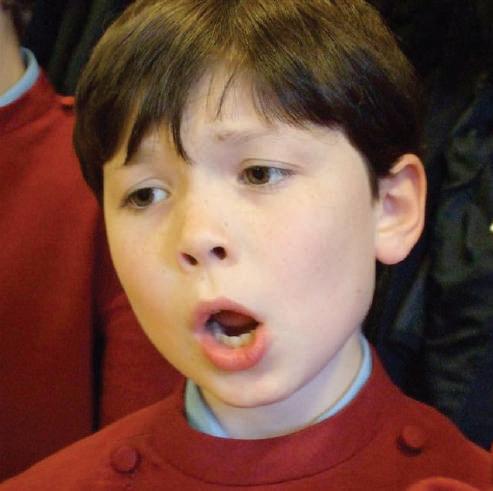
What is your favourite organ to play? Sydney Town Hall.
What is your favourite building? Canterbury Cathedral.
What is your favourite anthem? I don’t really have one. If pressed I would say Laudibusin Sanctis by William Byrd or The Twelve by William Walton.
What is your favourite set of canticles? Byrd’s Great Service.
What is your favourite psalm and accompanying chants? Psalm 84 (O how amiable are thy dwellings) to the chant by Thomas Armstrong.
What is your favourite organ piece? Passacaglia and Fugue in C minor BWV582 by J S Bach.
Who is your favourite composer ? Mozart.
Any forthcoming appearances of note?
Daily services at Christ Church are top of my list, but there are a few highlights in our busy concert diary, such as the launching concert of our two most recent recordings, (More Divine than Human: Music from the Eton Choirbook and Howard Goodall’s Eternal Light: A Requiem in Christ Church Cathedral on Saturday 13 June. Also, Handel’s Acis and Galatea (in a speciallycommissioned edition of Mendelssohn’s arrangement) in the Sheldonian Theatre on Friday 3 July and our Christmas Festival concert in St John’s Smith Square on Monday 14 December.
Have you played for an event or recital that stands out as a great moment?
Undoubtedly the highlight of my organ solo career was giving a recital in St Bavo in Haarlem. The thought that Mozart and Mendelssohn had touched the same keys was truly inspiring.
Has any particular recording inspired you?
Soile Isokoski conducted by Marek Janowski in a recording of songs by Richard Strauss: sumptuous singing and playing.
What are your hobbies?
Reading novels, walking, French wine.
Do you play any other instruments? Violin and piano.
What was the last book you read? White Tiger by Avarind Adiga.
What are your favourite radio and television programmes? Just a Minute and Blackadder.
What Newspapers and magazines do you read?
I have a rather eclectic taste in journalism ranging from the Daily Telegraph for sport, The Times for News and The Observer for weekend reflection.
What makes you laugh?
I see humour in almost everything: an ability to laugh is probably the most important aspect of life.
If you could have dinner with two people, one from the 21st century and the other from the past, who would you include?
William Shakespeare and Nelson Mandela. An unlikely combination but one which might produce an interesting outcome and menu!
What should be the role of the FCM in the 21st century?
At a time when choral music is more widely disseminated than ever before, it is comforting to know that there is an organisation devoted to the fostering of music in cathedrals. Its work in providing financial support is invaluable, as is its ability to focus discussions about the role of music in cathedral worship and the prospects for the future.
Cathedral Music 17
registrar@cccs.org.uk www.cccs.org.uk (01865) 260650 3 Brewer Street, Oxford OX1 1QW Christ Church Cathedral
Oxford Voice trials by arrangement for boys aged 7
School
SAFEGUARDING THIS PRICELESS HERITAGE
Bristol Cathedral Choir School –a Faith Academy
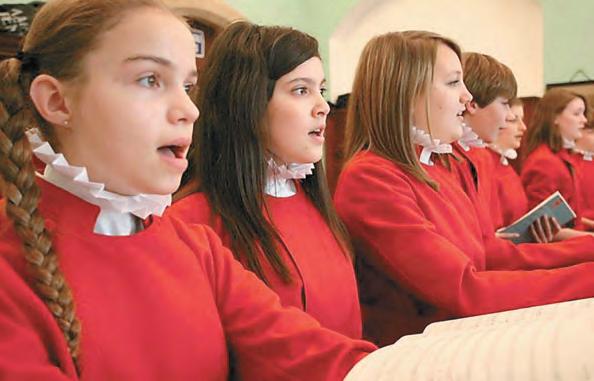
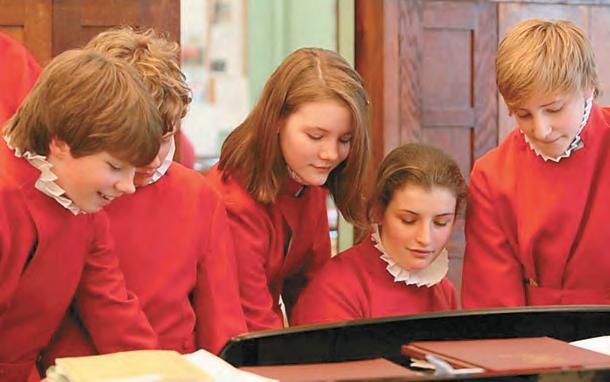 by Canon Wendy Wilby Precentor
by Canon Wendy Wilby Precentor
‘The choir is the lifeblood; the animating factor that turns a cathedral from a beautiful but silent place into one that reverberates with glory’. These words, found on the homepage of The Friends of Cathedral Music website, are embedded in the hearts of precentors everywhere who recognise just how extremely vulnerable cathedral choirs can be.
As Precentor of Bristol Cathedral, I too see this vulnerability. We precentors become like trained guarddogs! Our eyes and ears are open, listening out for attacks from without, and even, God preserve us, from within. We recognise the difficulties of recruitment, especially where boy choristers are concerned, we know how tight the budgets are for music, we observe the decline of the robed choir in parish churches and we struggle with colleagues about mission priorities. Perhaps we become a little bit on the defensive as we recognise all these external factors, and there is no doubt that we must always be open to change to serve our people under God. That said, we precentors do know the truth –of course, we know that the choir is the cathedral’s lifeblood.
Cathedral Music 18
Let me first of all draw you a picture of Bristol Cathedral. There is no doubt that this place of worship really is a ‘hidden treasure’ to be discovered and explored –found just a little way out of the city centre, but close to Bristol Harbourside, giving it, as Pevsner remarked: ‘The saltiest history of any in England.’ Its colourful history encompasses eight centuries. Its buildings range from the Chapter House, erected in the reign of Henry II, to the nave built in the reign of Queen Victoria and right through to the development at the north end in the reign of Queen Elizabeth II. Bristol is one of those six former abbey churches which became cathedrals at the Reformation under Henry VIII’s ‘New Foundation’. Before that it was an Augustinian Abbey run by the ‘black’ canons –ordained monks who led their lives according to the Rule of St Augustine of Hippo. There is certainly evidence of a school here, perhaps even a good number of centuries before the Reformation. Anyhow, the Henrician statutes stipulated that there should be six boy choristers supervised by one schoolmaster and one under-master, and amongst the offices of the Dean (Statute IV) was the duty that the boys ‘be faithfully instructed’. Statute XXVI provided for the boys’ education in grammar. Even though standards gradually declined, and by the time of Archbishop Laud’s visitation in 1634 the boys only had one master and there was an official complaint that the grammar boys never even turned up for religious services, yet there is no reason to think that these educational prerogatives were not adhered to. The Dean therefore seems to have had a duty of care for the choristers and grammar school boys. It is likely that the dormitory above the Deanery buildings was occupied by young male students, some of whom were involved in cathedral life as choristers.
This ancient story has taken us through the centuries and into the modernity of the 21st century now with a choir of six lay clerks, four choral scholars and several choristers which, in several combinations, sings six or seven services a week. Bristol Cathedral School has provided us with these boy choristers since records began, adding girl choristers to the choir only three-anda-half years ago when this independent school became coeducational. So we now have two separate top lines –boys and girls. The school itself has premises which adjoin the Cathedral creating a cloister garth. The buzz and bustle of young people joining the visitors and clerics is a constant feature .
Apart from our own choir, we are also blessed at our cathedral to be able to host many visiting choirs in the school holidays –they seem to enjoy coming to the city and our building, and we ourselves enjoy them very much. However, just occasionally we have had a silent week. These sorts of weeks are refreshing at first, but too many of them, and I get to musing about the vulnerability of our choir… or perhaps even the school. How could we possibly manage without this ‘lifeblood’? If the school ceased to function, the choristers, as we know them, rehearsing
daily at 8.15am and 4.15pm would stop.
Well, it was on 24 December 2006 that Frank Field MP wrote his article in The Times ‘The silence of the choirs’. I have to say that it was to be transformative for us at Bristol as we planned for our future during the next year. This is a little of what he said:
‘The future of Westminster Abbey’s choir is assured. But we have no such guarantee for most of our other great cathedral choirs. Some deans must be driven to despair about how future bills are to be met. But, to contradict one of Margaret Thatcher’s great sayings, there is an alternative that can secure the future of cathedral choirs while making a huge contribution to the serious teaching of music.
‘One reason why some choirs cost so much is that they are full-time and are nurtured in special choir schools. The schools are small because each cathedral needs only the best couple of dozen boys or, increasingly, girls in its area. It is this smallness that makes for their extraordinary cost. Smallness also involves elitism. If cathedral choirs are to survive it is important to break out of this elitism and return cathedral choir schools to what they once were: great schools educating significant numbers of pupils.
‘The government’s academy scheme could be the basis for establishing a series of music schools open to boys and girls who have an interest and aptitude in music. The cathedral choir schools could become the driving force behind this transformation by offering to convert into academies.

‘In return for receiving state funds, cathedrals would offer to spread their excellence through these new musical academies to a huge group of young people, many of whose musical talents remain starved of development. Local education authorities would play a part in ensuring that the academies strengthened music in other state schools.

‘The sound of this music would herald a great change in English education. Music would begin to regain its rightful place in the curriculum. And taxpayers’ attention would be drawn to how the excellence of a few is spread to many schools up and down our country.’
The Dean, the Headteacher, the Chair of Governors and the Precentor all agreed that this would be a wonderful step forward for our particular partnership of cathedral and choir school, and the ‘Short ride in a fast machine’ (to quote the title of a piece by John Adams) began! And this really was a rapid journey. We were fast-tracked towards Academy-status, opening in September 2008 as Bristol Cathedral Choir School. It is a new legal title to describe what we are, and the addition of the word ‘choir’ in the name gave it a permanence that would have warmed any precentor’s heart. The name of the school was even carved in stone over the archway of our new three million pound buildings. The Choir Academy is here to stay.
Journeys involving change are never easy and this one was no exception. There were times when I wondered just exactly what
Cathedral Music 19
Bristol Cathedral School
we were changing into. The government was adamant that we needed to have a different mindset. To train a handful of children to be choristers is not only elitist but totally against the inclusive nature of academies. To be an academy, the school needed to have singing at the very heart of its existence, not just as a bolt-on extra in the form of choristers. Of course, that latter statement is such a laudable aim. We are certainly not there yet, but now with a new Principal who has been a lay clerk at the Chapel Royal and a new Head of Specialism (music of course) who is a member of the Senior Leadership Team, we are well on the way to putting music as a high priority in the life of the school whilst maintaining the standard of excellence in the Cathedral Choir. Our successful Chorister Outreach Project, ‘Bristol Voices’, includes a junior choir made up of local primary school children that meets at the Academy weekly and we are gradually transforming and gradually looking outwards. Outreach is such a buzzword in our faith programmes that this direction just has to be right. Cathedrals, Bristol included, need to be outward looking if they are going to survive. The school itself used to be grant aided, offering free places to a number of boys, so this reversal to free education suits us very well also. What could be better than to offer the opportunity to sing in a cathedral choir to any child regardless of economic status? Anyone with musical aptitude can have a voice trial.

We are in the extraordinary, if not unique, position for a choir school of being an 11-18 secondary school. This means that boys and girls do not become full choristers until they begin Year 7. Our probationers, at the stage before we converted, were beginning to dry up and this placed a huge and worrying strain particularly on the boy choristers. Now we are absolutely full of probationers. We have developed our probationer programme until we have eight Year 5s and eight Year 6s plus one or two Year 4s. All these children have to fulfil an exacting programme that is strictly monitored before they can gain a place at the Academy in Year 7. Because they have attended worship at the cathedral on such a regular basis, eight probationers can enter the school each year. They are a mixture of boys and girls of course, but now each separate line is strengthening. The workload is divided equally between girl choristers and boy choristers.
To summarise; we at Bristol Cathedral are most grateful for the government initiative that has led us into working with a 21st century Choir Academy. We feel that we have indeed 'safeguarded this priceless heritage.
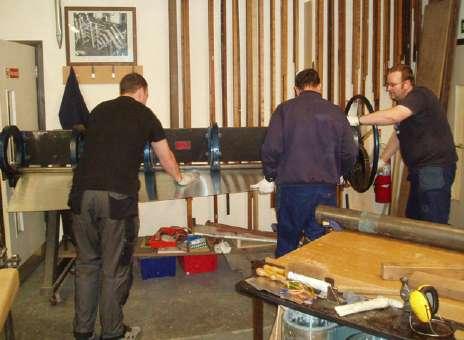


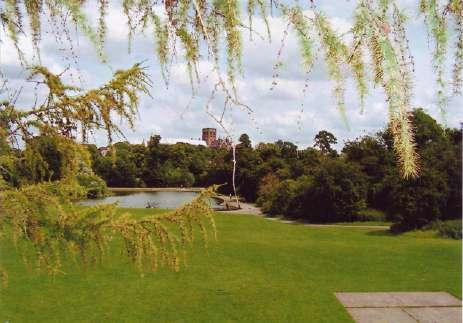
Cathedral Music 20
The future of Westminster Abbey’s choir is assured. But we have no such guarantee for most of our other great cathedral choirs. Some deans must be driven to despair about how future bills are to be met.
TALLEST CATHEDRAL SPIRE IN BRITAIN TURNS INTO A LARGE RED NOSE FOR COMIC RELIEF 2009
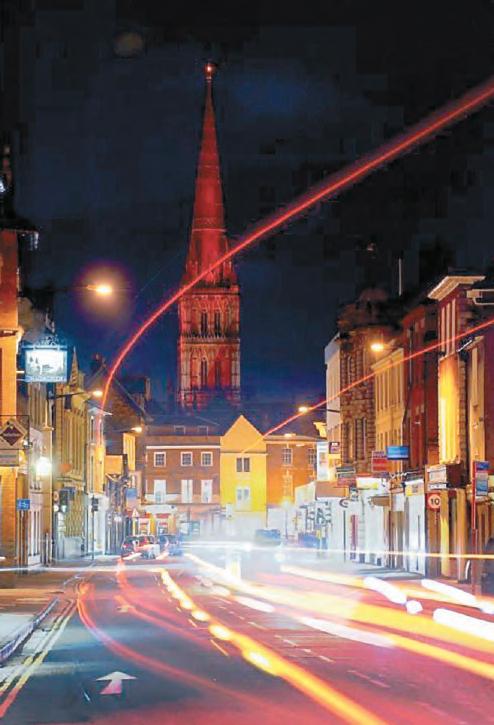
Salisbury Cathedral took part in Comic Relief’s Red Nose Day by turning its 404ft soaring spire red each night from Monday, 9 March through to Red Nose Day on Friday, 13 March. The Dean of Salisbury, the Very Revd June Osborne, said: “We’re very pleased to be taking an active role to support Comic Relief and being in a position to use our profile and sheer size to help. We are one of a number of iconic buildings in different parts of the country invited to ‘paint the town red’ to help raise awareness for the charity and its important work of addressing global poverty and injustice aspirations which match those of the cathedral. Salisbury Cathedral is also donating 20% of its income from visitors on Red Nose Day to the charity.
PANCAKES, PALMS AND PROBATIONERS
The young probationers (trainee choristers) of Salisbury Cathedral Choir learnt about the meanings of Shrove Tuesday and Ash Wednesday when they enjoyed cooking, tossing and eating delicious pancakes for breakfast with Canon Precentor, Jeremy Davies, before helping him burn last year’s Palm Sunday crosses to create the ash to be used in Ash Wednesday’s services in the cathedral.
They heard that ‘Shrove’ comes from the early English word ‘shrive’, meaning to forgive. It is also a Carnival (literally a ‘farewell to meat’) when all the fats and flesh are eaten up to prepare for the forty-days’ fast of Lent. The event is much looked forward to by the probationers. Jeremy Davies said: “I’ve hosted this special ‘pancake and palms for probationers’ breakfast on Shrove Tuesday for many years now and find it a perfect way of having a bit of fun whilst also explaining the true meaning of the day and the start of our preparation for Lent. This year for the first time we are ending with a pancake race outside the cathedral before the children rejoin their classmates for the school day!” During services in the cathedral throughout Ash Wednesday, the ashes prepared by the probationers are placed, in the shape of the cross, on the recipients’ foreheads as the priest says the words: “Remember that you are dust and to dust you will return. Turn away from sin and be faithful to Christ.’’
SOUTHERN CATHEDRALS FESTIVAL
2009 Salisbury Cathedral 15-18 July.
Southern Cathedrals Festival (SCF) 2009, the annual festival of choral music featuring the choirs of Chichester, Salisbury and Winchester Cathedrals, is hosted by Salisbury Cathedral from 15-18 July.
News from Choirs and Places where they sing
Celebrating the anniversaries of Handel, Haydn, Mendelssohn and Purcell, the choirs are joined by guest performers in a Festival which includes fourteen concerts, nine services, a choral masterclass and world premières by Barry Ferguson and Will Todd.
NEWS BITES
David Halls, Director of Music at Salisbury, is Festival Director. “It has been my privilege to watch the Festival develop over the past 25 years and my colleagues at Chichester and Winchester have helped me put together a dynamic programme which will undoubtedly deliver an exciting and forward-looking Festival. At its heart is the daily round of services that have been central to the Anglican church for centuries, here shared amongst the three cathedrals’ boys’ choirs and the girl choristers of Salisbury & Winchester. The choirs also join together in various combinations for three major concerts, ending with a performance of Mozart’s sublime Mass in C minor with Sarum Orchestra on the Saturday evening.”
The Festival opens at 4.30pm on Wednesday, 15 July with Choral Evensong sung by Salisbury’s girl choristers with Martin Ings on trumpet and Daniel Cook on organ and is followed by the Festival Launch Reception. Booking brochures, which include further information about the Festival and how to become a Patron, are now widely available. Full details can be found at: www.southerncathedralsfestival.org.uk or telephone the Department of Liturgy & Music, Salisbury Cathedral, 33 The Close, Salisbury SP1 2EJ –Telephone: 01722 555125 or e-mail: s.flanaghan@salcath.co.uk
NEW RECORDING FOR HEREFORD CATHEDRAL
A new CD of music by Herbert Howells has been recorded by the Choir of Hereford Cathedral ready for release during the summer. “It’s a couple of years since the Choir last made a CD –a highly acclaimed disc of music by the Tudor composer William Byrd,” said Geraint Bowen, organist and director of music at Hereford Cathedral. “This time we have gone for a complete contrast with the music of Herbert Howells [1892-1983]. The cathedral’s wonderful acoustic and world-renowned Willis organ are perfect partners for the choir in this kind of music. With a composer so closely identified with the three cathedral cities of Gloucester, Hereford and Worcester, and with their Three Choirs Festival, this seemed an obvious choice, especially as Hereford is hosting the Three Choirs Festival this August. Among the pieces that we have recorded are the three service settings that Howells wrote for each of the Three Choirs’ cathedrals, including the Hereford Service, which was first performed in 1970. Further information can be obtained from Hereford Cathedral Perpetual Trust (01432 374261; e-mail perpetual.trust@herefordcathedral.org).
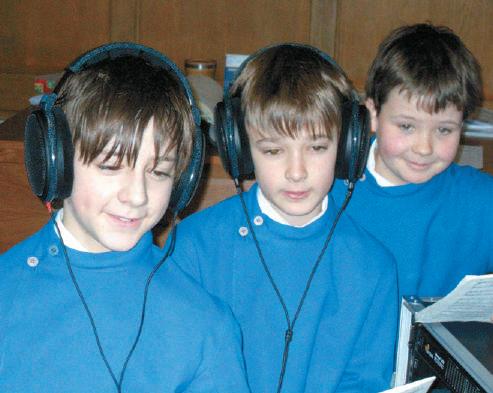
Cathedral Music 21
Photo: © Ash Mills
Choristers listening to recorded extracts. Left to right: Oliver Layton, Anthony Mansfield and Rory Turnbull
LIVERPOOL’S YEAR as Capital
Timothy Noon

Cathedral Music 22
of Culture 2008
When Prof Peter Toyne addressed the FCM National Gathering in St Davids several years ago, he spoke engagingly of how he had led Liverpool’s bid to become European Capital of Culture. I remember being struck by his assertion that the European bureaucrats had been particularly impressed when he took them to an ordinary, weekday Choral Evensong at the Anglican Cathedral. They had not encountered church music like that before and were especially amazed when he explained that a similar act of worship was taking place, simultaneously, at a cathedral at the other end of the street!
I am sure that there were far greater reasons of politics to account for Liverpool’s success in winning the bid but I do like to think that the contributions to the city’s cultural life offered by its cathedrals’ choirs might have helped a little.

Whatever the case, being European Capital of Culture in 2008 threw the spotlight onto Liverpool throughout the year and both cathedrals relished every opportunity this presented.
In January, the Archbishop of Canterbury visited the city and, during the Week of Prayer for Christian Unity, preached a moving sermon at Choral Vespers in the Metropolitan Cathedral to a congregation of about 2,000. The two cathedrals’ choirs joined forces for the occasion, the first of several collaborations throughout the year.
In May, Liverpool hosted the RSCM’s national Celebration Day and the two cathedral choirs were joined by over 500 singers from the North West, under the expert guidance of Brian Kay. Then, at Pentecost, the ‘Two Cathedrals’ service began at the Metropolitan Cathedral, with the choirs and congregation then processing –in glorious sunshine! –all the way down Hope Street, to Liverpool Cathedral, where the service concluded. At the halfway point, the procession paused for the blessing and unveiling of a marvellous new sculpture. Symbolising Christian Unity and paying tribute to the pioneering work of Bishop David Sheppard and Archbishop Derek Worlock, this monument takes the form of two open doors pointing down the street.
In June the choirs were together again for a performance of Britten’s War Requiem in which singers from Liverpool’s twin city, Cologne, were involved. Including choristers from all three cathedrals, a boys’ choir of about one hundred was assembled, together with the combined forces of the Liverpool Philharmonic Chorus and the voluntary choirs and lay clerks of each cathedral. Many of the performers were able to go to Cologne, the following week, to repeat the concert.
During the year, both cathedral choirs also collaborated with other singers, keen to experience Liverpool in its special year. In May, the Metropolitan Cathedral hosted the conferences of the Choir Schools’ Association and the Cathedral Organists’ Association at the same time. A concert was held to highlight the work of choristers within choir schools and to showcase some of the outreach work currently being undertaken across the country. One hundred and fifty choristers came from as far afield as Rochester and Edinburgh, Lincoln and Winchester, and they made a magical sound in the resonant space of the Metropolitan Cathedral.
Later in the summer, the city welcomed the Choristers of Wells Cathedral and the Schola Cantorum of the London Oratory School, the latter group performing Roxanna Panufnik’s Westminster Mass with the Metropolitan Cathedral Choir.
The BBC paid close attention to Liverpool’s cathedrals during 2008, broadcasting Sunday Worship on Radio 4 from Liverpool Cathedral on Holocaust Memorial Day and on Easter Day and from the Metropolitan Cathedral at Pentecost, and Midnight Mass. Both cathedrals have been featured on Songs of Praise and BBC1’s Easter Morning television broadcast came live from the Metropolitan Cathedral. Radio 3 broadcast Choral Vespers live in November, at the start of a symposium of bishops from Europe and Africa, featuring a homily from the Archbishop of Abuja, and music by James MacMillan and Kenneth Leighton.
There was more contemporary music from Scotland at the end of the year, as the Metropolitan Cathedral’s Concert Society bravely undertook to commission Sir Peter Maxwell Davies to compose a substantial work in celebration of the city’s status. Hymn to the Spirit of Fire is scored for two choirs and organ, and loosely based on the ancient hymn, Veni creator. The fifteen-minute work was dedicated to Sir Paul McCartney and received its first performance, in the presence of the composer, at the Metropolitan Cathedral on Saturday, 13 December 2008, bringing the year to a glorious conclusion.
Cathedral Music 23
60Seconds in Music Profile Simon Johnson
Age: 33
Education details: Chorister, Peterborough Cathedral; Music Scholar, Bloxham School; University of East Anglia. Organ teachers: Malcolm Tyler, David Sanger, Anne Page and Marie-Claire Alain.

Career details to date:
Organ Scholar, Rochester Cathedral; Organ Scholar, Norwich Cathedral; Organ Scholar, St Paul’s Cathedral; Director of Music, All Saints’ Church, Northampton; Assistant Master of Music & Director of the Abbey Girls’ Choir, St Albans Cathedral; Organist & Assistant Director of Music, St Paul’s Cathedral.
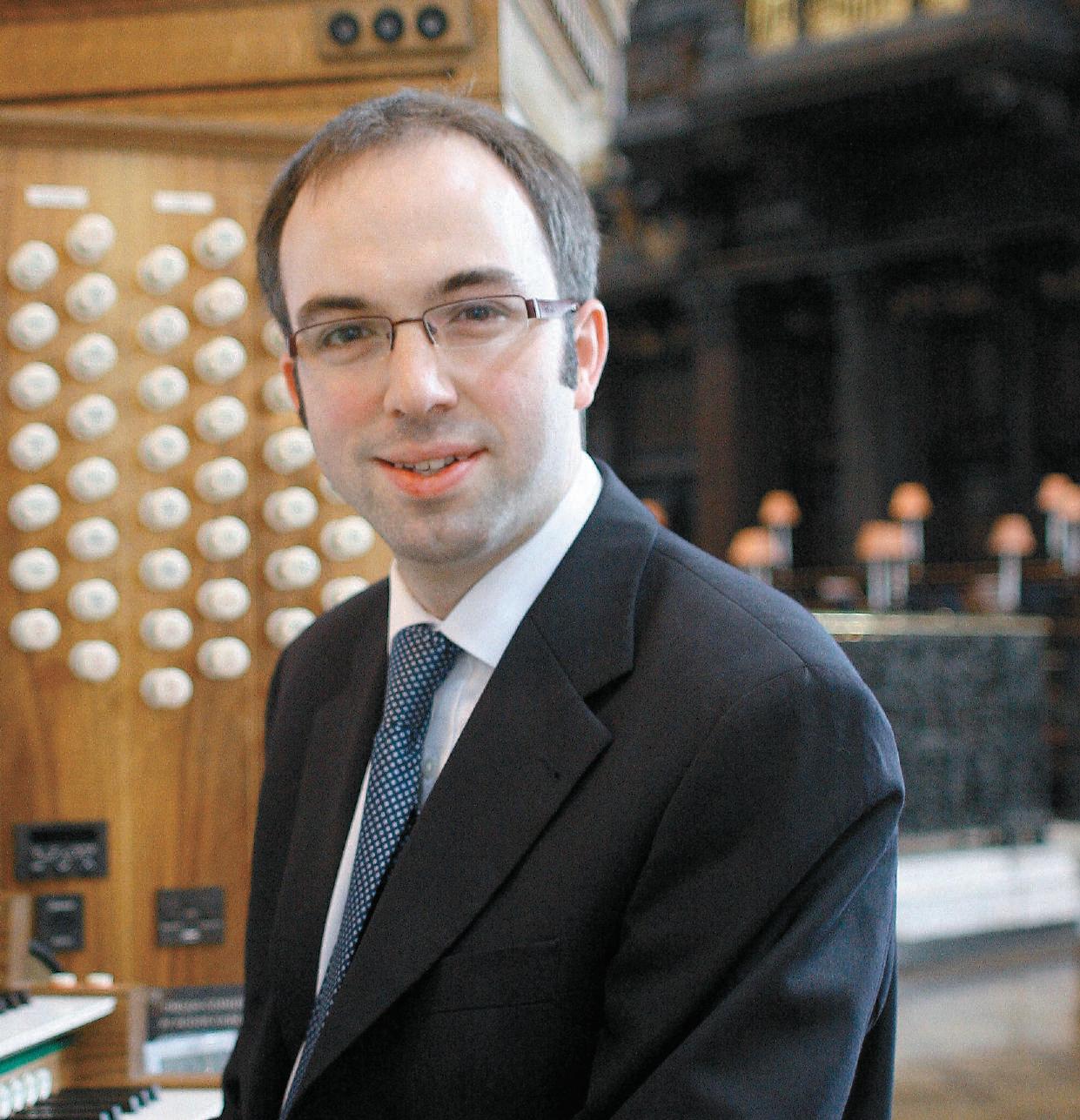
What do you enjoy most about working in a cathedral like St Paul’s?
The building: a wonderful and immense statement of architectural purity.
What did you enjoy most at St Albans?
The people who I was working with; it is a very happy place.
Briefly tell us about the organ work at St Paul’s?
The Director of Music, Andrew Carwood, is a wonderful choir trainer, but doesn’t play the organ. So basically I have responsibility for anything to do with organs and organ playing in the Cathedral. Obviously, the Grand Organ is sizeable and gets some pretty heavy usage so it takes a fair amount of maintaining and I’m regularly in contact with the builders and tuners. There are other organs under my care too: the legendary Willis on Wheels, a Jennings Organ in the Choir Practice Room, the Tickell Chamber Organ and, soon, a new organ by William Drake in the OBE chapel. In terms of playing there is nominally a set pattern for the week but I don’t think there has yet been a normal week, since I’ve been here. I’m usually to be found playing the organ for the weekend choral services as a minimum. I am very ably assisted by a sub-organist and an organ scholar and have some responsibility in their development, but they are both so good that I hardly think that they need my help. There is some educational work and I’m also responsible for engaging recitalists.
Cathedral Music 24
How do you cope with the reverberation?

In many ways I’m still finding out. I think the key is giving space to everything. That doesn’t necessarily mean playing slower, though sometimes that can help.
At which cathedral would you most like to be the Director of Music?
I have an amazing job at the moment and am not thinking too far ahead. I’ve run choirs before so I’m not feeling any pressure to go out and prove any points either to myself or anyone else. If/when the time comes, I’ll go wherever will have me!
What organ pieces have you been inspired to take up recently and why?
I’ve just learned the Three Preludes & Fugues Op 37 of Mendelssohn. They are dedicated to Attwood, who was Organist at St Paul’s and a good friend of the composer, so it seemed appropriate for me to learn them in the anniversary year.
Have you been listening to recordings of them and, if so, is it just one interpretation or many, and which players?
Generally I prefer to find my own way when I’m learning new music. I have John Scott’s recording of the Mendelssohn and will put that on if I start getting above myself!
What or who made you take up the organ? Being a chorister.
Which organists do you admire the most?
Too many to mention by name. I certainly have a great admiration for those who are able to pursue broader musical interests outside of the cathedral organ loft, whether that be as outstanding choir trainers, recitalists, orchestral conductors or composers, whilst maintaining a high standard of playing.
What was the last CD you bought?
Abbado’s Brahms Symphonies.
What was the last recording you were working on? Pèlerinage, a CD by the St Albans Abbey Girls’ Choir.
What is your favourite organ to play? St Paul’s.
What is your favourite building?
Peterborough Cathedral.
What is your favourite anthem?
Britten’s Rejoice in the Lamb.
What is your favourite set of canticles?
Gibbons 2nd Service
What is your favourite psalm and accompanying chants? 131 (Knight).
What is your favourite organ piece?
Reubke Sonata.
Who is your favourite composer?
J S Bach.
Any forthcoming appearances of note?
Winchester Cathedral 5 May, St Paul’s Cathedral 6 August, Nôtre-Dame de Paris 25 April 2010.
Have you played for an event or recital that stands out as a great moment?
The installation of Jeffrey John as Dean of St Albans was a very special occasion.
Have any particular recordings inspired you?
Piet Kee’s Bach recordings at Haarlem. I used the word ‘space’ when talking about organ playing in a previous answer and I think that those recordings are a supreme example of how it can be achieved.
How do you cope with nerves and pressure?
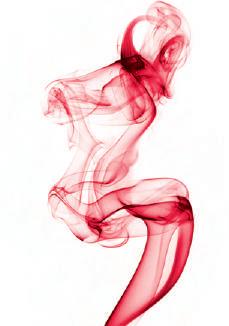
Lots of practice and keeping a cool head (the two things being related). Also by building up experience of dealing with all kinds of pressure and accepting different situations for what they are. The greatest amount of pressure that I have ever dealt with was having a near fatal car accident and then spending two months wondering if I would walk, let alone play the organ, again. That kind of puts the nerves that one might experience whilst improvising HM The Queen down the nave of St Paul’s into some sort of perspective, and makes the whole thing rather more enjoyable too.
What are your hobbies?
Funnily enough, given my last answer, walking! I also like football (Kettering Town and Norwich City FCs) and play snooker. I enjoy a good restaurant, especially if I’m with my fiancée, Laura, and/or my family.


Do you play any other instruments?
Cello and Piano. I also compose a little.
What was the last book you read?
Half of a Yellow Sun by Chimamanda Ngozi Adichie.
What are your favourite radio and television programmes? What Newspapers and magazines do you read?
I like Spooks, House & Hustle, read The Guardian and, of course, CATHEDRAL MUSIC
What makes you laugh? Organ scholars.
If you could have dinner with two people, one from the 21st century and the other from the past, who would you include?
J S Bach and Peter Hurford. I’m generally quite quiet at the dinner table.
What should be the role of the FCM in the 21st century? To carry on doing what it already does.

Cathedral Music 25
10 days of world-class music-making 9 – 18 July 2009 organfestival.com 01727 846 126 9 – 18 J organfe rg 017278 uly 2009 estival.com va 846126 8
The Singingmen’s Supper
At the foundation of Bristol Cathedral in 1542 Henry VIII made stipends available for an Organist, Quoristers, and Singingmen to provide music for the daily liturgy. Since the original stipend was made, countless others have succeeded the original six –John More, Thomas Sexten, Nicholas Crepulgate, John Morgan, John Bedell, and John Archade –in serving the glory of God with the gift of their voices in the Cathedral Church of the Holy and Undivided Trinity.
At a gathering to commemorate and give thanks for the service of these original six Singingmen, and their successors, to the musical and spiritual life of this Cathedral Church, and on behalf of the current Singingmen of Bristol Cathedral, the Senior Lay Clerk invited a guest speaker to offer some thoughts and reminiscences on the contribution of Singingmen to the English cathedral tradition.
The speaker finished his speech by proposing a toast, on behalf of the current Singingmen of Bristol Cathedral, to those who have served as deans, canons, and organists of Bristol Cathedral.

The Dean accepted this toast and presented the Senior Lay Clerk with a gift of £6 13s 4d (£6.69 in new money), which matched the original stipend given to the six original Singingmen.
The Dean proposed a toast to: Messrs More, Sexten, Crepulgate, Morgan, Bedell and Archade and all Singingmen of Bristol Cathedral. To which all responded: The Singingmen of Bristol Cathedral.
This Grace was then tunefully sung:

You will be mighty glad to know Our Grace will not be long We will not let our food go cold
Whilst we indulge our song. But a Singing Men’s good supper (Is the meal light or heavy?)
Should have a very tuneful grace Whether or not there’s gravy.
Of course our thanks are most grateful For nibbles, soup or cod
For all who have prepared this feast And that includeth God.
While we’re glad for acknowledgement
And six whole quid, plus pence Might we point out that riches then Doth not make current sense?*
So bow your heads and close your eyes, Feel free to lick your lips
Whilst we, in tune, sing loud and clear With not a thought of tips. Clasp your hands and think good thoughts ‘Fore raising forks and glasses, Most reverently we now shall sing Deo gratias.
Words by the Chaplain to the Lay Clerks: Tune by Professor Philip Wilby.
*The original script contained a verse deemed unsuitable for this solemn occasion: readers who would like to know what it was can obtain a copy from the secretary c/o the Abbey Gatehouse: please enclose an SAE.
Cathedral Music 26
CAMPAIGN FOR THE TRADITIONAL CATHEDRAL CHOIR

President: Dr Simon Lindley
Michael Howard: A Choral Pioneer
CTCCis pleased to announce the release of a new CD–
Michael Howard: A ChoralPioneer – featuringrenovations of stereo recordings of Music for the Common of Apostles and Music for the Feast of Christmas

Michael Howard was a vice-president of the Campaign until his death in 2001
A free copy of the CD is being offered by the Campaign to every enquirer, together with a year’s complimentarysubscription to our bulletin and newsletter


To take advantage of this offer, simply send in your request to:
David Watson
CTCC
26 Syke Green

Scarcroft
LEEDS LS14 3BS



West Yorkshire
www.ctcc.org.uk

‘The Most Beautiful Sound in the World’
New York Times

Official UK Supplier of ORGANMASTER Shoes 43 The Hop Pocket Craft Centre Bishops Frome Worcestershire WR6 5BT Tel 01885 490375 Fax 01885 490615 e-mail sales@allegro.co.uk www.allegro.co.uk The specialist mail order supplier for organ and choral music. Mens in Black £49.95 Ladies in Black or Silver £44.95 Half sizes available. Other colours available to order. Have you seen us online… www.allegro.co.uk Huge catalogue of thousands of printed music titles and CDs - why not take a look! Cathedral Music 27 ROYAL SCHOOL OF CHURCH MUSIC Transforming, enabling and inspiring worship An educational Christian charity, enabling the best use of music in worship within churches, schools and communities. A network of over 9,000 members worldwide Education programmes for singers, musicians and worship leaders of all ages and abilities Liturgy planner, magazine and support services for members Short residential courses, festivals, local workshops and training days Publishing and sales of music and training resources 19 The Close, Salisbury SP1 2EB, UK +44 (0)1722 424848 enquiries@rscm.com www.rscm.com
Singingmen & Drinkingmen
Andy Marshall, Lay Clerk, Bristol Cathedral
Since the foundation of Bristol Cathedral in 1542, the lay clerks at Bristol have enjoyed many benefits of being at the heart of a thriving city. Although the working life of the cathedral choir has doubtless changed with the ebb and flow of history, we are sure that one constant will have been the great sense of camaraderie enjoyed by the members of the back row. The lay clerks’ vestry has in recent times been a relatively young one with a large contingent of choral scholars from Bristol’s two universities helping us to keep our feet on the ground (and often in the pub!). The enduring friendships

made in the choir are a consequence of the genial atmosphere in the lay clerks’ vestry and an active social life outside of the cathedral. Whilst the lay clerks won’t lay claim to a single pub being their home from home, they are well-known in many in the Clifton area such as the Alma Tavern, The Mall and The Albion where, as The Singingmen, they have a very successful track record in the pub quiz. Aside from frequent visits to Clifton’s pubs, the lay clerks have a variety of events which have become an essential part of the Bristol tradition. The Advent Feast, hosted by one of the lay clerks, allows the men and their better halves to
get some respite from the hectic run-up to Christmas and has become so popular that this year a five-course dinner was prepared for 30. The latest addition to the social calendar is the Singingmen’s Supper which was held for the first time last July and celebrates the preceding year’s singing and the first six Singingmen who started this fine tradition. To further display our friendliness we even remember poor Paul Heath who was dismissed as Organist in 1682, through the wisdom of the then Dean and Chapter, for lethal drunkenness and barbering on the Sabbath; a lesson for us all there perhaps!
LAY CLERKS’ TALE Where do lay clerks hang out in your part of the country? If your local hostelry is worth a mention drop the Editor a line along with a photo of the lay clerks partaking of a pint.
Cathedral Music 28
CORPORATION OF THE SONS OF THE CLERGY 355th Festival Service

Tuesday, 12 May -5.30 pm St Paul’s Cathedral
Three choirs will take part from Exeter, Salisbury and St Paul’s Cathedrals.
Free tickets are available: send SAE to The Registrar, Corporation of the Sons of the Clergy, 1 Dean Trench Street, Westminster, London, SW1P 3HB.
Tel: 020 7799 3696
www.clergycharities.org.uk
MATTHEW COPLEY
ORGAN DESIGN 87 Maple Road, Surbiton, Surre
www.stpauls.co.uk
ST PAUL’S CATHEDRAL SUMMER ORGAN RECITALS

21 May
Film Night
David Briggs will improvise a soundtrack to Cecil B DeMille's silent classic The King of Kings
11 June
Bach, Mozart, Franck, Mendelssohn, Conte, Liszt
Performed by David Higgs
16 July
Bach, Buxtehude, Heiller
Mendelssohn, Reger
Performed by Tim Wakerell
6 August
Mendelssohn, Bonnet, Karg-Elert, Widor, Johnson, Liddle, Harvey
Performed by Simon Johnson
3 September
Marchand, Mendelssohn, Franck, Purcell, Liszt, Bach
Performed by James O’Donnell
All recitals start at 7.00pm
Tickets: £10/£7 concs
Season tickets: £40/£28
www.ticketweb.co.uk
0844 4771000 (24 hrs)
Tel: 020 8390 5059 Fax: 01932 247317
Email: info@matthew-copley.co.uk
Web: www.matthew-copley.co.uk
THE FIRST ANNIVERSARY OF THE NEW ORGAN IN

ST MARY’S RC CATHEDRAL, EDINBURGH
21st April 2009 at 8 pm
Music for 2, 3 & 4 players, with organists from St Mary's RC and Episcopal Cathedrals, Edinburgh. Music from opera to tango! Including music by Soler, Hampton, Fish, Rossini, Roß, Thayer. Admission free (retiring collection.)
19th May 2009 at 8 pm
Jazz organist Barbara Dennerlein - www.barbaradennerlein.com
Admission £8/£6 concessions
" ...awesome technique and a prodigious feel for the dynamic range of her instrument." (Jazzobserver, USA)
" ...you can't help wondering: How did this fräulein get so funky?" (Harper's Bazaar)
In association with The Jazz Bar, Chambers Street, Edinburgh, (http://www.thejazzbar.co.uk/) where Barbara will play a concert on Hammond B3 organ the following evening, with her trio. (A Bridge Music presentation, with support from The Scottish Arts Council.)
16th June 2009 at 8 pm – Simon Nieminski (St Mary's RC Cathedral)
Request Recital. The programme will be entirely by audience request! Prospective attendees can email requests to organist@stmaryscathedral.co.uk.
Admission free (retiring collection.)
Edinburgh Fringe recitals: Saturdays at 5pm:
August 8th: Simon Nieminski (St Mary's Cathedral)
August 15th: Stuart Nicholson (Birmingham Cathedral) and Victoria Green
August 22nd: Jeremy Cull (Reid Memorial Church, Edinburgh)
August: 29th: Nicholas Wearne (St Mary's Episcopal Cathedral, Edinburgh)
Cathedral Music 29
The Klais Organ of BATH ABBEY Peter King

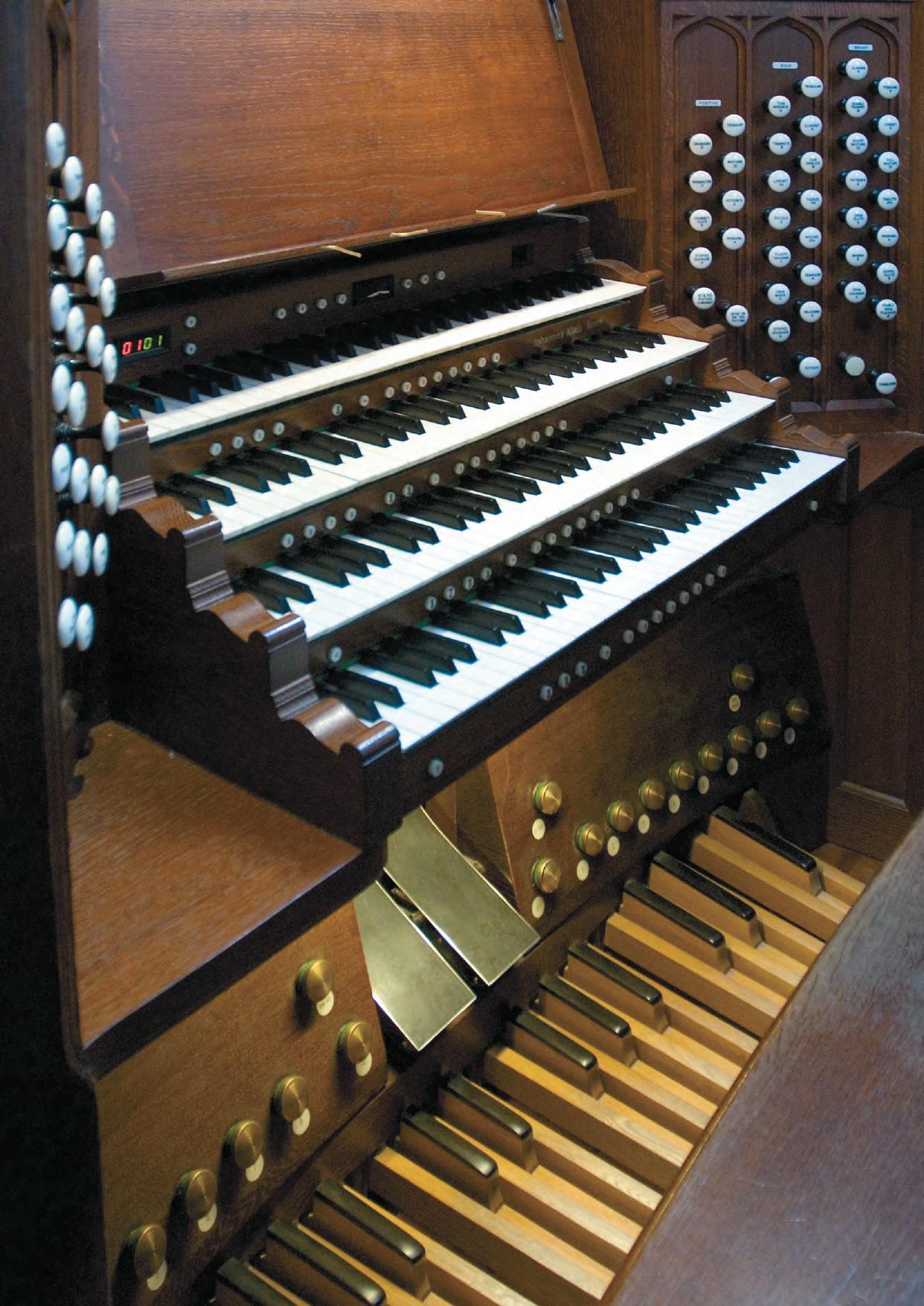
Cathedral Music 30
When is an organ not an organ? Possibly when it’s been re-built so many times it no longer speaks with a distinctive voice and doesn’t know what it is. By the time the organ in Bath Abbey was subjected to review in 1990 it had been rebuilt and enlarged no fewer than four times (and by three different firms if you include the original builder), and on two of those occasions it had been moved to a new site within the building. As in so many great churches in England, the story goes back to the mid-nineteenth century and the Victorian obsession with removing quire screens to create a vista through the length of the building. This, of course, led to the search for a suitable home for the organ which had previously stood on the screen. The search has met with varying success in different establishments up and down the country, and in Bath Abbey it took several attempts before the present solution was found.
In France, Germany or Holland the organ would have gone straight to a gallery on the west wall, or possibly into a swallow’s nest, high up the nave wall immediately beneath the vault. This position, by the way, is extraordinarily effective; the sound, having nowhere else to go, seems to run the length of the vault and get reflected straight down to the church floor. It is interesting that manual divisions placed near the vault often speak in the building with the greatest clarity. At the famous Schnitger Organ at St Laurence in Alkmaar this is so much the case that even the resident organists can often not tell whether a visiting organist is playing on the Bovenwerk, or on the much nearer Rugwerk. Be that as it may, the tradition in Britain is that the choir sings not in a gallery, but antiphonally in stalls in the Quire, as successors of the preReformation monks. The great organs on mainland Europe are used primarily for driving congregational singing, and for solo repertoire; for choral accompaniment a smaller Chor Orgel, or Orgue de Choeur is provided near the singers. For

much of the Anglican repertoire this simply will not do. The music of S S Wesley (eg Ascribe unto the Lord and The Wilderness) gave rise to a tradition of integrated, symphonic organ writing (by Parry and Stanford and their successors) which demands a large and colourful organ in close proximity to the singers. It is interesting to note that Wesley was a champion of Father Willis and that Willis invented departmental thumb pistons, an essential tool of the accompanist’s art.
In 1868 Bath Abbey was given the Gilbert Scott treatment and, amongst other alterations, the stone quire screen was swept away and the building left to display all it has in little more than a single glance. A new organ was supplied by William Hill & Son and housed on the floor of the north transept. It had four manuals and pedals and 41 stops. It can’t have been altogether satisfactory because within only a few years it was moved out of the transept, enlarged to 52 stops and placed on steel girders underneath the north and south crossing arches (where the new wooden quire screens with their exuberant carved angels now stand). Large pedal pipes remained in the transept. Photographs show how unsightly the arrangement was. This too gave rise to dissatisfaction and the organ was again moved –this time back into the north transept, but in a gallery and with a fine neo-classical case, both designed by Sir Thomas Jackson (whose other organ cases include The Sheldonian Theatre and Brasenose, Wadham and Hartford Colleges in Oxford). At this point the organ had 54 stops. Following war damage the organ was again enlarged, this time to 58 stops, and it was given a new Tuba stop (1948). In 1972 the organ was again rebuilt and further enlarged, to 67 stops; on this occasion the additions included a new Rückpositiv division, in a case bracketed out from the balustrade, designed by the Abbey’s then architect, Alan Rome. It nicely echoes the silhouette of the main case.
Cathedral Music 31
The Cymbelstern, the Cornet (with lead conduits from the Great windchest), the swell trackers, and the backs of the case pipes (Double Open Diapason)
By 1990 there were pipes and actions from every period of the organ’s life –each representing the fashions of its period; there were also actions with an age difference of approximately a century, all working at different speeds and all in different stages of decay. My investigations as to how to solve various problems with the instrument raised more questions than answers and it became clear that the time had come to spend hundreds of thousands of pounds rather than tens of thousands. Of course, no PCC is likely to spend that sort of money on the unsupported word of an employee so we invited Nicolas Kynaston to Bath to draw up a report on the instrument. It came as no surprise that he recommended a complete rebuilding of the instrument with one new action and a new internal design which would allow all departments direct speech into the building and ease of access for maintenance; further patching and cosmetic alterations would be a waste of time and money. It was decided to say farewell to the old organ which had given much pleasure during its life, but which had by now been subjected to as much surgery as it could take. Any parts of the old organ thought valuable would be re-used in the new. This included the Jackson/Rome cases and any pipes thought suitable by the builder, organist and consultant.
Had the organ’s history been different, if it had been of the Willis I - III tradition, and we can all cite our favourite examples, or a fine Hill in the Eton or Lichfield mode, then our solution would have been different; but at Bath there was no longer a unified instrument with a distinctive voice, more a collection of departments each representing the taste of its
time. Interestingly, because it had been so altered over the years, those in the know at the British Institute of Organ Studies (BIOS) thought the old instrument not worth recording by photographs, measurements etc, even though they were offered the opportunity to do so.
Several critical decisions had to be made. Firstly it was decided that the existing position, on a gallery in the north transept represented the best compromise between the various demands of acoustic, liturgy and the architecture of the building. Fortunately the building is fairly wide and, with the nave only five bays long and the presbytery three, not over long, so the transept position, while not ideal, works well. There is no room to squeeze an organ into the aisles, nor is there a triforium gallery, so there was no danger of these less satisfactory compromises.
Another decision was the choice of builder. On the advice of Nicolas Kynaston four firms were invited to Bath to spend a day inside the organ and to tender their scheme for rebuilding the instrument in a way that would bind it together musically, and which would ensure its long-term reliability. The four firms were chosen by the organist (NK “You’re the customer; you must choose the builders you like.” PK “OK, but you’re the consultant so you must tell me if I go off the rails”). Here it must be clearly stated that at Bath Abbey nationality was not an issue. Four firms were selected on the basis of their world-wide reputations, achieved through building (or rebuilding) large, cathedral-style instruments. It is true that from the beginning we gave serious consideration to an instrument with mechanical action, though this was

Cathedral Music 32
The 16’ Pedal chest. The mouths belong to the Open Diapason 16’, the reed is the Posaune (the loudest pedal stop), the wooden pipes are the Violone, and (in front) the Bourdon.
never a condition. For this reason we included in the list firms which had a track record of building large organs with mechanical action. As it happens, two of the firms were English, one was Austrian and one was German.
The Klais scheme won the contract because of its imagination, the clarity with which it was presented, the obvious thought that had gone into it, and because of the willingness of the firm to engage in discussion and to modify their plans to our own ideas. In our strivings for the best results the designs went through several modifications before the organ was built. Indeed, in their desire for excellence, the Klais firm made some modifications even as the instrument was being installed, and at no extra cost. I have never regretted the decision to award the contract to Firma Klais in Bonn. On the contrary, I believe that the instrument has entirely vindicated our decision and has proved wrong the advisory body who opposed the scheme principally on the grounds that they would have preferred the contract to have been awarded to a British firm. Certainly, when he granted a faculty for the building of the organ, the Chancellor of the Diocese ignored all the recommendations stipulated by that body when they eventually and grudgingly gave their approval.
So what did Klais actually do? Firstly, they designed an entirely new structure and layout for the instrument. This included retaining the Jackson/Rome case (but not most of the case pipes) and the reservoirs (interestingly, all four firms who tendered said they would re-use the reservoirs), the stop knobs (which were re-engraved) and the pipes
thought most valuable. The Gothic design of the stop jambs was retained as it is integral to the Jackson case, and new carved key cheeks added in the style of Hill’s work of the 1900s. In January 1996 the old organ went to Bonn almost in its entirety. All that remained were the lowest six pipes of William Hill’s Double Open Diapason 32’ and the Positive case, which couldn’t be prised off the balustrade! The much larger Jackson façade went to Germany for restoration and completion. Twelve months later, in January 1997, the organ returned, load by load and was assembled in its new form.

The most noticeable difference from before as one looks at the instrument is that it is now taller. This is because the Jackson case has been raised 18” to accommodate the new Solo division which is placed at gallery level, either side of the console. The panels in this area have been replaced by carved fretwork to allow egress of sound from the pipes behind. The new carving reflects the design of four similar fretted panels amongst the linen-fold panels on the balustrade. Furthermore, the main case has been given a back and sides, and the towers roofed in. Previously Jackson’s work had been a façade rather than a true case. All the display pipes in the main case are new, the lines of their mouths running inversely to their tops –as originally drawn by Jackson, but not as installed by Norman & Beard in 1914. All the manual divisions and the 8’ Pedal division are contained within the two cases. The 32’ and 16’ Pedal division is placed behind, where there is a veritable forest of wooden pipes, the 32’ being independent from the 16’ Open Wood. The only other pipes not contained within the

Cathedral Music 33
The Glockenspiel being installed at the top of the organ
casework belong to the Solo Tuba, which stands on its own high pressure chest (with electric action), high up behind the organ where it speaks over the Swell box.
An interesting feature of the new organ is that it retains the wind pressures of the old instrument. These are relatively high for mechanical action. Accordingly, each note on the Great and on the Swell has two pallets, one for reeds and one for flues, resulting in an action which is quite firm –chunky I usually say. Mechanical couplers were therefore ruled out; all the couplers on the instrument are electric. Some say that this is a compromise, but I don’t believe that this is so. It is often said that what is special about a Stradivarius is not its tone as heard by the audience, it is what the instrument does for the player which is then passed on to the audience. I believe the same is true of mechanical action. Except on a few relatively small instruments, and even then mostly on certain stops, the subtle gradations of attack achieved by different levels of touch are unlikely to be picked up by an audience. It is how this affects the player that benefits the audience. Moreover there is compromise as soon as any coupler is drawn, whether electric, mechanical, or otherwise. This is because mechanical couplers are always set so as to open the different manual pallets at slightly different times in order to displace the weight needed from the player’s finger. Any subtlety of touch employed when depressing a key will be lost in the transfer by coupler to a second keyboard. This is as true of mechanical as of electric couplers.
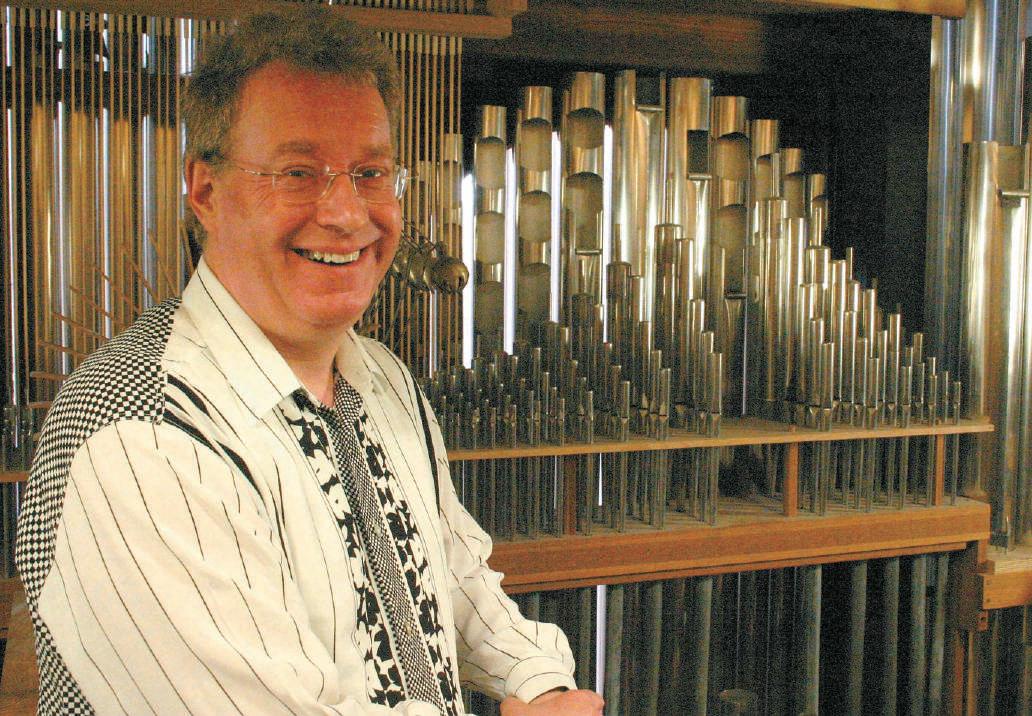
The organ is set out with the Great occupying the entire middle level of the case (ie the level of the bottom row of case pipes) with the Double Open Diapason on display, above it is the Swell in an interestingly shaped box: it stands in the top of the case, so the five lowest pipes of each stop are behind the central tower, next to them are the trebles and the box gets taller again towards its sides. There is not enough space inside the box to house the 16’ Bourdon, so it is placed immediately behind the box, with its mouths speaking through a sort of letterbox slit into the box itself, so that it is effectively enclosed. In the top section of the two main towers are the 8’ Pedal stops divided C and C sharp, with the pipes of the Cello
on display in front of the Swell box. As already mentioned, the Solo stands enclosed either side of the console, also divided C and C sharp. The Positive is, of course, in the small ‘Chair’ case. All through the design stage the top manual division was called Solo/Choir, because it has traditional features of both those divisions; but the label is cumbersome so in the end we chose ‘Solo’ because it was the top keyboard. It was thought that having a top keyboard called ‘Choir’ would be confusing even though the division has more in common with a traditional English (enclosed) Choir manual than with a Solo organ in the tradition of Hill/Willis/Harrison.
So what is the end result? Is it the same organ that went to Bonn in 1996? I say emphatically not. All that remains from the old organ is the case (altered), some stop knobs (re-engraved), the reservoirs and some pipes. About half the pipes are from the old organ, and all of these have been re-voiced: the Open Wood and Double Open Diapason eg were given roller beards; the Pedal Principal new languids; the Vox Humana had newspaper removed from inside its boots –yes really! etc. The internal design, structure, action, windchests and rather more than half the pipes (including the Great Open Diapason 8’ and Double Diapason 16’, four of the manual flutes and all but one of the organ’s Mixtures) are all new. The organ feels, looks and sounds different. Because of the new design it projects much better into the building that previously. Amazingly, the organ is smaller than before (62 stops, rather than 67), but it doesn’t sound it; both in terms of dynamic volume and variety of tonal colour it seems a great deal bigger.
Is it a ‘German’ organ? The stop list might almost lead one to suppose that it was a (fairly) standard English cathedral organ; certainly the console sends out cathedral organ messages. In fact I believe it is neither of those things, and anyone who treats the organ as either without using his ears and taking the trouble to listen is doomed to failure –though of course he may choose to blame the instrument rather than himself. There are features which are characteristics of an English cathedral organ: an opulent Pedal division, for instance, a high pressure Solo Tuba, two enclosed divisions
Cathedral Music 34
Peter King inside the Great
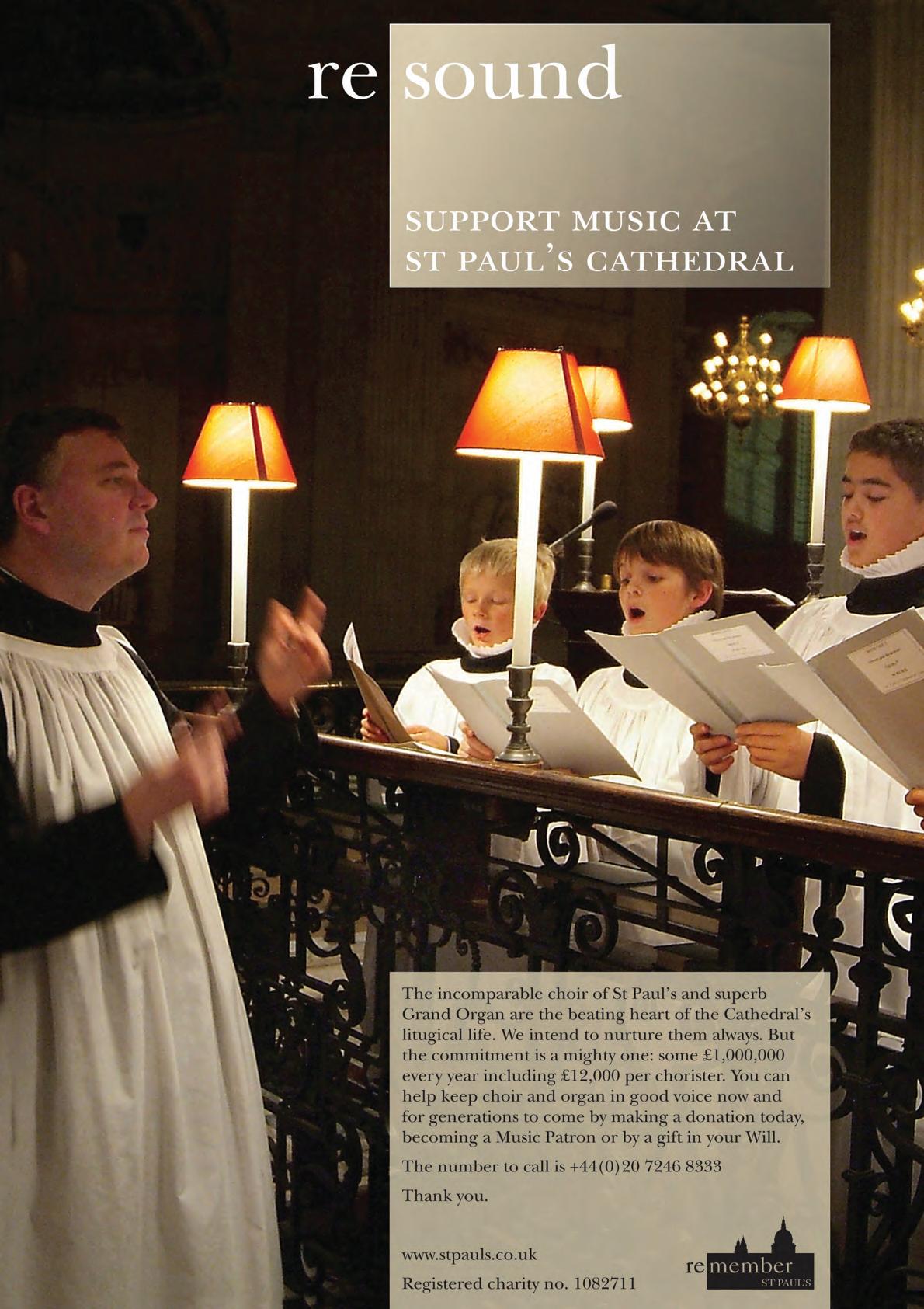
each equipped with undulating strings etc; on the other hand, it is less usual to find cornets available on three separate keyboards, the biggest flutes on the Great rather than the Solo, a Quintadena on the Swell (here spelt B O U R D O N for political reasons –we didn’t want to frighten the horses, or those who judge a stop’s tone by reading the label on the knob) and Solo strings that are gentle rather than the more common (and equally useful) ‘violes’. Another unusual feature is the ‘Toy’ department. This features two stops: a Cymbelstern wind driven, and a 3 octave Glockenspiel*, housed on top of the C sharp tower and played from either the Solo or the Pedals. No, it is neither a typical ‘English’ organ, whatever that is, nor a true German one, it is the Klais Organ of Bath Abbey and unique; it is its own man, with its own voice.
So what can it play? Can it play English music? Can it play French music? Can it accompany the choir? Can it lead a congregation? First of all let me make it clear that I think the primary job of a large church organ is to be useful. It must in some measure do all of the above. It is not there to enable socalled authentic performance of music emanating from a small corner of Europe over a period of a mere half-century.** In answer to the last question, the answer must be yes. The organ boasts a substantial Pedal section which fills the building with supporting bass tone; it also sports fiery reeds and bright, though not screaming, mixtures –all of which contribute to the instrument being heard clearly throughout the building. There is also a wealth of solo combinations for presenting tunes. Professor Johannes Geffert says he thinks it is a wonderful Bach organ (his performance here of the ‘St Anne’ Prelude & Fugue was the most convincing I have ever heard). On the other hand, one audience member on arriving to hear a recital, saw there was a lot of French music on the programme and immediately left saying that this was a German organ and couldn’t play French music. His view was not shared by Daniel Roth who played an all-French programme with great pleasure, and was generous in his praise of the instrument, singling out for special mention the Swell Trumpet which, he said, reminded him of home (S
Sulpice, Paris). But what, you may ask, about accompanying the choir in the English cathedral tradition? In answer to this I must refer the reader to a series of CD recordings and BBC Radio 3 broadcasts of the Abbey Choir and organ which feature psalms, the music of S S Wesley, Stanford, Bairstow, Howells and others, and ask him to judge for himself.
What is special about the organ for me? I enjoy the fact that the flute choruses on each manual are entirely different from each other in character, furthermore some of the 4’ flutes sound lovely played an octave lower, and the 16’ ‘Bourdon’ sounds lovely played an octave higher; the Doppel Flute, in particular, is a beautiful and characterful stop, its attack influenced by the touch of the player’s finger; I enjoy the facility of a miniature reed chorus on the Solo, complete with 16’ reed. I enjoy the fact that there are many different versions of pleno, depending on whether the timbre is influenced more by reeds or mixtures (and indeed which mixtures) –and the two really are independent of each other; there are other sounds which are special to me, not least the two 4’ stops on the Positive played down an octave, and with the tremulant added –8’ Principals are all too rarely used as solo stops, but whether the reason is due to the Principal or the player is often unclear. Most of all it is the Great Principal chorus, with its choice of mixtures (thus giving three versions), which thrills me. Some organists, especially when presiding at a Willis, will extol the virtues of the Clarinet, or Swell to Oboe, or full Swell (all of which feature at Bath), but it is the Great Principal chorus which is the heart and soul of an organ; it is here that most of the work is done, and like the strings of a symphony orchestra, it is this section which fundamentally sets the tone of the instrument. At Bath I believe the Great Principal chorus to be second to none. At the time of writing, the instrument is little more than a decade old; it will be interesting to see how future generations assess the instrument. Will it be as highly valued, for instance, as the Schulze at Armley, Leeds? Time alone will tell.

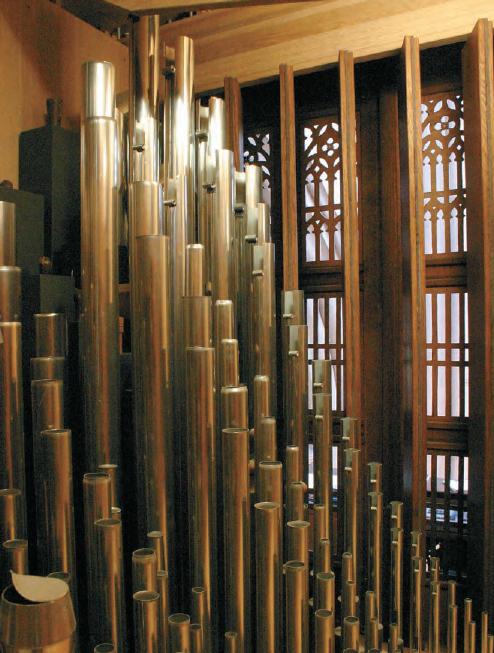
* See article Glockenspiels on www.peterking.org
** See my article Making Music on the Organ ibid
Cathedral Music 36
The Solo pipes. The new carved fretwork can be seen through the shutters. In the bottom left corner can be seen a pipe from the Cor Anglais
To the left is the Stopped Diapason (old pipes), then (in order) Unda Maris, Flauto Traverso, Gemshorn, Nazard
a = Hill 1868
b = Norman & Beard 1895
c = Norman & Beard 1914
BATH ABBEY KLAIS ORGAN 1997
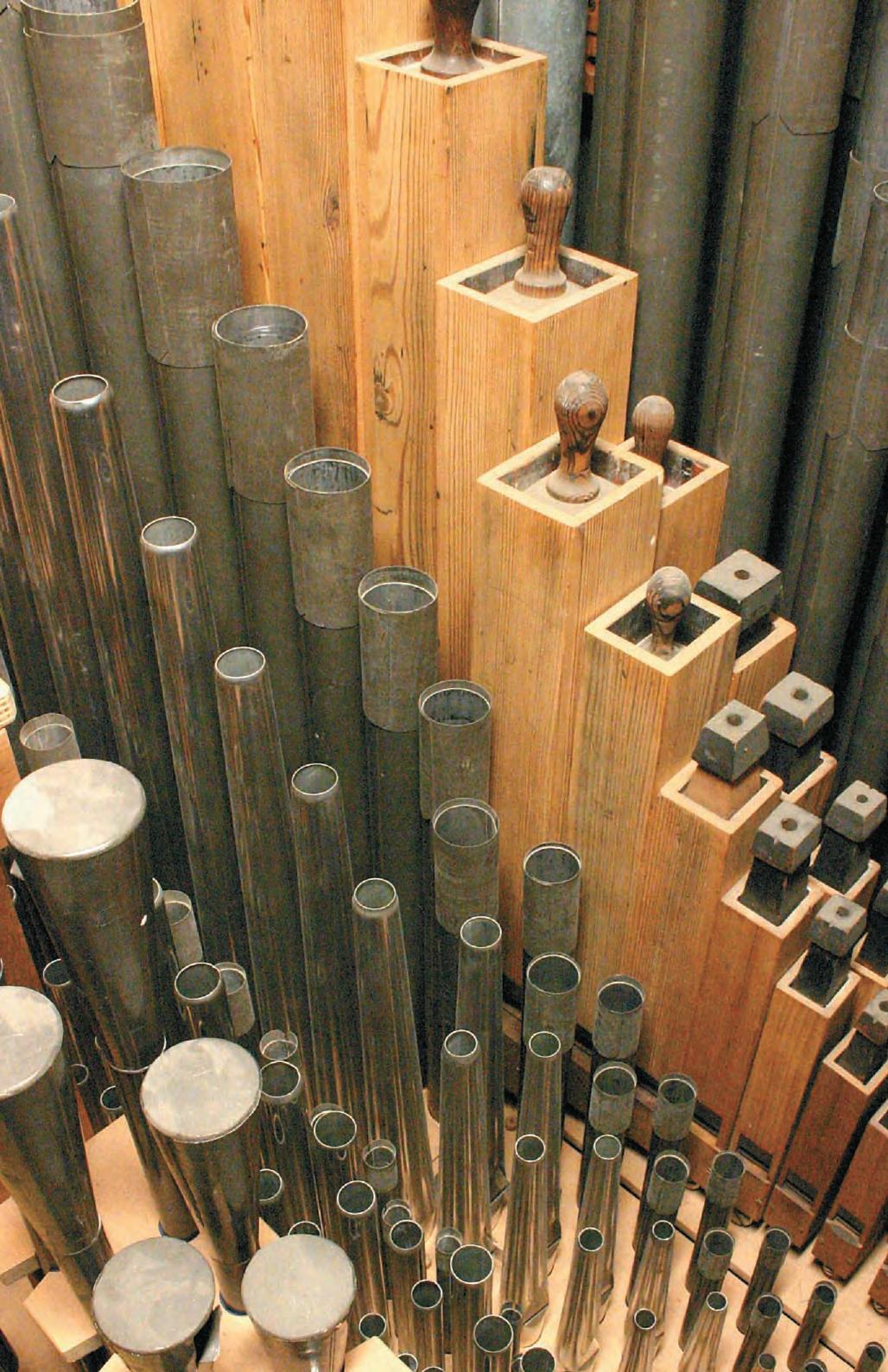
d = Hill Norman & Beard 1948
e = Hill Norman & Beard 1972
f
Klais 1997
Where a stop has pipes from more than one period, the period with the biggest representation is given in bold.
Full complement of pistons, multi-channel, sequencer, etc

PEDAL C –g1 Double Open Diapasonb a 32 Open Diapason b 16 Open Woodb a 16 Bourdonb a 16 Violoneb a 16 Principal a 8 Bass Fluteb f a8 Cello f 8 Fifteenth a 4 Mixture f IV Contra Posaunee f 32 Trombone a f16 Posaune f 16 Clarion f 8 Pos/Pd Gt/Pd Sw/Pd So/Pd I POSITIVE C –c4 Stopped Diapason e f8 Principal e f4 Chimney Flute e f4 Fifteenth e f2 Sesquialtera e fII Mixture e IV Crumhorn a f8 Tremulant Sw/Pos So/Pos GREAT C –c4 Double Open Diapason f 16 Open Diapason f 8 Doppel Flute f 8 Gambaf e 8 Principalb a 4 Open Flute b a4 Twelfthb a 2 2/3 Fifteenthb a 2 Full Mixture f IV Sharp Mixture f III Cornet f V Double Trumpetc b a 16 Posauneb a f8 Clarionb a 4 Pos/Gt Sw/Gt So/Gt III SWELL C –c4 Bourdonc b f 16 Open Diapason b c8 Lieblich Gedackt a b8 Viola da Gamba b c 8 Voix Celeste b c8 Principalb a c4 Tapered Flute f 4 Flageoletb a c2 Mixture f V Oboe a 8 Vox Humanab a 8 Contra Fagottoc b a 16 Trumpetc e f8 Clarion a c 4 Tremulant Sub Octave So/Sw IV SOLO C –c4 Stopped Diapasonb a f c8 Salicional f 8 Unda Maris f 8 Flauto Traverso f 4 Gemshorn f 4 Nazard f 2 2/3 Piccolo f 2 Tierce e 1 3/5 Larigot f 1 1/3 Cor Anglais f 16 Trompette d 8 Clarinet b 8 Tuba Mirabilis d 8 Tremulant Sub Octave Octave Cymbelstern f Glockenspiel c d’’’ f
=
Cathedral Music 37
Whose Music is it Anyway?
Liturgy and Music at St Paul’s between the Wars

Revd Martin Eastwood
If, as the joke has it, the difference between a terrorist and a liturgist is that you can only negotiate with the former, we might rejoice that the latter is no longer principally responsible for the choice of music in English cathedrals. It might even appear obvious to us that the musicians, particularly the organist, would appropriately bear this responsibility, but that would be quite a modern view. In the past, cathedral clergy, precentors or succentors depending on the cathedral’s foundation, would have chosen the music. Organists have gradually adopted this role, and the untrumpeted action of Dykes Bower in assuming this function at St Paul’s between the wars was in the vanguard of breaking the grip of clerical control.
During Dykes Bower’s time at St Paul’s, not only was the choir’s repertoire transformed, and the liturgy significantly affected by the newly available resources of the 1928 Prayer Book, but the way in which cathedral clergy viewed their musical responsibilities also began to change. Since the Second World War cathedral clergy have continued to stimulate change and the musical repertoires of English cathedral choirs in the twentieth century tended to change most dramatically at times when the cathedral in question was being driven forward through the dynamic forward-thinking leadership of the Dean and Chapter, but the pattern
established by Dykes Bower in choosing repertoire is now followed in most cathedrals.
Not only was St Paul’s lacking in dynamic forward-thinking clerical leadership in the period between the wars, it also possessed in the so-called ‘Gloomy Dean’ (W.R. Inge, Dean until 1934) a clergyman whose antipathy to the musical and liturgical traditions he inherited at the cathedral was wellknown and often publicly expressed. Inge was implacably opposed to any suggestion that the liturgy might move in a Catholic direction and also greatly disliked musical services. He is quoted as writing that musical services seemed to him ‘a criminal waste of time’, and that he had ‘never at any time thought it at all probable that God is the kind of person who enjoys being serenaded… [furthermore!] the noise gets on my nerves and interferes with consecutive thought’. It seems remarkable that the musical foundation flourished at all during the period of Inge’s rule.
Such was Inge’s opposition to Catholic practices that he caused a great furore by suggesting that the Bishop of London (Winnington-Ingram) was failing to enforce adherence to Prayer Book regulations. His comments caused a storm, as he included with them the suggestion that the Bishop swap dioceses with the Bishop of Gloucester. This was reported in the Daily Express, 2 November, 1928, under the heading
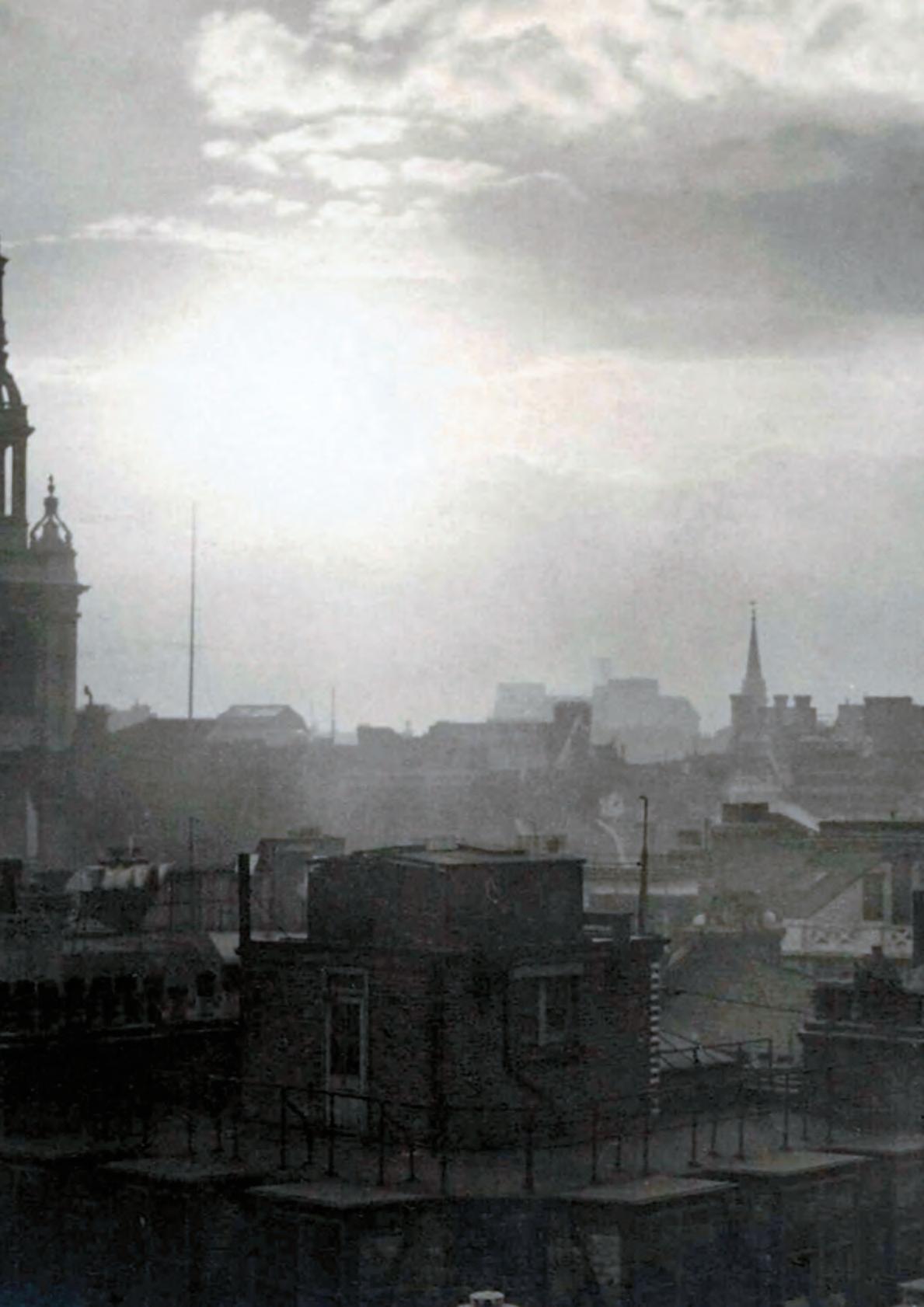
Cathedral Music 38
Dramatic Challenge to Dr Ingram: Dean Inge has a dropped a bombshell into the Prayer-Book crisis. There was to be little liturgical or musical change whilst Inge held the reins. It can appear that there was little liturgical change in cathedrals in response to the quasi-illegal approval by the bishops of the use of the 1928 book, but there is much evidence in the chapter minutes and elsewhere that St Paul’s gradually began to use the new material. Over a period of twenty years from 1928 the cathedral gradually adopted at some services the New Testament summary of the Law in place of the Ten Commandments, prayers and thanksgivings from the 1928 book, the Collects, Epistles, and Gospels from the 1928 Prayer Book for the Feasts of the Transfiguration, St Mary Magdalene, and All Souls, and the shortened Litany. Later it was decided that the bracketed ‘damnatory’ verses in the psalms should not be sung or printed in service sheets, and in 1937 the use of the new lectionary for the psalms was also agreed. At the same time the Agnus Dei was approved to be sung by the choir. This change is a particularly striking example of the use of 1928 provision affecting directly both the theology played out by the liturgy (here moving in a decidedly ‘Catholic’ direction with the hint of adoration of the sacrament that is given by the use of Agnus Dei after the consecration of the elements), and also the repertoire of the choir.
Another move in the Catholic direction was made in 1939 with provision being made for reservation of the sacrament. It is not clear from Chapter minutes whether this was a novelty, but given the controversial nature of reservation at this time it could well have been. The minutes do though make very clear that reservation was not for purposes of adoration of the sacrament and an aumbry rather than a tabernacle was used. A pastoral letter from the Bishop of London in 1940 gives a flavour of the hostility and suspicion surrounding reservation and its possible ‘mis-use’. In the letter the Bishop advised patrons (St Paul’s being a patron of several livings in London and elsewhere) that prospective incumbents should be asked if they were willing to abide by the diocesan regulations against Benediction and Exposition of the sacrament. Other examples of what Inge would no doubt have seen as creeping Catholicism were the approval of copes, the introduction of ‘Spiritual Counsel’ (presumably a euphemism for confession), and the recommendation that clergy wear clerical collars when going to and from the cathedral to officiate. Other liturgical and musical changes brought about during this period but not directly related to the material in the 1928 book included the replacing of the offertory sentences with a hymn at the Sunday morning Choral Communion, and the replacing of the state prayers with the prayer for ‘all sorts and


Cathedral Music 39
St Paul’s during the blitz
conditions of men’ and the General Thanksgiving at the 7.00pm Sunday service. The 7.00pm service was shortened again in 1935 when it was agreed that there should be just one reading, the chants of the psalm and canticles simplified, and that only a short anthem would be sung.
Taken collectively these changes show the gradual adoption of much new material presented in the 1928 book, and are also evidence of the rather loose adherence to liturgical form which was characteristic of the period. The direction of liturgical change is also clearly towards reducing the length and obscurity of services; in the language of our own day, they became more ‘accessible’. ‘Difficult’ elements made optional, truncated, or removed during this period include the damnatory verses of the psalms, the full use of the words of distribution, the state prayers, long anthems, and more than one reading. ‘Populist’ elements that began to appear include the use of a crib in 1935, plans for the introduction of a nave altar in 1937, and frequent shortening of services.
It is against this background that changes in the musical repertoire need to be viewed.
The deadening influence of Inge in this area of cathedral life is certainly detectable from the freezing of the repertoire on his arrival in 1911; very little was added to or subtracted

from the cathedral’s music lists between then and the start of the Great War. In common with those of other cathedral choirs the repertoire at St. Paul’s changed only slowly during this period, and often only as the result of practical exigencies such as war-time conditions and gradual liturgical change. The repertoire was greatly reduced during the war, particularly between 1916 and 1919, though there was the occasional commission, including the substantial anthem Lord Thou hast been our Refuge written by Bairstow for the Sons of the Clergy Festival of 1917 (the festival of 1921 commissioned an anthem of the same title from Vaughan Williams). Ireland’s anthem Greater Love, though dedicated to MacPherson in 1912 (sub-organist to Sir George Martin, and his successor from 1916), did not receive its first performance by the choir until 1920. Through this period the music was officially still selected by the Succentor, but there are indications that control of this function was gradually being handed over to the organist. The music lists show that in the period 1915 to 1925 there was some shedding of the works of those composers who were gradually becoming unpopular (notably Goss, Gounod, Spohr and Smart) but, as there was also relatively little being added, the amount of repetition increased significantly. During the war, the stand-in Precentor, The Revd E T R Johnson, did manage to introduce some novelties including Gray in F minor (evening canticles) which must have been a challenge indeed to a choir with reduced numbers.
The arrival of The Revd M F Foxell in the mid-1920s as Succentor led to a modest updating of the music lists, with the deletion of most of the remaining Gounod, Mendelssohn, Spohr, and Sullivan (all of whom had been out of favour for

Cathedral Music 40
The choir and transepts boarded up for repair work to take place in the 1920s
W.R. Inge, 'The Gloomy Dean'
some time in most cathedrals), and the limited introduction of some of the pieces recently published in the Tudor Church Music series. The octavo editions of individual works by Oxford University Press from these collections greatly increased their chances of getting into the repertoire and the St Paul’s music lists for 1924-1925 show several Byrd anthems in use and one by Sweelinck (all in English). Amongst the small amount of contemporary music added to the music lists at this time were the Vaughan Williams’ Te Deum and Mass in G minor, the communion service in F by Harold Darke, and several works by the then organist, MacPherson (who was succeeded by Stanley Marchant in 1927). These latter pieces tended to be too complex to find a permanent home in the repertoire either at St. Paul’s or elsewhere (examples being the four-part boys only service written during the war in response to the absence of most of the choirmen, and the Evening Service in A for unaccompanied double choir which was published at the composer’s expense but not taken up by other cathedrals). After Macpherson’s death there was an almost immediate disappearance of his music from the repertoire, lending further weight to the suggestion that choice of music had been in his own hands during the period that he was organist. In 1928 there was a meeting of the new Precentor (The Revd. W H Elliott), the Succentor (Foxell), and the new Organist (Marchant) to discuss the respective roles of their offices, but Elliott left soon afterwards having found the atmosphere of chapter unpleasant, and his successor Oliver Quick lived up to his name by leaving shortly after his appointment. It may have been through this period of unsettlement that the choice of music came fully to be within the control of the organist.
The significant changes in repertoire which were brought about with the arrival of Dykes Bower in 1936, confirm that the choice of music had now passed into the hands of the organist. Though young, Dykes Bower had much experience to commend him. The third of four musical brothers, he had left Corpus Christi (where he had been Organist and Fellow) to be successively organist of Truro (1926-1929), New College, Oxford (1929-1933), and Durham (1933-1936). The appointment of Dykes Bower broke two other traditions. First, he was unusually young for the post at only 31, and, secondly, the assumption that the sub-organist would assume command on the death or retirement of his superior, had been ignored. He has been described as a modest man with a great dislike of publicity, but his leadership was decisive. His transformation of the repertoire is made particularly clear by the amount of music that ‘came south’ with him from Durham. In that previous post, Dykes Bower’s predecessor had been both precentor and organist (and therefore in full control of the choice of music). Dykes Bower, though not ordained, capitalised on the precedent set, taking to himself the freedom to change the repertoire of Durham Cathedral quite radically. His arrival at St Paul’s brought about similar dramatic changes in repertoire. Examples of newer music incorporated in to the Durham repertoire by Dykes Bower include the services of Wood, the early Howells’ Evening Service in G, and Parry in D (No. 2), Noble in B Minor (morning service), Stanford in A (morning canticles and Communion) and in G (Communion), and the anthems Blessed City, Heavenly Salem and Jesu Grant me this I Pray (Bairstow), O Living Will (Stanford), and O Thou the Central Orb (Wood). Though this music was far from ‘modern’ in comparison with contemporary secular repertoire it was certainly new to St
Paul’s. Dykes Bower also used several of the newly available ‘Tudor’ pieces and dropped whatever remained of the lateVictorian period.
Three years after his appointment to St Paul’s, the eruption of war must have been deeply demoralising. The Choir School was evacuated, and a bomb destroyed Dykes Bower’s house, grand pianos, and music. Sydney Nicholson, Ernest Bullock and Dykes Bower attended chapter on 4 November 4, 1939 to make the case for sending the boys (and those of Westminster Abbey) to the S.E.C.M. (later the R.S.C.M.) headquarters at Chislehurst rather than far-away Truro, but chapter was not persuaded by their arguments. By the end of 1939 not only had the boys departed to Cornwall, but Dykes Bower was in the RAF and Marchant had to be recalled to fill in when the sub-organist was in Truro. Every effort was made to bring the boys back from Truro as early as possible, but conditions did not allow their return until April 1945. Like much of London, the Cathedral suffered terrible bomb damage during the war but survived. Dykes Bower himself returned (having gained the rank of Squadron Leader) and began re-establishing the repertoire he had developed in the late 1930s and introducing more new music such as Sumsion in G and Howells’ Collegium Regale, but by this stage both the long-serving Dean Matthews and Dykes Bower were coming towards the end of their creative periods and it would be left to their successors to continue their work.
In a very short period between 1936 and 1939 Dykes Bower had transformed the repertoire of the capital’s cathedral and set a new pattern in the relationship between organist and cathedral clergy.
City of London Festival
Monday 22 June, 7.30pm
Southwark Cathedral, London Bridge, SE1
Choir of King’s College, Cambridge Cambridge University Music Society Choir & Orchestra
John Harle, Christopher Gillet, Stephen Cleobury
Haydn The Creation: Representation of Chaos . . . and There was Light


Peter Maxwell Davies Solstice of Light
John Harle City Solstice (World première)
Peter Maxwell Davies new work with words by Andrew Motion £10, £15, £25
Thursday 9 July, 8pm
St Paul’s Cathedral, EC4
London Symphony Orchestra, Valery Gergiev conductor
Bruckner’s Symphony No 9 £5, £10, £20, £30, £40
Visit www.colf.org for full details and to book tickets or call 0845 120 7502. Join our Facebook fan page for latest news and special offers Discover the City of London Festival ...uncover the City Discover the City of London Festival ...uncover the City Cathedral Music 41
The King’s Singer by
Tim Rogerson
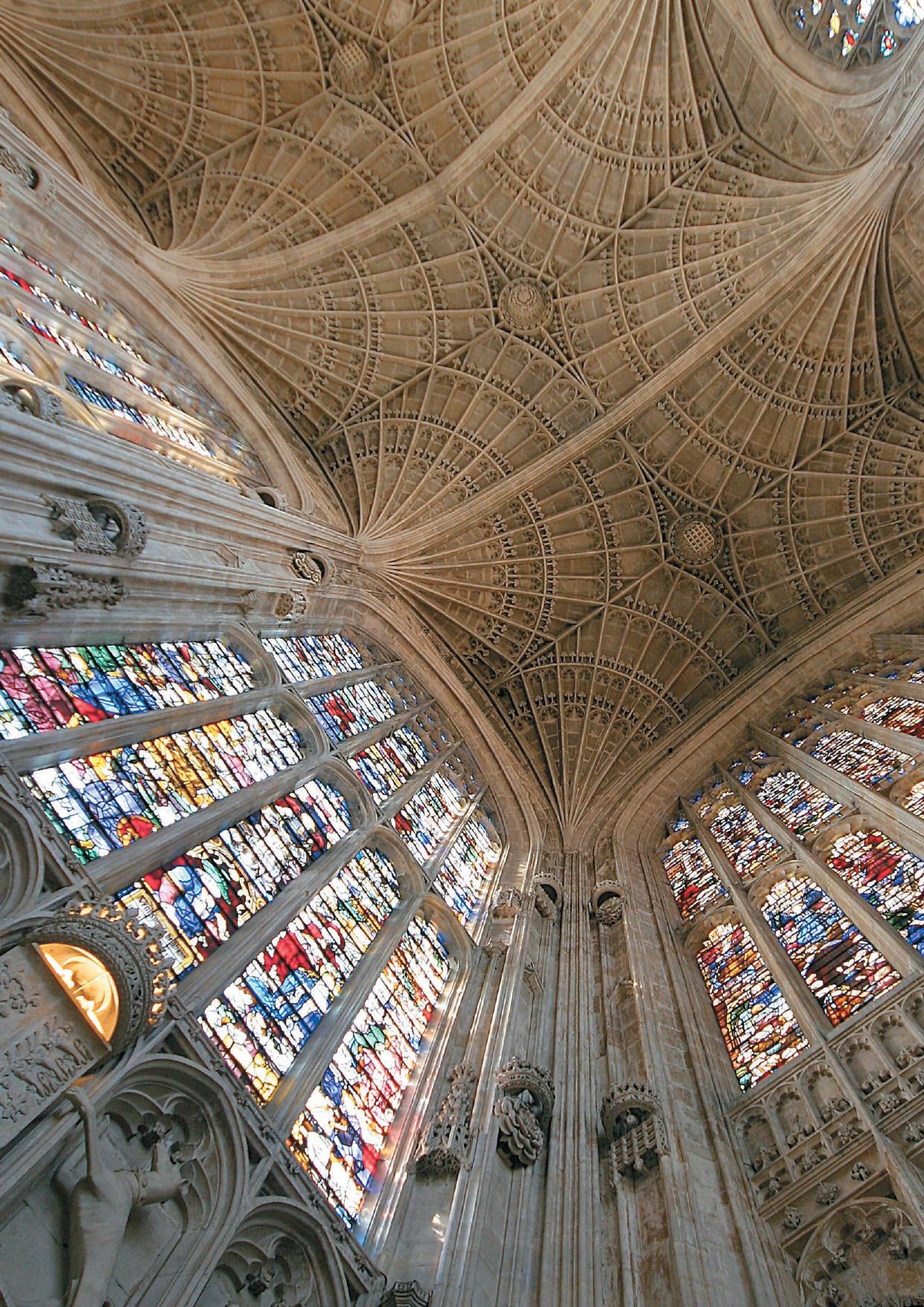
Cathedral Music 42
King’s College Chapel, Cambridge
© 2008 John Dalkin
of
possible
fear of contradiction, that only a small number of people have ever been choristers in the choir of King’s College, Cambridge. Of those only a proportion will have sung the first verse solo of Once in Royal David’s City which by tradition starts the famous Christmas Eve service of Nine Lessons and Carols. A smaller number still will later have returned to the Chapel to sing as a choral scholar. Fulfilling these criteria makes Ed Rex almost unique, but the fact that of his five brothers, four have been choristers in cathedral and chapel choirs must surely be something of a record –at least in recent times. Sensing that this should be of interest to readers of CATHEDRAL MUSIC, I met up with Ed to find out more.
Ed explained that his parents saw an advertisement for King’s College Choir and sent him along for a voice trial, after which he was offered a place. His father had been a chorister at Westminster Cathedral as a boy and since then two of his brothers have also been choristers at King’s College, whilst two others have been choristers at Westminster Cathedral. Ed was originally slightly young for his academic year and so, as his voice had not broken when he reached the end of his planned time, he did an additional final year in the choir, by which time he had already been offered a place at The King’s School, Canterbury. Here he sang in the school choirs, one year as a tenor, two as a bass and then started singing counter-tenor in a close harmony group. He then went back to singing baritone and it was on this basis that he applied to and was offered a place at King’s as a potential choral scholar. His French teacher from school, however, suggested to him that he should sing counter-tenor and so during his ‘Gap’ year, when he worked at St Paul’s Cathedral School in London, he spent time developing this voice so that he now sings counter-tenor at King’s.
In the 2008/2009 academic year, King’s College has only one organ scholar and so the tasks usually allocated to a second organ scholar have had to be shared between others. Ed is therefore responsible for teaching the probationer choristers, which he describes as enjoyable, although he admits to finding the responsibility somewhat daunting. His degree subject is music, which leads me to ask about his favourite music. Three composers are mentioned: Bach; Debussy and Byrd. The latter is a recurring theme in our conversation as Ed gives Civitas sancti tui as his favourite anthem and also the same composer’s four part mass as his favourite mass setting. He admits that as a boy chorister he didn’t enjoy singing Byrd’s music and finds that today’s choristers are similarly unimpressed by it. His favourite canticle is the Rachmaninov Magnificat, whilst the setting of Psalm 130 with the chant by Walford Davies is the psalm he most enjoys.
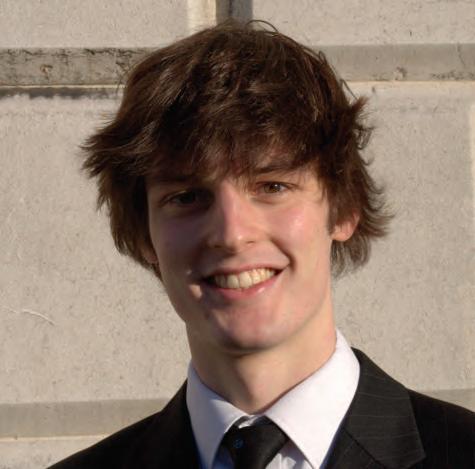
The choir of King’s College is best known for the annual Service of Nine Lessons and Carols, which is broadcast live on

Cathedral Music 43
In the history
the world, it is
to state, without too much
Ed Rex
Christmas Eve every year. It also sings seven services a week during the University terms (around 24 weeks at Cambridge) and returns for about three weeks in the second part of June after the summer term has ended. In addition to this it undertakes a number of tours each year and in December 2008 had given concerts in Rome, Amsterdam and Eindhoven as well as recording the Carols from Kings television programme (not the same as the Service of Nine Lessons and Carols) and singing a carol service for pupils at schools in the Cambridge area.
The Choral Scholars also undertake their own tour each year, singing as Collegium Regale. There are two concurrent tours, one of which heads north from Cambridge whilst the other heads south. A typical programme will consist of four parts starting with Renaissance sacred music before moving onward in time and ending with some pop or jazz close harmony numbers in the final part. This enables the Choral Scholars to sing in close harmony as well as being responsible for introducing the items, thereby establishing a rapport with their audience.
In response to being asked what the greatest challenge about singing in such a famous choir is, Ed is quite clear that it is always ensuring that the congregation at any service will not leave having been disappointed by the choir’s offering. He specifically mentions Friday Evensong, which (as in many places) is usually unaccompanied and points out that at every service there may be just one person who may have travelled a
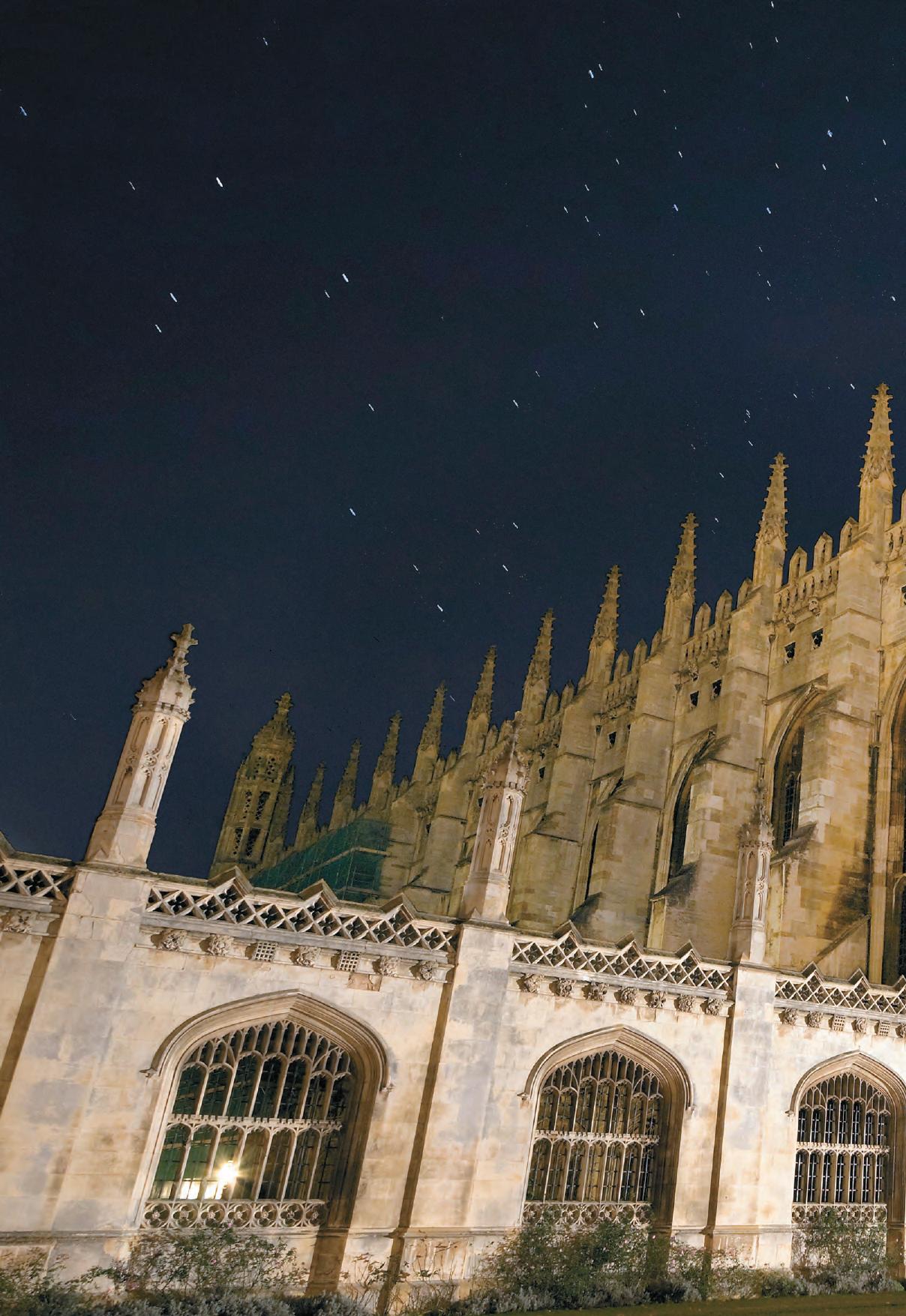
long way to hear the choir and who may never get the opportunity to return, so every service must be good. He does admit, though, that the acoustics of the building are a great asset as all music sounds as if it were composed to be performed in that space.
Ed is the oldest of six brothers and as well as singing plays the flute and piano. His oldest brother, Henry, (who was not a chorister) played the violin, while the second oldest, Sebastian, who sang as a chorister at King’s and went on to The King’s School, Canterbury, plays the viola and piano. He now also sings baritone and has been awarded a choral scholarship to Gonville and Caius College, Cambridge, for the next academic year. Ed’s third brother, Oliver, plays the oboe and piano and now sings in the Schola Cantorum at Ampleforth College, having previously been a chorister at Westminster Cathedral. The fourth brother, Maximus, who is also at The King’s School, Canterbury, again having been a chorister at King’s College, plays double bass, bass guitar and piano and still sings in school choirs, whilst the youngest brother, Ferdinand, who is Head Chorister at Westminster Cathedral, also plays bassoon and piano and was recently awarded a music scholarship to Ampleforth College. I’m not able to resist asking whether there is any appreciable difference between the singing at Westminster compared with King’s to which Ed gives an immediate answer that his
Cathedral Music 44
King’s College Chapel at night www.robertseber.com photos@robertseber.com
‘Westminster’ brothers definitely sing differently from the Cambridge boys: “Louder, possibly as a result of the building, and of the general style of singing, but it could also be because Ferdy and Olly have louder voices than the rest of us!”
I ask Ed about a memorable experience with the choir and he gives an example, which gives some insight into some of the unforeseen difficulties that can be experienced by those who direct our cathedral and college choirs. The choir of King’s College had been booked to appear in a Christmas concert in a concert hall, and between the rehearsal and performance arrangements had been made for the choir to eat in a pizza restaurant, which turned out to be some way away from the concert hall. Having been served rather slowly, the choir members had to rush across the city back to the concert hall and only had enough time to put on their cassocks before performing the first item. Singing on a full stomach is not generally recommended, but somehow the choir’s experience and professionalism came to the fore and the performance was well received.
Finally, I ask Ed what his plans for the future are. His reply is vague, but he’s definite about not becoming a cathedral lay clerk initially -that may come later. In the meantime, he has a first performance at that day’s Evensong approaching as well as the small matter of a song cycle to compose and a couple of essays to write!

Cathedral Music 45
Clergy, Organists & other

Disharmonies
Cathedral Music 46
A talk given at the conference
‘Cathedral Voices across half a Millennium’ at Christ Church, Oxford, 11 September 2008, by Christopher Lewis, Dean of Christ Church.

CATHEDRALS
As a dean, I am unsure whether I should enter these particular waters, for deans are a natural target for ridicule and suspicion. It was Dean Inge of St Paul’s whose life among the canons was described as being ‘like that of a mouse watched by four cats’1. It was he who once received a letter from a lady which said: ‘I am praying for your death; I have been very successful on two former occasions.’ He hated cathedral music, so I will return to him.
Cathedrals are currently a success story of the Church, both in this country and beyond, producing great liturgy, art, music, teaching, so it is perhaps strange that they are viewed as seething with gossip and intrigue unless perhaps the two go together. St Bernard in the 12th century called cathedrals foolish extravagances2 and Thomas Cranmer saw nothing but trouble coming from paying canons (and no doubt
Cathedral Music 47
Tom Quad, Christ Church, Oxford
musicians) a comfortable stipend and giving them nothing much to do, except, we might add, to get on each other’s nerves in a restricted space3. As for contemporary commentary, Andrew Brown, who writes the most readable column in The Church Times, commented on a cathedral disagreement: ‘What distinguishes cathedral conflicts from all other ecclesiastical scandals is that neither side ever has the faintest idea when to stop escalating…. Never mind the Islamic bomb, the first cathedral chapter to get hold of nuclear weapons will blow the whole world to smithereens in a dispute over where to hang the choir robes’4


One reason why so many stories come out of cathedrals, is that they are arcane worlds where the residents keep records and diaries, so stories are preserved in relation to the institutions. The furious priest who rants at the choir for not singing choruses; the manic organist who drowns out all sound but his own, then storming out, slamming down the console as he goes. Such occasions, which might pass with a few wry smiles in other places, are remembered.
Religion needs music and you could say that music
(certainly in its cathedral form) needs religion. Usually they work in harmony and my experience has generally been one of peaceful creativity, but sometimes that is not the case. The first reason is that both clergy and musicians have a tendency to oddness, probably because they are not under the same disciplines as people in other walks of life, but also because they both have to grapple with impossible arts: both reach for the stars …and fail.
CLERGY
The clergy: verbose and opinionated, without artistic sensitivity as in the Scottish poet Edwin Muir’s famous accusation of the Presbyterians: ‘The word made flesh is here made word again’5. Clergy are word-people and what is more they see themselves as having some sort of superior knowledge of God. Religion is a strange pursuit when followed, as it were, professionally. Beware clergy who talk piously about the ‘greater glory of God’ for it is usually a cover for personal preferences, which are given support by being attached, as it were, to God.
Osbert Lancaster tells of the Vicar of St John’s, Notting Hill, in the early 1900s, who announced to his predominantly female congregation that it had been revealed to him that there were no women in heaven; women were, he said, incapable of salvation6. He was married. I expect that people took no notice; they had heard such things before and were anyway meditating on the Sunday joint gently sizzling in the oven. Yet we might give a thought for the organist at St John’s, Notting Hill; history does not relate who that was, but he
Cathedral Music 48
(maybe even she) was captive and had to put up with the musical equivalent of the views preached.
By way of the clergy, God is alleged to bless some outlandish ideas and practices, including an extremely wide range of worship. Perhaps God does not mind too much about the liturgy churned out in his name, for he is the creator of all things (exalted, eternal, the ancient of days) but he may draw the line at some of the more extreme antics of his ordained servants. I do not know the circumstances, but the robed choir of a church in Bristol recently put itself up for sale on eBay: ‘in good condition, services no longer required’.
There was no golden age of clergy. Those who think that the 19th century was some kind of peak, need to look at the evidence. Joshua Brooks, a priest in Manchester in the early 19th century, clouted a choir boy who was singing the Kyrie after the fifth commandment, saying ‘Hold thy noise, lad; what has thou to do with the Fifth Commandment? Thou’st neither father nor mother…’7 Many of the examples of peculiarity have nothing to do with music, and I like the piece in Kilvert’s diaries which tell of the parish of Fordington, near the Dorset Dorchester. ‘No man had ever been known to receive the Holy Communion except the parson, the clerk and the sexton. There were 16 women communicants and most of them went away when [the vicar] refused to pay them for coming…. At one church there were two male communicants. When the cup was given to the first he touched his forelock and said: “Here’s your good health, sir”. The other said: “Here’s the good health of our Lord Jesus Christ.” One day there was a Christening and no water in the
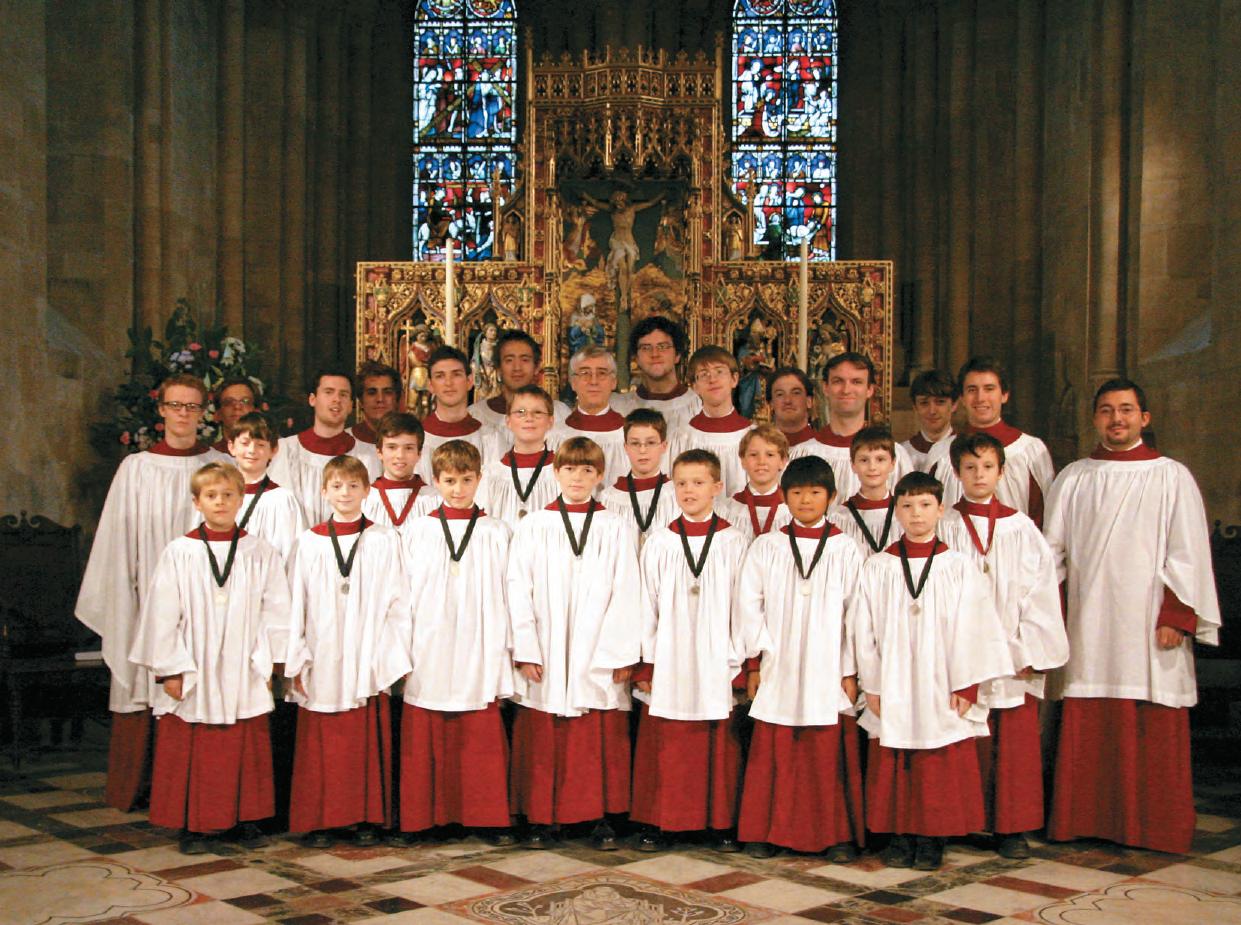
Font. “Water, Sir!” said the clerk in astonishment, “The last parson never used no water. He spit into his hand.”8 With that particular grasp on the church’s liturgy, what must the music have been like?
The clergy are unreliable on the subject of music. Some are too interested and interfere. Others are not interested enough. Others still just hate the whole musical enterprise. Dean Inge of St Paul’s, whom I have already mentioned, kept his diary. He had come from being the Lady Margaret Professor of Divinity in Cambridge and viewed life with a certain admirable detachment. Commenting on the music in St Paul’s he remarks: ‘…my diary abounds with petulant and almost profane lunges against the dreary and interminable musical services which I had to attend. I can and do pray when I enter my chamber and shut the door; but in the midst of howling and caterwauling I cannot. Melodies heard are sweet, but those unheard are sweeter. Quite right, John Keats; they are. Music hath charms to soothe the savage breast. It has the opposite effect on me who am not a savage. If I believed that I shall listen through all eternity to the seraphim blowing their loud uplifted trumpets, it would almost deter me from the practice of virtue.’ And then, in true form, he adds: ‘They turned the Nicene Creed into an anthem; before the end I had ceased to believe anything’, and then: ‘Use not vain repetitions. For ten minutes today the choir repeated the words ‘I wrestle and pray.’ Are we quite sure that the Deity enjoys being serenaded?’9
A distinguished dean; there is some potential for disagreement.
Cathedral Music 49
The Choir of Christ Church Cathedral in front of the high altar
MUSICIANS
When we turn to musicians, there is ample material. I worked with a talented Master of Music, Dr Barry Rose, who used to advertise his availability to play at clergy funerals; he had a natural and reasoned dislike of clerics. It is said that the organist’s motto is ‘Practise while he preaches’, but Allan Wicks, when he was organist at Canterbury Cathedral when I worked there, must have paid some attention to the sermons, as there came a stage when he would pull out the highest stop on the organ and play notes which made a light screeching noise; the congregation no doubt thought that a number of pigeons had been taken ill in unison, but the meaning to the ‘insiders’ was clear.
History is littered with strange tales. Thomas Weelkes, the 17th century composer and organist at Chichester was notorious for coming to services drunk and for swearing and blasphemy10. The choirmen at Chichester threatened each other with knives (the Daily Mail misleads; knife crime is nothing new) and the choirmen brought their dogs into the cathedral; in fact they brought not only their dogs, but also their bitches. In the end Weelkes was dismissed. The drinking habits, the in-jokes, the signals of lay clerks from decani to cantoris and back again, are wellknown and often carefully recorded, for example in Southwell Minster where Visitations found the clerks to be guilty of throwing stones, gambling and spitting too far.
For a critique of the 19th century, we can turn to S S Wesley (grandson of Charles Wesley) who is famed for his anthems and served both in Leeds Parish Church and in numerous cathedrals. He wrote his ‘A Few Words on Cathedral Music and the Musical System of the Church with a plan of reform’ in 1849 and it makes painful reading11. He remarks on ‘ …that mass of inferiority and error which has long rendered our Church music a source of grief and shame to well disposed and well instructed persons.’ He attended Christ Church, Oxford and asked the organist, Dr Marshall: ‘Why have you only one man in a surplice today, and him I can’t hear?’ The reply was: ‘No, he is only a beginner.’ As for the organist joining a country cathedral: ‘He thinks he will reform matters, gently, and without giving offence; but he soon discovers that it is his approbation and not his advice that is needed. The Choir is ‘the best in England’ (such being the belief at most Cathedrals)….’ Wesley is right on this count: all cathedrals still have ‘the best choir in England’, added to which, each of the choirs now has ‘an international reputation’, having been abroad.
Wesley blames the sad state of church music on the Protestantism of the Elizabethan period and says that church music never recovered from the depredations of that time. He exaggerates, but along the way he makes some fascinating points. He reckons that women’s voices are better than those of boys. He believes that church musicians can get away with lower standards than can others: ‘No coat of varnish can do for a picture what the exquisitely reverberating qualities of a Cathedral do for music. And then the Organ! What a multitude of sins does that cover!’
Wesley was a difficult character with what Frederick Bridge called ‘a quick temper and a sharp tongue’, yet he had insights and Richard Shephard uses him as evidence that claims of a long tradition of excellence in cathedrals are hard to support and that, if anything, excellence originally emerged from a royal stable rather than from a cathedral one, especially of course from the Chapel Royal: Tallis, Byrd, Gibbons, Purcell.12
Sir Frederick Bridge, organist of Westminster Abbey, wrote a wonderful book published in 1919 called A Westminster Pilgrim13. It would be improper not to give it its full title A Westminster Pilgrim, being a record of service in church, cathedral, and abbey, college, university and concert-room with a few notes on sport. The few notes on sport refer to grouse shooting, stalking and fishing: activities infrequently engaged in by musicians. Sir Frederick writes of Lady Augusta, who told a friend that choosing an organist was more difficult than choosing a wife: a poignant remark as she was married to the Dean of Westmister, Dean Stanley. Lady Augusta, however, had a point: cathedral organists are a talented group on the whole, but they are a small world and choosing the right one is hard. While on the subject of Sir Frederick, he had a correspondence with a poultry farmer in Australia who was also a composer: ‘I asked in one of my letters if he found that cocks and hens took an interest in music. He assured me that they were really musical, and that music was very effective in stimulating the production of eggs!’ So it is good to know that the purpose of music goes beyond the encouragement of shopping.
There have been many brilliant clergy in cathedrals and the same can be said of musicians. Thomas Crotch set off on a concert tour at the age of three (he took his mother with him) and became the organist at Christ Church at the age of 15.14 Nevertheless, when there are disharmonies, it is usually to do with people. For obvious reasons, it is necessary to be more reticent about the recent past, but Michael Howard, Organist at Ely in the 1950s ‘was often the worse for wear, shouted at the boys and replaced all the music that they loved singing.’15
MUSIC AND RELIGION
So my main point concerns people. There is, however, a further issue which relates to the nature both of music and of religion. Music and theology often have divergent or even rival aims.
Music is amphibious or ambiguous. I realise that there are only certain kinds of music which are ideal backing for a Hitchcock film, but there are strong arguments for saying that there is no such thing as sacred music. There is music with sacred associations and music normally performed in sacred settings, but often its meaning and purpose (unlike some words) is ambiguous. It is a point carefully made by Professor John Butt in his 2007 Walter Hussey Lecture, where he discusses Bach’s sacred and secular music and points out that Bach’s Christmas Oratorio of 1734 was almost completely derived from a series of cantatas which Bach had recently composed to celebrate birthdays in the Saxon royal family. The Christmas Oratorio is to be sung on the day after Christmas with the words ‘Sleep, my beloved, enjoy Your rest, then awake, that all may increase! Comfort the breast, feel the pleasure with which we gladden our hearts.’ It is the perfect lullaby for the infant Jesus. Yet the music was originally composed to celebrate the birthday of the Crown Prince of Saxony and was based on the myth of The Choice of Hercules: Hercules at the crossroads, where he has to choose between Vice and decadence on the one hand, Virtue and glory on the other. It celebrated the young prince’s natural wisdom at this turning point and the particular aria in question was sung by a risky female character called ‘Pleasure’ who tries to tempt Hercules in the direction of vice. The music is almost identical and the words are very similar, but the meaning is totally different. So the words: ‘Sleep my dearest, and take your rest,
Cathedral Music 50
Follow the lure of the inflamed thought! Taste the pleasure of the wanton breast and know no bounds.’ Those words have a different, plain and obvious meaning.

One piece of music may be suitable accompaniment to dancing or a charismatic experience or a shopping trip. Because of this ambiguity, which of course has its parallels in theology (even though the words tie theology down to some extent), the music can be viewed with suspicion; you never know quite what it signifies.

Music also has a world of its own, with its own criteria for success and failure and it may become a rival to religion. There is the liturgy of the concert hall and of the opera house, each with its special space, its virtuoso priests, its devoted worshippers, its rivalries, its particular fund-raising strategies and so on. There are music cultures. I realise that the same can be said of football and of many other areas of life, but then football is not competing, as it were, on the same pitch and sharing some of the same personnel as religion. As Schleiermacher pointed out, religion and music have great similarities in that both reach for the infinite, but he could also have said that it is the most similar which are often the greatest rivals16. Here we have separate but overlapping and possibly competing worlds of meaning.
Within churches, there is then the fear that the musicians will in some way take over, even that they are conspiring to do so. In the organ loft or practice room, there can be the mirror image fear that musical purity is about to be subverted for some religious end. The issue could be put in another way: are the religious and the musical performances in tune with each other. Liturgical and musical events are both fragile; each is easy to wreck. When I was a residentiary canon in Canterbury, we called Wednesday Evensong ‘men groaning’; I am sure it has improved since. Philip Toynbee once described going to Evensong at Peterborough Cathedral: ‘This drama is now being performed for the sake of the cast alone…’17 Bad liturgy can wreck music and, equally, bad music can wreck liturgy. Liturgy is like climbing up a greasy pole, reaching for heaven; it is not uncommon to find yourself in the mud.
The fears of a takeover, although usually unfounded, are not always so. In the example I will now give, the takeover was artistic rather than just musical, but it makes the point. The Opera House at Glyndebourne decided to put on Bach’s St Matthew Passion in 2007. It was the first time that it had produced a sacred oratorio, along, of course, with the Glyndebourne trappings of cream teas, champagne picnics and evening dresses. The Passion is a great spiritually profound work in the German pietist tradition, which has informed the faith of millions of people through its combination of music and words. It has sacred words allied to music. On this occasion, however, partly because of the physical context but largely because of a theologically uninformed and insensitive production, the sublime music and the words were spoilt. Much of the audience thought so and many critics thought so too. An artistic agenda had taken over the occasion and wrecked the theology.

Of course, it is true that religious liturgy sometimes makes artistic expression impossible; I think it was Alan Bennett who said that he could not enter a Christian community because its jollity, triviality and half-truths would deprive him of his power to write, and I suspect that musicians (quite reasonably) experience something similar on occasion. The hope and claim, however, is that art in general, and music supremely, will be a help to liturgy and theology, and vice versa.
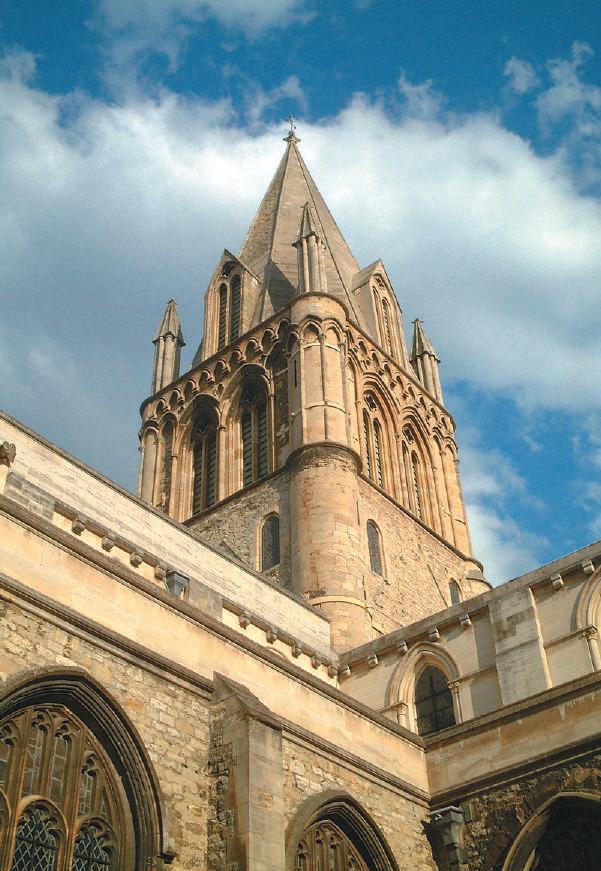
51 Cathedral Music
Christ Church Cathedral, Oxford
LEEDS PARISH CHURCH
at the heart of the art of church and organ music
CONCLUSION
The partnership between religion and the arts is a noble one, among which the partnership with music is supreme. In spite of the absence of musical instruments in mosques, all religions need the aid of music in expressing what is inexpressible, in reaching out to God. Plato said that: ‘The man who has music in his soul will love the loveliest’; judging from experience, that is not always true, but the direction of travel is right. Here we are helped to love God and to love others. The worlds of religion and music overlap and may lead to attempted take-overs and rivalry, but that is inevitable in a relationship so close. Not surprisingly, music is often the largest single part of a cathedral’s budget. No wonder that the expectations are so high and they are usually satisfied and more. Yet that is not always the case; I have tried to explain why, in the light of the strange people involved and because of the very nature of the religious and the musical enterprises. Cathedrals and music walk hand in hand, usually.
WEDNESDAY 10TH JUNE 7.30pm Battle of the Organs devised by David Houlder
SUNDAY 28TH JUNE 3.00pm Festal Evensong by the full Choral Foundation

SUNDAYS IN AUGUST 7.45pm Summer Organ Concerts Dr Simon Lindley
SUNDAY 27TH SEPTEMBER 3.00pm Festival Evensong for the Friends of the Music of LPC
SATURDAY 3RD OCTOBER Yorkshire Three Choirs Festival at Leeds Parish Church
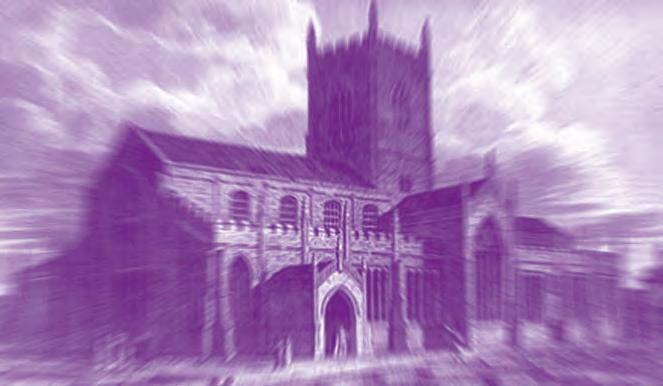

11.30am Choral Matins
3.30pm Choral Recital
MONDAY 5TH OCTOBER 1.05pm Yorkshire Three Choirs Lunchtime Concert
Further details from choir@leedsparishchurch.com
www.leedsparishchurch.org.uk
References:
1Beeson, Trevor The Deans, SCM, London, 2004, p136
2 Gimpel, Jean The Cathedral Builders , Michael Russell, Salisbury, 1983, p6
3Jenkyns, Henry The Remains of Thomas Cranmer, OUP, Oxford, 1833, Vol 1 p292
4Brown, Andrew - in The Church Times, 18.2.00
5 Muir, Edwin Collected Poems, Faber, London, 1960, p228: The Incarnate One
6Lancaster, Osbert All Done from Memory, Murray, London, 1953, p43
7 Ditchfield P H The Old-Time Parson, quoted in A N Wilson The Faber Book of Church and Clergy, Faber, London, 1992, pp242-3
8 Kilvert, Francis, Diary for April, 1874
9 Inge W R Diary of a Dean, 1911-1934 Hutchison, London, 1949. p9
10 Brown, David Thomas Weelkes, Faber & Faber, London, 1969 e.g. pp41-3
11 S S Wesley A Few Words on Cathedral Music and the Musical System of the Church with a plan of reform, London, Rivington, 1849, pp6, 11, 37, 72
12 Shephard, Richard Music in these stones in Platten, Stephen and Lewis, Christopher ed. Flagships of the Spirit, D L T, London, 1998. p75
13 A Westminster Pilgrim, being a record of service in church, cathedral, and abbey, college, university and concert-room with a few notes on sport. Sir Frederick Bridge, London, Novello, 1919, pp66,166,228
14 William Crotch 1775-1847: entry in the Oxford Dictionary of National Biography
15 Storey, Timothy Forty-one years in the Fens, Cathedral Music 1/06, May 2006, p13
16 Schleiermacher, Friedrich On Religion, Harper, New York, 1958, p152
17 Toynbee, Philip Part of a Journey, Fount, London, 1981, p199
Cathedral Music 52
BBC PROMS
17 July - 12 September at Royal Albert Hall and Cadogan Hall
Roger Tucker previews the 2009 season for sacred and organ music concerts
For his second season as Director of the Proms, Roger Wright has continued the policy of marking important composer anniversaries in the 76 RAH concerts. The Proms Chamber Music (PCM) concerts at Cadogan Hall this year expand from 8 to 19, (12 of them feature Radio 3
New Generation Artists). PCM 1 (1.00 pm July 20) is in the hands of the Director of Music of St Paul’s Cathedral, Andrew Carwood, whose own ensemble, the Cardinall’s Musick, present a varied programme of a cappella settings by Fayrfax, Cornysh, Taverner, Tallis, Sampson, Lydford and Henry VIII (acceded 1509).
July 17 Prom 1 at RAH kicks off this season’s ‘multiple pianos’ theme with concertos for a solo piano and two pianos (Tchaikovsky No 3 and Poulenc’s double) and ends with Bruckner’s setting of Psalm 150 Prom 2 presents Haydn’s Handel-inspired choral masterpiece
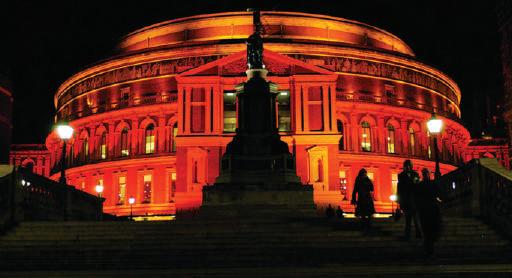
The Creation (NB Darwin born 1809) done by the Gabrieli Consort & Players under Paul McCreesh, augmented by the Chamber Choir from Chetham’s School of Music (marking its 40th anniversary), using his new, more singable translation. This will be a very special sound, on the larger scale used by Haydn after 1800.
July 20 a late-night double bill: two settings of the Seven Last Words, Haydn’s and James MacMillan’s (marking his 50th birthday), sung by the BBC Singers and the Manchester Camerata under Douglas Boyd. Yet another anniversary this year is the 800th of Cambridge University on July 22, to be celebrated by a convocation of college choirs, with three Cambridge conductors, performing works by six composers with Cambridge connections, including Jonathan Harvey (70th birthday) and ending with the Organ Symphony by Dr Camille Saint-Saëns Hon D.Mus (Cantab), soloist Thomas Trotter. Sadly, there is only one organ recital this year, on July 25 given by David Titterington; unusually offering both Elgar Organ Sonatas, with Peter Dickinson’s Blue Rose Variations in between.
July 28 four Bach Motets in a late Prom by the Monteverdi Choir and the English Baroque Soloists under Sir John Eliot Gardiner. July 31
Purcell (350 years since birth) Handel (250 years since death) Mendelssohn (200 years since birth) Haydn (200 years since death)
Mendelssohn’s most powerful symphonic work, the Reformation Symphony, will be done by the Scottish Chamber Orchestra under Yannick Nézet-Séguin. Aug 2, Berlioz’s Te Deum ends the evening Prom, given by the Bach Choir, BBC Symphony Chorus and Orchestra, with two boys’ choirs: Trinity Boys and St Paul’s and the Crouch End Festival Chorus. The Te Deum uses the solo organ in dramatic dialogue with the orchestra, which will give Simon Preston the chance to open up the huge sound of the rebuilt RAH Willis.
Aug 12 Handel’s four Coronation Anthems and an Organ Concerto (soloist Alastair Ross) in a concert by The Sixteen under Harry Christophers is another ‘must’ for me.
Aug 20Handel’s great oratorio Samson will be given by the English Concert & Choir and a line-up of star soloists, under Harry Bicket (formerly Asst Organist at Westminster Abbey), making his Proms debut.
Sept 6 Messiah as never in recent times: sung by massed voices, drawn from seven youth choirs from across the UK, trained by Simon Halsey and directed by Handel specialist Nicholas McGegan, with the Northern Sinfonia. Hundreds of young voices stacked up in the choir tiers should rise beyond the acoustic mushrooms to the great saucer roof, and raise it! Not to be missed. Sept 8 My final choice is a late Prom, given by the BBC Singers under David Hill, with tenor Ed Lyon and organist David Goode, in two works by Sir Peter Maxwell Davies, to mark his 75th birthday.
Purcell’s music is featured in several concerts, notably in the final PCM, at lunchtime on Sept 7, given by the Academy of Ancient Music directed from the harpsichord by Richard Egarr.
There may be fewer organ works than in 2008 but the choice of choral works is very enticing and will draw me to the Hall for at least a dozen concerts.
Harrison Oxley OBITUARY
Thomas Frederick Harrison Oxley died in April aged 76. He was born in Sheffield in 1933 and following his education at King Edward’s School, Birmingham and a year as Assistant Organist of Birmingham Cathedral from 1950 - 51 he went up to Christ Church, Oxford, as Organ Scholar from 1951 - 53 and as Assistant Organist from 1953 -55. Harrison left Oxford with a first and as part of National Service he served in the Royal Signals from 1956 - 57 where he acquired a love of band music. At 24 he was appointed Organist and Master of the Choristers at St Edmundsbury Cathedral in 1957, the youngest cathedral organist in the country and also conductor of the St Edmundsbury Bach Choir. According to the Choir’s website, following his first concert in March 1958, The East Anglian Daily Times wrote ‘Mr Hallam [his predecessor] would have been the first to acknowledge the quite brilliant abilities of this young musician. The inspiration, the technical efficiency of his conducting, his full appreciation of the scores would have delighted him, for it was all completely first class’. The new conductor had his own plans for the future: he was determined to enlarge the Choir, so that all who were capable of singing the great choral masterpieces should have an opportunity to do so. The size of the Choir increased steadily over the years, and it was able to undertake the great choral masterpieces of Bach, Brahms, Handel, Haydn, and
Verdi without the assistance of other choirs, as in earlier years –and it was soon to have its own orchestra.
Engaging orchestras from London had been expensive and not entirely satisfactory, so Oxley looked at ways whereby he could afford an orchestra more often, basing it on a nucleus of the best local players and inviting amateur players of proven ability from far and wide, as well as engaging leading London artists as principals. The St Edmundsbury Bach Orchestra was thus formed, and accompanied the Choir in Harrison Oxley’s first complete performance of St Matthew Passion in 1959. ‘Fred’ (as he became affectionately known) founded the popular ‘Carols by Candlelight’ concert and also founded the equally successful ‘Sing Nowell’ charity Christmas event whereby the Bach Choir and Orchestra supported many charities over a period of sixteen years. He acquired a reputation as a freelance organ recitalist (he has been described as a sensationally good player), examiner, conductor, composer and adjudicator, after he left St Edmundsbury Cathedral in 1984. In June 2001, having given forty-three years unstinting service to the Choir and to Bury audiences, Harrison Oxley decided it was time to retire and he conducted his seventh, and last, performance of Elgar’s Dream of Gerontius –a fitting finale for a wonderful musician who had been an Elgar devotee for many years.
Cathedral Music 53
Paul Edlin
SOUNDS NEW CONTEMPORARY MUSIC FESTIVAL in Canterbury

Sounds New is now firmly established as a central part of the UK’s contemporary music calendar. It all began in 1997, when a group of Kentish friends met and decided it was time to seriously promote the music of our own time in a place where cultural heritage was key to its very being. Twelve years on, Sounds New 2009 celebrates the music of Poland and adopts the theme Polish Connections. This is the first major celebration of Polish contemporary music to have taken place in the UK in recent years. With significant financial support from the Adam Mickiewicz Institute and the Polish Cultural Institute, it has been possible to create a programme that celebrates the extraordinary impact that Polish music of the last forty or so years has made on contemporary music in general.
The world-renowned composer, Krzysztof Penderecki, is the featured composer, and he comes to Canterbury to hear the UK premieres of his recent Sextet and brand new String Quartet No. 3. To add to the special nature of the event, the great composer conducts a team of star soloists, the Warsaw Boys Choir, Camerata Silesea, Polish Radio Choir Katowice and the Polish National Radio Symphony Orchestra in his great St Luke Passion. This is the first time this monumental work has been performed in the UK in nearly thirty years. The St. Luke Passion occupies a unique place in the music of the twentieth century. It was written to commemorate the seven-hundredth anniversary of Munster Cathedral and its premiere in 1966 coincided with the thousandth anniversary of Christianity’s introduction into Poland. Few people could have predicted the immense impact the work had on its audience, the extraordinary critical acclaim it received and the palpable influence it has continued to have on subsequent composers all over the world. The model was Bach’s Passions, and Penderecki also used psalms and hymns to further increase the spiritual and emotive depth. However, unlike Bach, Penderecki employed vast forces, creating a soundworld of immeasurable emotive power. The fact that this great work will be performed in Canterbury Cathedral means a huge amount to the Sounds New team, all of whom have longed to see this dream become a reality.
The great cathedral in Canterbury is central to Sounds New’s mission. Sounds New aims to raise the appreciation, as well as the significance, of contemporary music to a wider audience, and it aims to demonstrate its profundity. The performance of contemporary music is far too often assigned to quiet and small spaces. Great cathedrals are often seen as the domain of the music of yesteryear. But this is far from the case in Canterbury. Music is, after all, an experience that
touches and emboldens the soul, and it is the music of our time that speaks about the ‘here and now’. It is also the music that young people can relate to most easily.
Sounds New’s education and outreach work is central to its existence. The festival finds practical ways to facilitate learning and to share good ideas, making sure that composers, performers and artists impact on the community to everyone’s advantage. Sounds New creates performing groups and new compositions by professionals, amateurs and students alike, and it offers opportunities for the creation of new music from different genres such as electronic, new media, improvised music and chamber and orchestral music.
Arts Council England has also realised the impact Sounds New makes on the national music scene, and its 2009 grant is the largest ever awarded to the organisation. This helps ensure the highest possible standards of music-making come to Canterbury. This year, performers include the great virtuoso trumpeter and Principal of the Royal Scottish Academy of Music and Drama, John Wallace, who directs his finest students together with leading players from The Philharmonia Orchestra in a programme of celebratory music that opens the festival and culminates in a performance of Mussorgsky’s Pictures at an Exhibition in the Quire of Canterbury Cathedral. Other performers include Motion Trio, London Sinfonietta, Rolf Hind, Teresa Malik –the
Cathedral Music 54
London Sinfonietta
Grand Prix winner of the 2008 International Contemporary Chamber Music Competition, Olga Pasiecznik and the Silesian String Quartet and the Aurora Orchestra.
The festival has developed strong links with fellow organisations. Orange Street Music Club presents artists such as Oren Marshall, who plays his multi-tuba via his entire electronic armoury, together with local bands such as Stilton, Syd Arthur and The Quartet. From New York comes Thomas Truax, who brings with him an array of self-made instruments. From Brazil comes the sensational chanteuse Cibelle, and from Poland comes the Max Klezmer Band, the best band of its kind in Europe. To confirm the significant relationship with the community and our great cathedral, the Choir of Canterbury Cathedral give a festival evensong in which they perform the music of Penderecki, and it appears a nice link with the Warsaw Boys’ Choir is developing too. Interestingly, it was the Choir of Canterbury Cathedral, directed by Dr David Flood, that gave the very first Sounds New concert back in 1997.
Polish Connections marks the start of the Polska Year! –the Polish Cultural Season in the UK. In its ten days, Sounds New 2009 embraces well over fifty events. It sees over twenty UK premieres including works by Penderecki, Gorecki, Kulenty and

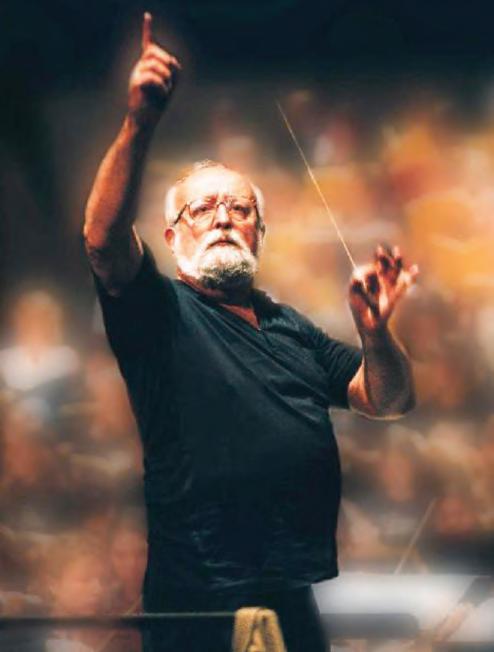
a host of influential Polish composers. It has also commissioned a series of new works, many by composers who have either been profoundly influenced by the music of Poland or who have strong associations with Canterbury. Gabriel Jackson was an excathedral chorister, Richard Peat was a student at The King’s School, Hugo Ribeiro is a PhD student in Canterbury. The list goes on. In the ten days, there are some twenty world premieres. And music is not where Sounds New stops. There are opportunities to see films and documentaries that have now been screened for far too long, there are practical workshops, there are exhibitions, and there are installations.

But what of Sounds New’s future, and what of its aspirations? Plans are already afoot for 2010 and 2011. America is key to 2010 and Scandinavia is central to 2011. Sounds New aims to bring the very best music of our time to a place of real and profound cultural significance, and it aims to let people delve deeper into the riches and excitement that makes our time one of the most musically dynamic.
For further information about the Sounds New 2009 programme, please visit www.soundsnew.org.uk or phone 01227 780800.

Cathedral Music 55
Krzysztof Penderecki
John Wallace
Cambridge Choirs Today
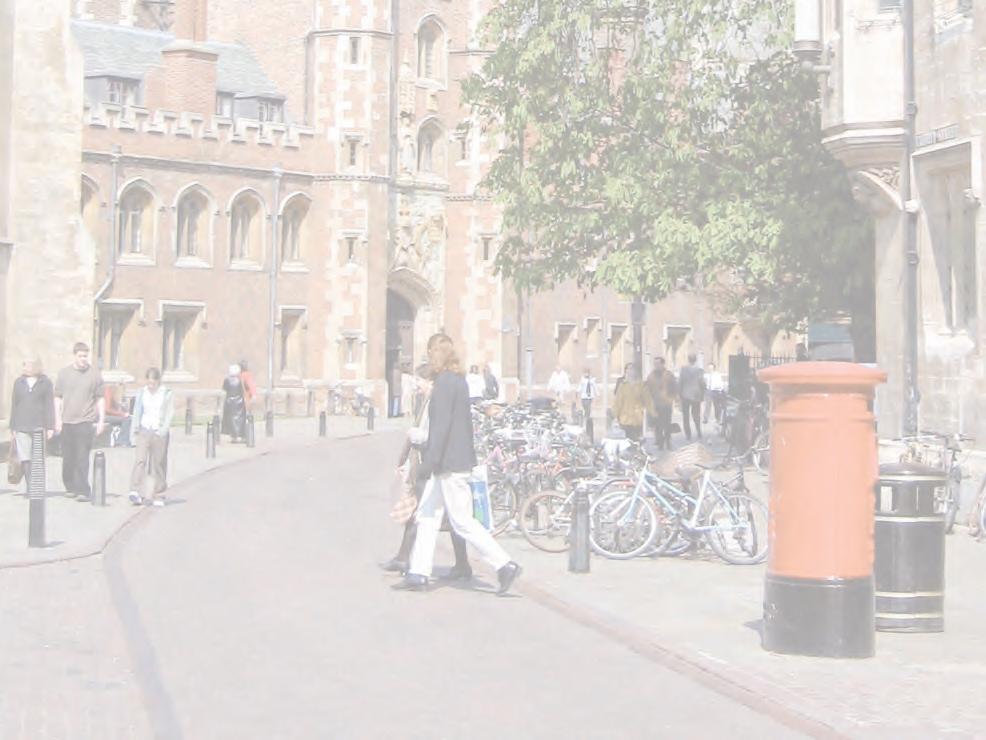 Geoffrey Webber
Geoffrey Webber
This year Cambridge University celebrates its 800th Anniversary. Music is playing a major part in these celebrations, and one of the highlights is a Festival of Choral Music, CambridgeCantat 800, being held in Easter Week, with contributions from current choirs and a distinguished array of former organ and choral scholars. Anniversaries are a good time for reflection, so how might one assess the current health and vitality of the Cambridge choral scene?
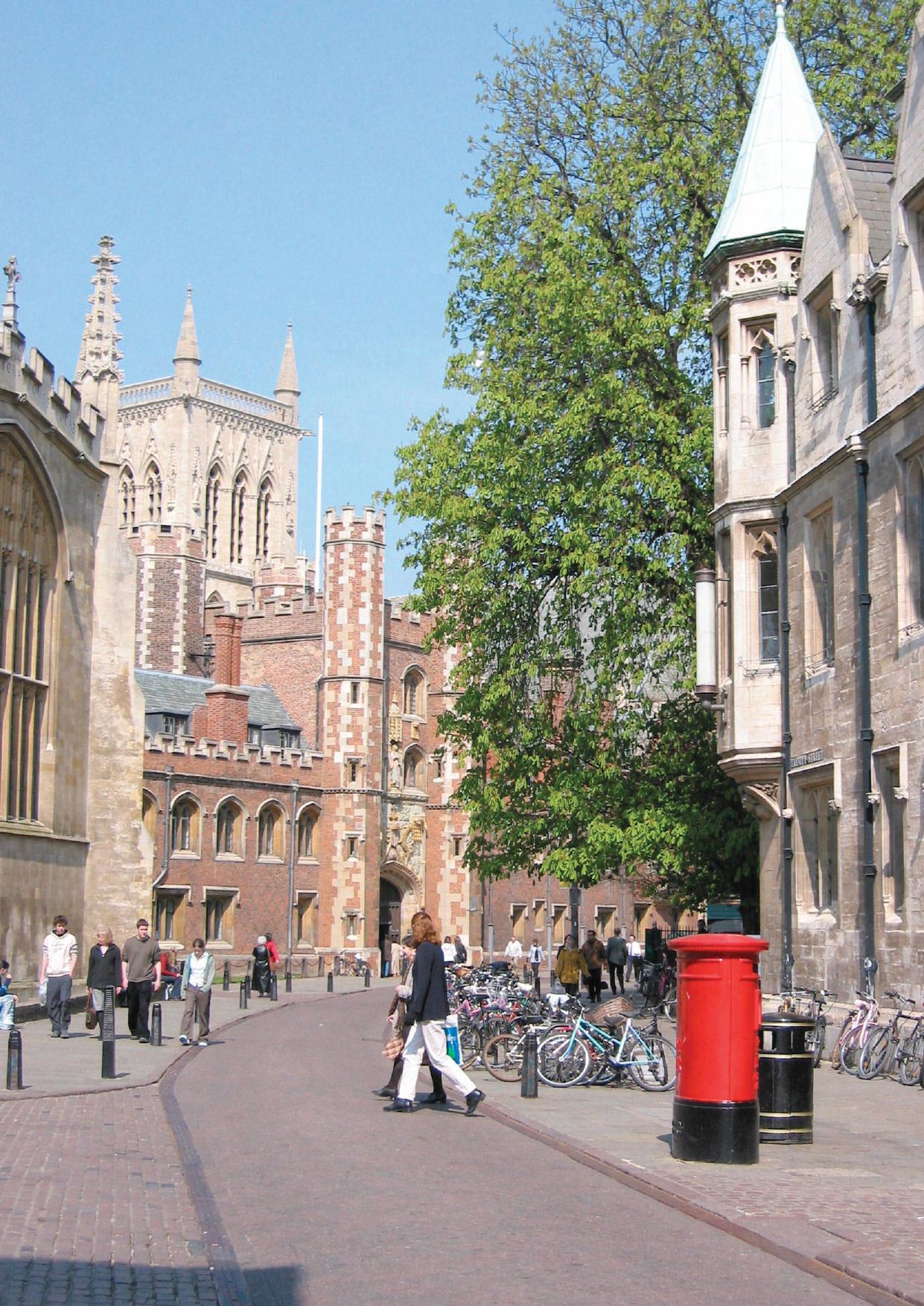
Cathedral Music 56
In terms of general fitness, choral music at Cambridge appears to be flourishing. Around 190 applicants to Cambridge applied for a Choral Award last year, the highest total on record, comparing very favourably with 106 twenty years ago in 1989. (Perhaps this is in part a reflection of the widening participation of young singers at cathedrals seen in recent years, whether in girls’ choirs or mixed groups). More colleges now offer choral awards, and more colleges employ either full-time or part-time directors of music. I am writing this article on the Feast of St Matthias, the day before Ash Wednesday. Today, there are festal services in several chapels, with music including Giles Swayne’s Magnificat (Trinity), Berkeley’s The Lord is my shepherd (Jesus), Mendelssohn’s Magnificat (King’s), Haydn’s Theresienmesse (Caius), Purcell’s O God, thou hast cast us out (Clare) and the GeistlichesLied of Brahms(Selwyn). On, Ash Wednesday, Allegri’s Miserere rings out in many Chapels (and can be heard on Radio 3 from St John’s), together with other well-chosen fare including Walton’s Missa brevis (Girton) and Drop, drop, slow tears (Sidney Sussex), Palestrina’s Missa brevis (Pembroke/Jesus), Lotti’s Crucifixus pro nobis (St Catharine’s/Trinity), Tallis’s In ieunio et fletu (Selwyn), Byrd’s Miserere mei Deus (Christ’s), penitential motets by Leonardo Leo (Caius), Ne reminiscaris, Domine by Peter Phillips (King’s) and Save me, O God by contemporary American composer James Lavino (Clare). In addition to the continuing round of Sunday and mid-week services, other notable signs of healthy activity are provided by the increasing number of joint projects undertaken by various choirs, either en masse for the performance of oratorios and other large-scale choral and orchestral works such as Elgar’s The Dream of Gerontius, Verdi’s Requiem and Mahler’s Symphony No. 8, or in twos and threes for services, concerts or recording projects; the choir at Caius, for example, has recorded music by Cambridge composers John Rutter and Robin Holloway with King’s and Clare respectively, and Poulenc’s Stabat Mater with St John’s and Clare. Furthermore, the commissioning of new choral music seems to play an increasing role in the work of the choirs. In addition to the impressive list of carols composed over the years by major British composers for A Festival of Nine Lessons and Carols at King’s, some colleges have appointed composers in residence, and the 800th anniversary has encouraged specific commissions. Tarik O’Regan is currently Fellow in Creative Arts at Trinity College; for the anniversary Clare College has commissioned a work from Christopher Brown setting a text by the Archbishop of Canterbury (a former Dean of the College), and Caius has commissioned a series of Psalm settings from different generations of Cambridge composers ranging from the former Professor of Music, Alexander Goehr, through Robin Holloway and Judith Weir to more recent alumni Edward Rushton, Cheryl Frances-Hoad and Sasha Siem. Another important aspect of current chapel music-making is the involvement of the many brilliant young instrumentalists at Cambridge, either by inviting student players to accompany Classical Mass settings or other works such as Stravinsky’s Mass, or by encouraging composers to write for choir and melody instruments, such as flute, cello or even trombone (as in one of this year’s Psalm commissions). Singing opportunities at Cambridge also extend well beyond the core work of the college choirs, of course, whether it be close-harmony for Balls or conference dinners, participation in opera –in the last few weeks there have been productions of Mozart’s Così fan tutte, Monteverdi’s Orfeo and Tchaikovsky’s Eugene Onegin – the Cambridge University Chamber Choir, Cambridge University
Musical Society, and the regular round of recitals and concerts of all sorts. I don’t believe I’m the only director of music who sometimes worries that his choral scholars take on far too much, but then I recall my own student days…
Some aspects of the current healthy state of choral music in Cambridge can partly be explained by the subtly changing relationship over the years between the music of the college chapels and the Faculty of Music, and other features of collegiate life at Cambridge. During the last century, many of the leading college directors of music also served as Professor of Music or as a lecturer in the Faculty of Music. Charles Stanford (Trinity) and Charles Wood (Caius) both served as Professor of Music, and in more recent times, George Guest (St John’s), Richard Marlow (Trinity) and Peter Tranchell (Caius) all served as University Lecturers in Music. But gradually the two worlds drifted apart as the Faculty sought to widen its academic scope. College directors of music who are also University Lecturers are now the exception, though several contribute to the Faculty’s teaching as non-stipendiary affiliated lecturers or in other ways. This might seem regrettable, representing a marginalisation of chapel music, but the change seems to have worked to the mutual enhancement of both groups, and college directors of music are able to focus their energies on their work with the choirs. Moreover, an encouraging new relationship has developed in recent years between the Faculty and the college chapels with the introduction of a course for final-year Music students in Choral Studies, allowing them to develop their skills as choral conductors and study a range of subjects under this heading.
Whilst University posts are funded by the state, college posts are paid for by the endowments of the colleges, and so the wellbeing of choral music at Cambridge is inextricably linked to the state of college finances. All colleges now have a Development Office, and fund-raising has become a normal part of the college life in a way that was quite unknown twenty years ago. Money is raised for teaching, research, accommodation, bursaries and various activities including music, and in most colleges the choirs have contributed by singing at special occasions and acting as a public face of the college, thus also helping to ensure their own survival. Several colleges are trying to raise money that will effectively separately endow the work of their chapel musicians. Named choral and organ scholarships are becoming increasingly common, along with named directors of music. Such fund-raising is vital if the college choirs are to continue to flourish, especially at those colleges with smaller historical endowments.
With regard to organ scholarships the picture is arguably more mixed, for the number of applicants seems currently to be on a gently sloping downward trend. In the last five years the average has been 21, whereas in the previous five years it was 27 and the five years before that 30. Most Colleges now expect to have two organ scholars in residence at any one time (whereas in former years an organ scholar was very often on his or her own in their second year), so the rise in the number of awards on offer and decline in the number of applicants is something of a concern. But the opportunities for organists at Cambridge remain as strong as ever. The Organ Scholars’ Forum provides master-classes, lectures and other support, and the colleges have just agreed to increase the honorarium paid to organ scholars in recognition of their contribution to college life. Moreover, colleges are still commissioning new instruments; Sidney Sussex is one of the latest to do so (a main organ from Flentrop and a chamber organ from Taylor & Boody), following
Cathedral Music 57
Selwyn, Trinity Hall, Magdalene and Jesus in recent years. And what can be said about the future? The general expansion of choral activities across the colleges seems to suggest that the tradition is currently secure. A more likely difficulty may come from pressures from some Faculties to centralise undergraduate admissions, though again it seems that in general the colleges are keen to retain their authority in this area. With regard to new directions, initiatives continue to spring up to enrich the tradition and increase its openness to the outside world. St Catharine’s has recently founded a girls’ choir offering opportunities to girls from the city aged 8-14, going some way towards balancing the opportunities given hitherto only to boys (at King’s, St John’s and Jesus). Several choirs are soon to become involved in a scheme to provide links between as many college choirs as possible and local secondary schools, and King’s is already participating in the government’s outreach scheme for singing in primary schools. Services are now regularly available as a web-cast from St John’s. A video concerning organ and choral scholarships is now available on the University website for potential applicants to find out about the opportunities offered here, though special Open Days for Choral and Organ Awards continue to take place. However, more work needs to be done to increase the number of applicants for choral and organ awards from state schools. For those who sing regular services at school in a grand chapel with fine organ, applying for an organ or choral award at Cambridge seems an obvious thing to consider, but I suspect that the proportion of academic high-fliers across the country who experience this type of activity at school or church is rather small. A great deal of time and money is currently being spent
Do you know a child who loves singing?
Salisbury Cathedral Choir offers a wonderful opportunity in a spectacular setting
by the University and the colleges in attempting to boost the number of state school applicants to Cambridge, and it is to be hoped that these endeavours will have an impact on applicants for choral and organ awards, but the correlation is far from automatic. The process would, of course, be easier if those who decide what is taught in our state schools were to value more highly the importance of music as part of every child’s education. But Cambridge for its part needs to make sure that the musical opportunities it offers can genuinely be an attractive prospect to the widest possible range of potential students. Finally, another possible future development concerns the study and practice of choral music at graduate level in the University. The Faculty of Music is currently actively pursuing plans in this direction, though a number of hurdles would need to be overcome for this to be realised.
The celebrations of 800 years of Cambridge University began officially with a spectacular light display on the Senate House and University Offices on Saturday, 17 January. Choral music was there at the very start, the images being accompanied by the glorious sounds of Spem in alium by Thomas Tallis. Already, the day before, Radio 3’s In Tune programme had highlighted the anniversary with singers from Caius and Clare choirs performing music by Gibbons, Hadley and Rutter, and an interview with Stephen Cleobury. Further special events will take place at various points during the year, most notably a BBC Promenade concert being devoted to Cambridge and its choirs on 22nd July. The impressive list of other public concerts and CD releases from Cambridge’s choirs will continue unabated, but the heart of the Cambridge choral scene remains the dayto-day singing in the college chapels.
Be a Chorister for a day - Saturday 14 November 2009
Open Day for prospective choristers in School Years 2,3 & 4 and their parents

Voice Trial Workshop - Saturday 5 December 2009
Voice Trials
For children currently in School Years 3 or 4
Boys - Saturday 23 January 2010
Girls - Saturday 6 February 2010
Informal Pre-auditions - at any time by arrangement
All children are educated at Salisbury Cathedral School
Scholarships and Bursaries available
For further details or an informal discussion with the Director of Music contact:
Dept of Liturgy and Music

Tel: 01722 555148 or email: s.flanaghan@salcath.co.uk
www.salisburycathedral.org.uk
SALISBURY
15 – 19 July 2009
A celebration of superb music by the choirs of Chichester, Salisbury and Winchester Cathedrals in the beautiful setting of Salisbury Cathedral Concerts and services celebrate the music of Bach, Handel, Mendelssohn, Mozart and Purcell. Guest choirs and musicians


Relax in the Festival Club and visit specially opened gardens in The Close Full information and booking brochure at: www.southerncathedralsfestival.org.uk
Telephone (01722) 555148 email: s.flanaghan@salcath.co.uk
Box Office: (01722) 320333
Cathedral Music 58
S A L I S B U R Y C A T H E D R A L
LETTERS
Dr David Burrell Fairbanks, Alaska, USA
Sir: I am glad that Mr Dennis Roberts is generally ‘not given to writing letters to the editor’ (1/08). I am, however, surprised that on this rare occasion he would want to publicly broadcast his antediluvian views on breast-feeding. This is not the first time that I have detected more than a whiff of misogyny in this magazine. I hope such opinions are not common among the membership; I should be sorry to have to dissociate myself after more than 25 year’s membership.
Miss L Collins. Kirkheaton. Huddersfield
Sir: In your editorial in the last edition of CATHEDRAL MUSIC, you decided to evaluate the present state of cathedral music and to seek the views of members. You said: ‘There is still only one cathedral in England (Manchester) whose choir has a mixed top line’. You fail to mention that Brecon Cathedral in Wales also has a mixed top line. You also fail to mention the cathedrals where it is rare for the men and boys to sing together and where the services are predominantly sung by either girls or by various combinations of mixed voices
All general points and comments welcomed. Please send letters by 5 September 2009 to: The Editor, 21 Belle Vue Terrace, RIPON, North Yorkshire HG4 2QS ajpalmer@lineone.net Letters may be shortened for publication.
(boys, men, women or girls) such as Leeds RC Cathedral. I would be interested to have clarification of the FCM’s stance on the whole issue of women singing in cathedral choirs, because you omitted to mention this subject in your evaluation despite the fact that several establishments have already admitted women into their choirs. Should, at some point, more women decide to claim their ‘right’ to join our cathedral choirs, on what grounds could deans and chapters possibly deny them? If, in the end, they are forced to admit that there are no such grounds and women in any numbers pursue their ‘rights’, then one thing is clear: it is goodbye to anything we have known so far as cathedral music.
It does nothing for rational debate to dismiss the fears of those who wish to uphold the cathedral music tradition, with comments such as ‘much trumpeted opposition to girls singing the top line in cathedral choirs on the grounds that it might undermine the male tradition’. In many cathedrals which have admitted girls, the number of services sung by the men and boys has shrunk by 50%. How can this do anything but ‘undermine the male tradition’?
One of the benefits of having a girls’ choir you said was that it made it
‘possible to sing Choral Evensong daily’. Perhaps, but possibility is not the same as reality. A quick trawl through the websites of cathedrals with girls’ choirs would have shown you that this is very much the exception and that the majority of cathedrals still have at least one dumb day.
There continues to be much to rejoice the heart in cathedral music. When I attend a service and the music is of the highest quality, I always feel humbly grateful to all those who make it possible. However, if FCM is to exert any influence on what is happening to our choral tradition, it has to shed its complacency and acquaint itself with facts rather than simply regurgitate assumptions. At the moment, I have the impression that it has not the faintest idea what is going on.
Given that the enormous changes which have occurred within cathedral music in recent years have left many cathedrals with choirs of a make-up far removed from those in existence when Ronald Sibthorp founded FCM, I think it is very pertinent that you remind us that a core aim of the society is the safeguarding of our priceless heritage. It is, therefore, high time that the FCM asks itself just what type of cathedral music it intends to safeguard.
C ambridge Summer Music Festival
J
ly
Edington Festival
August 23rd - 30th 2009
The 54th Festival of Church Music within the Liturgy at the Priory Church of St Mary Edington (near Westbury in Wiltshire)

Information from John d’Arcy, The Old Vicarage, Edington, Westbury Wiltshire BA13 4QF
Tel: 01380 830512
Festival Chorus in King s College Chapel
Mozart Mass inC Minor
Choir of Clare College Faur Requiem and John Tavener Ex Maria Virgine
St John s College Choir Handel Zadok
the Priest Faur Cantique de Jean Racine
Organ Recitals by Daniel Hyde and Anne Page
For a brochure please contact:
E: info@cambridgesummermusic com
T:
Cathedral Music 59
Juul
W: www cambridgesummermusic com y A Auugguusst t
Choral concerts include The Clerks & His Majesty s Saggbutts & Cornetts Golden Age of Tudor Music
BOOK & MUSIC REVIEWS
A LIFE IN MUSIC: Conversations with Sir David Willcocks and friends
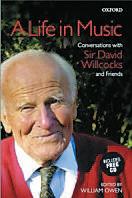 Ed William Owen
Ed William Owen
OUP 288pp Hardback + CD
ISBN -13 9780193360631 £19:99
This is a joy and a fantastic idea. It tells the fascinating life story of a man who has stood at the very centre of British twentieth-century choral music. There is an accompanying CD containing musical tracks selected from Sir David’s many professional recordings. He introduces each item in what can only be described as captivating. The famous story of Roy Goodman, the treble soloist for Allegri’s Miserere, is told with affection; he had to run from football with bloody knees, after cheering on his mates. Another lovely tale is Willcocks’s talking about choosing the soloist for Once in Royal David’s City. The book starts in 1919 with Sir David’s birth on the 30 December and each chapter then works chronologically through his life story. Along the way we are told so many interesting snippets such as that Willcocks enjoyed Balfour Gardiner’s Te lucis ante terminum because he enjoyed the sound of the organ, tit bits from King’s College and how Carols for Choirs came to be published. Various people are interviewed from Jane Watts, Lady Willcocks, John Scott, Roy Goodman, David Briggs and John Rutter among others. Everyone reading this magazine will have a love of the great tradition that is cathedral music and which Sir David Willcocks has enriched through his most distinguished career. This book illustrates how inspiring Sir David still is and how his legacy will continue to enthuse generations. HRH Prince Charles writes the foreword and he points out Willcocks’s fine military record, which was recognised with a Military Cross. This book will not disappoint. Buy it at once and enjoy it.
Andrew Palmer
CHORALCDs
A VIERNE COLLECTION

Messe Solennelle Op 16; Messe Basse Op 30; Triptyque Op 58; Toccata in B flat minor; Three Motets; Messe basse pour les défunts Op62; Le Angélus Op57; Carillon de Westminster.
Truro Cathedral Choir.
Director & Organ soloist: Robert Sharpe.
Organ: Christopher Gray.
Mezzo-Soprano: Monica Brett-Crowther.
REGENT REGCD263 2CDset TT 125:41




This delightful two-CD set contains choral and organ music composed over a period of nearly 40 years. The earliest pieces are those written for choir. The Messe Solennelle opens the first disc and it is immediately apparent that this is quality music expertly performed. The solemn and majestic Kyrie is given a full-bodied performance by the Truro cathedral choir whose ensemble and tone is always excellent. The Benedictus and Agnus Dei show that the choir, under the direction of Robert Sharpe who has recently moved to York Minster, can produce beautiful soft singing as well as the more robust sound needed for the Kyrie and Gloria. Christopher Gray accompanies the choral works superbly, coaxing wonderfully varied odours from the organ. The other choral works are three accompanied motets,
settings of Tantum ergo, Ave verum and Ave Maria, all well-crafted pieces. Robert Sharpe is the organist for the remaining pieces. The Messe Basse of 1912 was written for harmonium or organ to be played during Low Mass. Vierne’s musical style here has become more chromatic, similar to that of his 24 Pièces en style libre. It includes an Introit which is fugal and serious in character, a sunnier Offertoire and an exquisite Communion which has a beautiful, hushed ending. The second CD contains another Messe Basse but this one is intended for a requiem. Dating from 1934 the musical language is that of the 6th Symphonie and is suitably more solemn. The Offertoire here for example shows off the organ’s reed tones and dark colours. Robert Sharpe conveys this intense music extremely well. The best-known pieces on this recording are the two Pièces de Fantaisie and are played with panache. The Toccata is an outburst of fiery energy and the Carrillon receives a riproaring performance. The Triptyque, Vierne’s last published work, comprises three quiet pieces –a sweet Matines, again reminiscent of the style of the 24 Pièces and a poignant Stele. Monica Brett-Crowther joins Robert Sharpe to perform the three-movement Les Angelus, a setting of words by Jehan le Povremoyne portraying the ringing of the Angelus bell and prayers to the Virgin at morning, noon and night. Monica Brett-Crowther’s singing is sensitive and subtle in conveying the moods of the music more animated for the central movement and calmer for the others. In addition to the wonderful music, on these two discs, I must mention David Gammie’s firstrate accompanying notes which provide an interesting overview of Vierne’s life as well as information about the music. If you are a lover of Vierne’s music do add this recording to your CD library.
Adrian Moore
WILLIAM BYRD HODIE SIMON PETRUS

Descendit de caelis; Tu es pastor ovium; Miserere mei, Deus; Circumdederunt me; Quodcumque ligaveris; Recordare, Domine; Exsurge, quare obdormis Domine?; Laetania; Nunc scio vere; Constitues eos principes; Tu es Petrus; Levemus corda; Hodie Simon Petrus; Solve, iubente Deo; Haec dicit Dominus. The Cardinall’s Musick.
Director: Andrew Carwood.
HYPERIONCDA67653 TT 67:54
This is heavenly; from the opening beautiful six-voice setting of Descendit de caelis we know that Andrew Carwood is going to please the listener. The singing is stunning as the singers explore the harmonies as if they are being conducted by Byrd himself. The source of the music is from the Cantiones Sacrae of 1591 and the Gradualia from 1607, which contains music probably written for the Catholic community based around Ingatestone Hall, in Essex. Unparalleled performances make this a superb recording and another jewel in the crown of Hyperion’s output.
Patrick Mayhew
O SACRUM CONVIVIUM

Byrd Cibavit eos; Victoria O magnum mysterium; Weelkes Alleluia, I heard a voice; When David heard; Pärt Magnificat; Holst Nunc Dimittis; G Jackson O sacrum convivium; Bruckner Christus factus est; Wood
Nunc Dimittis (B flat); Walker As the apple tree; Stanford Ye choirs of new Jerusalem.
The Choir of Royal Holloway, University of London.
Director: Rupert Gough.
Organ: Samuel Rathbone.
SIGNUMSIGCD127 TT47:13
I am fairly confident that I was not alone in being completely unaware of the existence of this choir until I received this disc for review. This was my loss, as the singing is of the highest order and the disc presents a wide variety of
BOOKREVIEWS Cathedral Music 60
music. I am inclined to agree with one of the notes on the disc which describes the choir as ‘one of the lesser known gems of the English choral world’. The College’s website tells that there are two choirs in the College. The Chapel Choir, which features on this disc, comprised 23 choral scholars (eight sopranos, three contraltos, one alto, four tenors and seven basses, one of whom was the organ scholar) at the time the recording was made and sings three services each week during term time. There is also a larger Chamber Choir, which sings four morning services each week, giving a weekly total of seven sung services. The only disappointment is that the programme lasts only 47 minutes. I’d have been happy to listen to this choir for rather longer.
Tim Rogerson
VIERNE, WIDOR, LANGLAIS: MESSEN
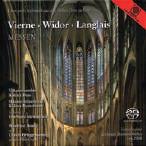
Vierne Messe solennelle eis-Moll; Naïades; Adagio aus der 3; Orgelsinfonie fis-Moll; Widor Messe fis-Mol; Langlais Messe solennelle; Hakim 2 Satz aus The Embrace of Fire.
Vokalensemble Kölner Dom; Männerstimmen des Kölner Domchores.
Director: Eberhard Metternich.
Organists: Winfried Bönig. Ulrich Brüggemann.
MOTETTEMOT 50814 TT 78:12
This is a beautifully produced disc, which is contained within a booklet rather than the usual plastic case and so it carries an ISBN number (3-937857-20-6) as well as the usual disc reference number given above. Cologne Cathedral is a building which contains two large organs. The older one is in the north transept of the cathedral and dates from 1948, although in the last 50 years it has been enlarged on several occasions, mostly recently in 2006 when two trumpet stops were added at the west end of the Nave. In 1998 a Nave organ was added, which hangs from the north side of the Nave at Triforium and Clerestory level. The choir, the Vokalenensemble Kölner Dom, was formed in 1996 and mostly consists of students from the Cologne Conservatory. The gentlemen of the Cathedral Choir also sing in the Widor Mass; the part was originally written for the students from the priests’ seminary at St Sulpice, where Widor was organist. There are three other choirs associated with the Cathedral, one for girls, one for boys and the Cathedral Singers. The three Masses on the disc were all conceived for large Parisienne churches where there is usually a small choir organ at ground level in the chancel and a much larger organ at the west end of the Nave. This disc aims to reproduce this arrangement by using the organs of Cologne Cathedral, with the Nave organ taking the part of the Choir organ and the Transept organ taking the role of the west end organ. The balance between choir and organs is rather too much in favour of the latter and the tempi in the middle sections of the Gloria in all three masses are too slow. Anyone who is looking forward to the top C in the Langlais Mass will be disappointed: the sopranos sing the optional G. Otherwise, the discs present convincing performances of the choral items. The organ solos are very fine.
Tim Rogerson
CEREMONY
Britten A Ceremony of Carols; Mendelssohn Lift thine eyes; Hear my prayer; I waited for the Lord; Stanford Evening Service in G ; McGlynn Maria Matrem Virginem; Noon Evocation to a friend; Barber Agnus Dei.
The Choir of Canterbury Cathedral.
Director: David Flood.
Organ: Tim Harper.
Harp: Camilla Pay.
YORK AMBISONIC YORK CD 202 TT 62:28



This thoroughly enjoyable disc begins with the choristers singing the Procession from Britten’s Ceremony of Carols in procession, the effect of which is not lost on the recording. David Flood’s programme notes explain that this work, together with the unaccompanied items on this disc, were recorded in the nave, whilst the accompanied items were recorded in the quire and again the difference is easy to hear on the recording. This recording is notable for the number of treble soloists that are featured. Joel
Whitewood, winner of the 2007 BBC Radio 2 Young Chorister of the Year award, features in two of the Mendelssohn works and the Noon piece, whilst no fewer than six other soloists feature in other works. The music on the disc is well known with the possible exception of the pieces by Michael McGlynn and Timothy Noon. Both are written for boys’ voices and have something of a mediaeval feel to them. I especially enjoyed Evocation to a Friend, which starts with a simple theme to which other tunes are added working up to four separate voice parts and an accompaniment before ‘unwinding’ so that at the end all that is left is the original theme. The convincing performances of wonderful music on this disc make it well worth buying. If this magazine awarded stars to recordings, this one would have five!
 Tim Rogerson
Tim Rogerson
MARY AND ELIZABETH AT WESTMINSTER ABBEY Sisters in hope of the Resurrection.
Tye Omnes gentes, plaudit minibus; Mundy Vox Patris caelestis; Tallis Videte miraculum; Sheppard Libera nos, salva nos; The Second Service; Byrd Teach me, O Lord; Ne irascaris, Domine; O Lord, make thy servant Elizabeth; White Exaudiat te Dominus. The Choir of Westminster Abbey. Director: James O’Donnell. Organ: Robert Quinney.
HYPERIONCDA67704 TT 66:42
The range of music on this CD is exquisite. The first half of the programme consists of music performed (and not necessarily in all cases composed) during Mary’s reign; the second half, beginning with the evening canticles from Sheppard’s Second Service, explores something of the immense variety of sacred music produced during the subsequent, much longer and more celebrated reign of Mary’s Protestant half-sister. The singing is marvellous and the boys’ top line is wonderful and contains all the hallmarks of Hyperion’s brilliance in recording these fine examples of Tudor polyphony. The booklet is adorned by a portrait of Elizabeth on the front and Mary on the back.

 Patrick Mayhew
Patrick Mayhew
Cathedral Music 61
RECORDINGS OF FINE TREBLE VOICES
Simon Hall
Where the Moon Daisies Wave
An evocative rendition of Victorian parlour songs and sacred music
Peter Auty
Down the River of Years

Peter was Senior chorister at St Paul’s Cathedral in the early 1980s. His was the original voice behind Walking in the Air from The Snowman

Richard Bonsall
Encore
A collection of classical and traditional songs
One of the finest recorded treble voices
Lorin Wey
Hey Ho, the Wind and the Rain
Twelve Shakespeare songs, with music from Morley and Arne to Britten and Tippett

Harry Sever
Die Schöne Müllerin
Schubert with Nadanai Laohakunakorn
“I had never expected to be won over by a boy soprano singing this music but I found it completely captivating.” John Rutter
Robert Stephen
Drop, Drop, Slow Tears with Stewart McCoy (lute)

A recital of Elizabethan and Jacobean music by Dowland, Gibbons and contemporaries
Max Riebl
Little Sir William
Including fine accounts of songs by Schubert, Mozart and Britten

Richard Birchall

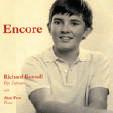
In St George’s Chapel, Windsor Castle
A delightful and atmospheric recording
All CDs £12.50 including UK postage
To order visit our website www.tadpolemusic.com or by post, making cheques payable to Tadpole Music at 37 Kirk Close, Oxford OX2 8JL

JOHN SANDERS Friend for Life
by Alan Charters
The biography of Dr John Sanders
OBE, FRAM, FRSCM
Organist & Master of the Choristers at Chester, and then, Gloucester Cathedral With a foreword by Dr Roy Massey
Hardback with 15 illustrations £20
Published 14th July 2009
Advance orders may be made direct to the author at the special price of £18 p&p free

The Revd Alan Charters Crescent House Church Street Talgarth Brecon LD3 OBL
THREE CHOIRS FESTIVAL Hereford 2009
Composer-in-residence: John McCabe
Orchestra-in-residence: Philharmonia Orchestra
Orchestra of the Swan, National Youth Orchestra of Wales, Tippett Quartet, Fretwork

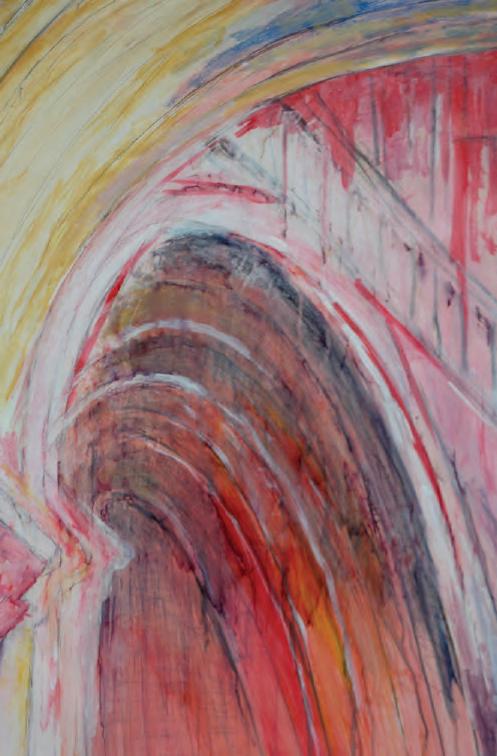
Festival Chorus, Three Cathedral Choirs, Rodolfus Choir, Stile Antico
Stravinsky The Rite of Spring
Elgar The Dream of Gerontius
Finzi Clarinet Concerto
Mendelssohn Elijah
Strauss Four Last Songs
Handel Israel in Egypt
Mahler Symphony No 1
Haydn The Seasons
Bach Mass in B minor
Vivaldi The Four Seasons
Schubert Winterreise
Poulenc Gloria
8–15 August 2009
www.3choirs.org
Cathedral Music 62
I
Visit our website www.tadpolemusic.com to hear excerpts and see track listings
THOMAS WEELKES: SACRED CHORAL MUSIC

O Jonathan; Rejoice in the Lord; All people, clap your hands; Te deum & Jubilate (Eighth Service); O how amiable are thy dwellings; Christ rising again; When David heard; Laboravi in gemitu meo; Magnificat & Nunc dimittis (Third Service); O vos omnes; Lord, to Thee I make my moan; Give ear, O Lord; Hosanna to the Son of David. Tewkesbury Abbey Schola Cantorum.
Director: Benjamin Nicholas.
DELPHIAN DCD34070 TT 59:52





AVE MARIA
Fourteen ancient and modern musical settings of the prayer to Mary by Elgar, Schubert, Non Papa, Bach/Gounod, Parsons, Palestrina, Victoria, Bruckner, Biebl, Panufnik, Biazeck & Terry.
The London Oratory School Schola.
Director: Lee Ward.
Organ: David Terry
REGENT RECORD REGCD292 TT 53:45
Two CDs sung by boys’ choirs have come my way, one with a Catholic allegiance, the other Anglican, both are firmly part of the English cathedral music tradition, which was separated liturgically by the schism of the Reformation. Both are modern foundations, the Tewkesbury choir was formed by Miles Amherst as the raison d’être for his Abbey School foundation in 1973. When that closed in 2006, the choir was re-founded as a Schola Cantorum and transferred to Dean Close Preparatory School, with some financial assistance from FCM and the RSCM. Its conductor, Benjamin Nicholas, became Director of Choral Music at the school and it is he who directs this superbly sung hour-long sequence of Weelkes’s Sacred Choral Music. There are some telling treble solos from Oliver Gay and Aaron King in the Jubilate from the Eighth Service and again in the verse anthem Christ Rising Again, where their sonority shines out, despite the rather distant recording balance. This may have been chosen in order to simulate the spaciousness of the Abbey, because this CD was, in fact, made in Dean Close School Chapel, as a more convenient venue. The final track is Hosanna to the Son of David, probably Weelkes’s best-known setting, here given a robust and authentic rendering.
The Tewkesbury CD is sung in English, apart from two tracks, whereas the London Oratory Schola, delivering their 54 minute sequence Ave Maria, with its exclusively Marian theme, sing in Latin under their director, Lee Ward. He became Director of Music at the Oratory School in 1996, becoming Director of the Schola in 2006. This was founded, also in 1996, to provide a comprehensive choral educational experience for boys, singing the Vigil Mass on Saturdays in term-time at Brompton Oratory. The 14 tracks start with familiar settings by Elgar, Schubert, Gounod and Bruckner, interspersed with five Renaissance settings, sung here in a highly exalted style. Contemporary settings include Matthew Martin’s, arranged for the boys alone, with organ; a delightfully operatic setting by Franz Biebl; Roxanna Panufnik’s, for four parts, with a top line sung strongly here by the boys; Simon Blazeck, one of the lay clerks, and David Terry (Assistant Director) have composed the last two settings, The latter’s, for trebles alone, providing a refreshing contrast with all the preceding tracks. Lee Ward has achieved fine performances throughout. Again a disappointment that this was not recorded in the resonant acoustic of the Oratory, but in Hampstead Parish Church, where Mr Ward is Director of Music and the choral sound is no doubt clearer and cleaner.
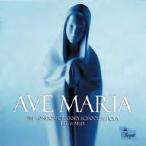 Roger Tucker
Roger Tucker
RANDALL THOMPSON
The Peaceable Kingdom; Alleluia; The Last Invocation; Mass of the Holy Spirit; Fare Well.
Schola Cantorum of Oxford.
Director: James Burton.
HYPERIONCDA67679
TT 77:02
The American Randall Thompson (1899-1984) was a slightly younger near contemporary of Herbert Howells (1892-1983). Both drew musical inspiration from the 16th century but are not otherwise self-evidently similar. The title work of this compilation is described as “a sequence of sacred choruses”. They have an overall cohesion, but some of the individual choruses could stand alone quite effectively –notably Say ye to the righteous. The work was inspired by a painting by the


eighteenth century artist, Edward Hicks, and the CD booklet features this (somewhat naïf) work. For me the highlight is Alleluia written in 1940 and overshadowed by the war then raging in Europe (Pearl Harbour was still twelve months off). In a private letter (not quoted in the excellent notes by Morten Lauridsen - no less) Thompson said: “I did not feel like writing any Fanfare (for which, in fact, he’d been asked) Instead I wrote Alleluia. This is why the piece is so tinged with sadness... it cannot be made to sound jubilant” It is the piece most likely to be known in this country, and deserves more performance. For the rest, there are moving settings of words by Walt Whitman and Walter de la Mare, both rather elegiac in mood and a Mass, which at 31 minutes is unlikely these days to get many liturgical performances. The pieces span a period of about 50 years, though there is a remarkable consistency of style. The music is approachable and easy on the ear, but never trite. It would be ideal for competent chamber choirs and there is much to enjoy on this disc.
The Schola Cantorum consists of young voices and the sound is a delight. James Burton gets just the right mood over to the listener and the disc is well worth buying and hearing. The volume level is slightly on the low side but this can be corrected without distortion. Randall Thompson would seem to have been an ideal icon for the RSCM. FCM members, too, would do well to get to know him.
Richard Osmond
GEORG SCHUMANN
Jerusalem, du hochgebaute Stadt
3 Choral-Motetten für gemischten Chor op. 75; Jerusalem, du hochgebaute Stadt; Sollt ich meinem Gott nicht singen?; Mit Fried und Freud, ich fahr dahin; Choral-Motetten für gemischten Chor op. 71; Vom Himmel hoch da komm ich her Purcell Singers
Conductor: Mark Ford
Sopranos: Geraldine McGreevy & Mary Nelson
GUILD GMCF 7311 TT 59:81
This German composer (1866-1952) was unfamiliar to me. I was pleasantly surprised at what I heard, and ended up playing the recording to family and friends, who agreed that this music is most attractive. The motets are written for eight-part choir, with some having additional parts for solo singers and brass. These brass parts in Mit Fried und Freud, ich fahr dahin and Wachet auf, ruft uns die Stimme adds an added sense of occasion to the music, and provides the listener with some variety of timbres. It would be good if this sort of music caught on.
Stephen Power
ORGANCDs
SOUNDS OF ST ASAPH

Alan McGuinness plays the Organ of St Asaph Cathedral. Bruhns Praeludium in E minor; Couperin Three Movements from the Gloria of Messe Pour Les Paroisses; Bach Wir glauben all’ an einen Gottt; Revd John Edwards Rhosymedre ; Vaughan Williams
Prelude on Rhosymedre; Romanza The White Rock; Howells Master Tallis’s Testament; Psalm Prelude Set 2 No 1; Mathias Processional; Chorale; Recessional; Saint Saëns Fantaisie in D flat; Eben The Wedding in Cana. REGENT REGCD 287 TT 64:31
After its 1998 rebuild by Wood of Huddersfield, the cathedral organ is in very fine voice and we can enjoy its versatile character, which the well-chosen programme enables Alan McGuinness to display. The Bruhns is a good opener, which needs a more resonant acoustic for full effect, but by nice use of rubato the toccata style of writing comes to life.
The Bach goes very well, with the striding pedal theme growling out boldly. Two pieces by Howells link two by Vaughan Williams to three by William Mathias, who had close ties with St Asaph and was Professor of Music at Bangor. The Mathias and the Petr Eben really suit this organ and are very well done. This least familiar of the three Saint-Saëns Fantaisies deserves to be better known and is here given a persuasive reading. I applaud the choice of works, which manages to avoid the usual recital fodder and yet offer attractive pieces: an organ sequence you will want to repeat.
Roger Tucker
Cathedral Music 63
SAINT-SAËNS
Andrew-John Smith plays the organ of La Madeleine, Paris.
Prélude et Fugue Op 99 No1; Fantaisie; Prélude et Fugue Op 99 No 3; Cyprès; Fantaisie No 3; March religieuse; Prélude et Fugue Op 99 No 2; Bénédiction nuptial; Fantaisie.
HYPERIONCDA67713 TT 78:24
In this CD released by Hyperion of preludes, fugues and fantasies, English organist Andrew-John Smith brilliantly recreates the magic of Camille SaintSaëns on the Cavaillé-Coll instrument of Saint-Saëns’ 19th century tenure at Église de la Madeleine, Paris. Indeed, the true magic within this recording is the reintroduction of works that are oft-neglected from this controversial musical genius, who was a powerful figure in the shaping of French music. The huge symphonic-like Aristide Cavaillé-Coll organ of La Madeline, was the largest of its kind at the time of building in 1846 and generated a phenomenal power that impressed upon Saint-Saëns the need for new music to be written for it, quite diverse from the traditional fugues that he considered less suited the possibilities of this four manual-48-stop organ. In his extensive and insightful notes to this disc, Smith challenges the listener to visit the often misunderstood figure of Saint-Saëns’, ‘[of] whose many qualities the time has surely come for a serious reappraisal’. The performer does his level best to demonstrate this in his virtuoso playing of 12 works spanning the life of his subject. The collection sandwiches lesser-known works between the enormous and rich opening Prélude et Fugue in E flat major (dedicated to Widor amongst others) and Saint-Saëns’ most famous organ piece Fantaisie in E flat major, perhaps his only work which remains a mainstay of the concert organist. Included in the filling is the balance of the three Préludes et Fugues set, written toward the turn of the 20th century in a new period of inspiration for the troubled composer. Notably, the breathless Prelude and Fugue No 2 and Marche Religieuse, all compel the listener to stay for more through a recording of genuine flair and rubato in Smith’s performance at the organ. His interpretations are authentic to the registrations available to Saint-Saëns during his time at La Madeleine, although in performing his later works, registrations are expanded by those added to Cavaillé-Coll’s original conception and with great effect in this excellent CD.
 Stuart Deacon
Stuart Deacon
JOHANN PACHELBEL ORGAN WORKS VOL II
Matthew Owens plays the Frobenius Organ at Canongate Kirk, Edinburgh.
Toccata in G min; Non komm der Heiden Heiland; Herr Christ, der einig Gottes Sohn; Wir glauben all an einen Gott; Wie schön leuchtet der Morgenstern; Aria Prima in D min; Fugue in A min; Jesus Christus, unser Heiland der von uns; Dies sind die heilgen zehn Gebot; Fugue in C; Vater usner im Himmelreich; Ich ruf zu dir Herr Jesus Christ; Nun lob, mein Seel, den Herren; An Wasserflüssen Babylon; Fugue in D minor; Magnificat tertil toni.
DELPHIANDCD34031 TT 72:01




This second volume of organ works of Johann Pachelbel in the series by talented organist, conductor and Master of the Choristers at Wells Cathedral, Matthew Owens, was recorded on the fine Frobenius Organ of Canongate Kirk, Edinburgh in 2005.

Middle baroque era composer Johann Pachelbel never achieved the stature of Buxtehude and J S Bach. But his significant volume of organ works combined with his own teaching of Bach’s tutor and elder brother Johann Christoph, surely had influence on those greats that followed. The South German conservative style of the period, combined with the simpler organs of that region is reflected in Pachelbel’s clean and undecorated melodic lines. Interestingly, Pachelbel’s body of exquisite chorale preludes and Magnificat fugues were a result of his contractual obligation in his church positions, requiring him to compose organ music to play before services and not merely to extemporise. This mix is carefully reflected in the choice of pieces for this CD volume, with 11 chorale preludes amongst the 17 tracks, drawing upon texts and melodies from throughout the liturgical year, most notably Wie schön leuchtet der Morgenstern (How brightly shines the morning-star). Consistent with the chorale format, the three fugues chosen in this recording are not extensive pieces, but the Aria Prima, written for organ or harpsichord and composed towards the end of Pachelbel’s life demonstrates more inventiveness and variety and forms the highlight of the CD. Matthew
Owens’s skilful playing of these works on the delicious Frobenius is clear and concise. His deft cognisance of phrasing and punctuation breathes considerable life into these beautiful baroque pieces and defines him as a leader in the playing of this form. Importantly, a compelling variety of registrations in this CD ensures that Owens keeps the listener engaged throughout the full 72 minutes playing time and onward to acquiring volume I. Detailed notes prepared by Adam Binks provide the historical context of Pachelbel’s life and works and provide a fascinating insight into this early baroque period.
Stuart Deacon
BUXTEHUDE: THE COMPLETE ORGAN WORKS VOL1

Christopher Herrick plays the Organ of Helsingør Cathedral, Denmark.
Praeludium in D; Chorale Fantasia ‘Nun freut euch, lieben Christen mein’; Fuga in C; Chorale Prelude ‘Ach Herr; mich armen Sünder’; Chorale Prelude ‘Von Gott will nicht lassen’; Chorale Fantasia ‘Ich dank dir schon durch deinen Sohn’; Canzona in D min; Chorale Prelude ‘Nun bitten wir den heiligen Geist; Praeludium in G minor; Ciaccona in C min; Toccata in F; Praeludium in G; Praeludium in A; Chorale Variations ‘Magnificat noni toni;’ Chorale Variations ‘Auf meinen lieben Gott’; Chorale Prelude ‘Ein feste Burg ist unser Gott.
HYPERIONCDA67666 TT 78:05
Having given us Organ Fireworks, Organ Dreams and a complete Bach series, Christopher Herrick and Hyperion have now turned their attention to Buxtehude, who probably remains best known as being the organist that the 20-year-old J S Bach walked many miles to hear play and seemingly so enjoyed the experience that he stayed for far longer than either he or his employer expected. There appears to be no particular theme to the works chosen for this disc and Relf Clerk’s interesting notes offer no further clues, but nevertheless the selection does present a variety of the composer’s works. As usual, Christopher Herrick has selected an organ which is ideally suited to the music. In this case it is the 1969 Andersen instrument in Helsingør Cathedral, which speaks in a delightfully clear and bright way without ever becoming raucous. He has also prepared his performances thoroughly and so gives an interesting account of the music. I suspect that this disc will appeal in the main to two groups of people: the first are those who have an addictive interest in recorded organ music, in which case buying the whole series (as it is produced) will be a must. The second group is probably larger and will consist of those who do not have much knowledge of the music played here and would like to broaden their horizons. I am certain that no one in either group will be disappointed by this disc.
Tim Rogerson
TOWER POWER
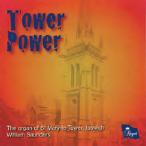
William Saunders plays the Organ of St Mary-le-Tower, Ipswich.
Guilmant March upon Handel’s ‘Lift up your heads’; Warlock Capriol Suite; Boyce Symphony No 4; Nicholas Prelude on Dominus Regit Me; Vaughan Williams Antiphon from Five Mystical Songs; Alla Sarabanda from Phantasy Quintet for Strings ; Grainger Country Gardens;Irish Tune from County Derry; Handel in the Strand; Wills Etheldreda Rag; Finzi Prelude; Rutter Variations on an Easter Theme; Elgar Pomp and Circumstance March 1
REGENTREGCD 296 TT 64:31
One could be forgiven for thinking the programme on this CD was constructed for the other tower organ, the mighty Wurlitzer at Blackpool, for William Saunders has assembled a pot-pourri of entertaining compositions, mainly by English composers. The opening work, however, is Alexandre Guilmant’s march and fugue on Handel’s Lift up your Heads The work fully demonstrates the colour and power of this fine organ. I couldn’t but help think that it has overtones of S.S. Wesley about it and the younger Frenchman might well have heard him extemporising. The sparkling Symphony No 4 in F by William Boyce arranged by Arthur Hutchings, demonstrates well the baroque qualities of the instrument and Henry Ley’s arrangement of Vaughan Williams’ Alla Sarabande from his Phantasy Quintet is gentle and reflective. However, the organ never featured in Percy Grainger’s compositions and I find the transcriptions of three of his popular pieces heavy and rather treacly, features that are
Cathedral Music 64
totally at odds with the composer’s style. Similarly, Warlock’s Capriol Suite is best in his original arrangements for piano or string orchestra. There are, however, some other delights in this collection such as the Etheldreda Rag by Arthur Wills, easily the equal of anything Scott Joplin wrote and John Rutter’s delightful Variations on an Easter Theme, a duet for organ in which William Saunders is accompanied by Dr Michael Nicholas, conductor of the choir at St Mary-le-Tower. William Saunders is currently Assistant Director of Music at St Mary-le-Tower and his ability is fully demonstrated on this recording.
Trevor Godfrey
BRITISH FANTASIES & FANFARES

Nigel Potts plays the Schoenstein Organ of St Paul’s Parish, Washington DC.
Cook Fanfare; Howells Rhapsody Op 17 No 1; Whitlock Fantasie Choral, No1; Bowen Wedding March for Organ; Melody in G minor; Fantasia; Bairstow Evening Song; Spicer Saraband for any 3rd October; Fanfares and Dances; Elgar Nimrod; Walton Orb and Sceptre.
HERALDHAVPCD 344 TT 76:02


This is an interesting release because it fulfils what Paul Spicer writes in the first sentence of the booklet: ‘This is happily not just another ‘English cathedral organ music’ compilation, although elements within it may be familiar in that context’. This is what makes this particular disc interesting. There are two world premiere recordings and all of York Bowen’s solo organ music. The Howells and Whitlock suit the four-manual, 51-voice and 64-rank organ well. The instrument was completed in 1995 and was designed with the sole objective of accompanying the Anglican service, particularly the Victorian and Edwardian repertoire. The Bowen pieces are wonderful, especially the lyrical Melody. The short joyful Wedding March with its ‘wonderful harmonic twists and turns’ would make a welcome substitute for the Mendelssohn. Paul Spicer’s two contributions, both written for Nigel Potts (his birthday and wedding), are both exciting, especially the rhapsodic Saraband. The disappointment for me
was Nimrod which is the slowest I have heard it performed (5:33), because it drags it is laborious and therefore the climaxes don’t come off and the final 10 seconds don’t work either. However, with the Walton to polish off an otherwise excellent CD this is one to go out and buy.
Andrew Palmer
THE ORGAN MUSIC OF SIR WALTER ALCOCK

Daniel Cook plays the organ of Salisbury Cathedral.
Introduction & Passacaglia; Rather Slowly; Legend; Alla Marcia; Voluntary; Toccata; Andante Grazioso; Impromptu in G; Toccatina; Sketch; Impromptu in D; Postlude; Introductory Voluntary; Fantasie Impromptu; Andante; Con Moto; Moderato; Marche Triomphale.
PRIORYPRCD 1008 TT 77:25 SD

This release on the Priory Records label represents a brave first solo outing for Salisbury Cathedral’s Assistant Director of Music, Daniel Cook. The theme is highly appropriate to his residency: performing the music of the great Sir Walter Alcock on the grand Father Willis organ that was painstakingly restored, written for and performed upon by Sir Walter during his own tenure at the Cathedral. Cook demonstrates an intimate acquaintanceship with the fine texture and breadth of this famous instrument in this performance. He has carefully selected what he considers to be Alcock’s greatest works across the composer’s career. However, the listener might be forgiven for noticing the often instructional nature of many of the works. Indeed, as the cover notes describe, these formed the basis for much tuition material, many of which form the basis for this CD. Happily this is not the full story. Cook chooses well, particularly from Alcock’s grander works, such that enthusiastic listeners will find themself unwittingly playing the ‘air pedalboard’ in both the outstanding Alla Marcia and Toccata sections. The CD is a brief insight into Alcock’s rich late Victorian style and is an authentic modern-day performance that the composer himself would certainly have enjoyed.
 Stuart Deacon
Stuart Deacon
Cathedral Music 65
George Sixsmith & Son Ltd Organ Builders We provide all types of new instruments New Organs Restoration Rebuilding Tuning Maintenance We can give unbiased advice for all your requirements Hillside Organ Works Carrhill Road, Mossley, Lancashire OL5 0SE Tel: 01457 833 009 Fax: 01457 835 439
Cathedral MUSIC Cathedral MUSIC
Allegro Music ................................................................27
Cambridge Summer Music Festival..............................59
Campaign for the Traditional Cathedral Choir ..........27
Canterbury Cathedral Choir ........................................67
Canterbury Festival ......................................................61
Christ Church Cathedral School ................................17
City of London Festival ................................................41
Dean Close Preparatory School ..................................11
Edington Festival ..........................................................59
Festival of The Sons of the Clergy ..............................29
George Sixsmith Organs ..............................................65
Harrison & Harrison ....................................................20
Hereford Three Choirs ................................................62
Hexham Abbey Festival ................................................55
Incorporated Association of Organists ........................51
International Organ Festival ........................................25
John Sanders ................................................................62
Advertisers and Supporters
Leeds Parish Church ....................................................52
Makin Organs ..................................................................2
Matthew Copley Organ Design ....................................29

Musica Deo Sacra ..........................................................11
Orgues Aubertin ..........................................................66
Regent Records ............................................................67
Royal School of Church Music ....................................27
Salisbury Cathedral Voice Trials ..................................58
Southern Cathedrals Festival ......................................58
St Davids Cathedral Festival ........................................65
St Paul’s Cathedral Concerts........................................29
St Paul’s Foundation ....................................................35
Tadpole Music ..............................................................62
Viscount Classical Organs..............................................15
Westminster Abbey Choir ............................................11
Westminster Abbey Summer Organ Series ................55
Westminster Cathedral Grand Organ Festival ............67
Grapes are blended to produce the Grand cru.
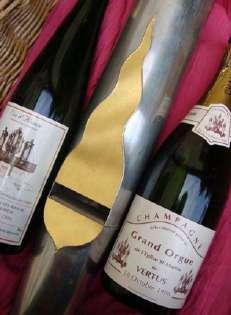
Materials and Spirit are also blended in the age-old way to produce the Grand Orgue for the discerning palate.
Organs of world-wide distinction handcrafted without compromise by Bernard Aubertin
Chevalier, Legion d’Honneur & Maître d’Art
Manufacture d’orgues Aubertin
L’Ancien Prieuré
F -39700 (Jura)
COURTEFONTAINE
St John Baptist College, Oxford 2007
3 manuals & Pedal 33 stops with a unique double département Récit
France
Tel + 33 3 84 81 32 66
Fax + 33 3 84 71 19 42
orgues.aubertin@wanadoo.fr
Cathedral Music 66
GRANDORGAN FESTIVAL
Wednesdaysat7.30pm
DAVIDGOODE THOMASWILSON THOMASTROTTER MARTINBAKER

DAVIDSANGER MATTHEWMARTIN NICOLASKYNASTON
ADMISSIONFREE DONATIONSWELCOME

Formoreinformationpleasecontactthe MusicAdministrator aoifedaly@rcdow.org.uk02077989057 www.westminstercathedral.org.uk
NewfromRegent
“Alabelwhoseorganrecordingsareconsistentlyamongstthefinestemergingtoday” InternationalRecordReview-January2008
DearLordandFather - Favouritehymnsandhymn-anthems

TheChoirofRiponCathedral Directedby AndrewBryden

ThomasLeech Organ REGCD298

DearLordandFatherofmankind Parry,arrChambers, TheKingofLovemyShepherdis Irish trad,arrBairstow, Owhattheirjoy Harris, Peacebetothiscongregation Cadden,arr Grindle, PsalmCXLVIII(Lord,Whohastmadeus) Holst, Jesu,grantmethisIpray Gibbons, arrBairstow, TheStrifeisO’er Vulpius,arrLey, Thereisagreenhill Horsley,arrNixon, Love’sredeemingworkisdone Choaralbuch,arrNixon, Letus,withagladsomemind Wilkes, arrStanford(Op113,No1), PurestandHighest Gibbons,arrStanford(Op113,No2), In theeisgladness Caravaggio,arrStanford(Op113,No3), PraythatJerusalemmayhavepeace Playford’sPsalms(1671),arrStanford(Op113,No4), PraisetotheLord,theAlmighty PraxisPietatis(1668),arrStanford(Op113,No5), Oh!Foracloserwalk ScotchPsalter,arr Stanford(Op113,No6), There’sawidenessinGod’smercy Bevan, TheOldHundreth(All peoplethatonearthdodwell) GenevanPsalter(1551),arrVaughanWilliams
Lasus,GreatChoralWorks


TheGirlChoristersandGentlemenofYorkMinsterChoir

Directedby JohnScottWhitely REGCD297

Surexitpastorbonus,MissaJager(MissaVenatorum),Taedetanimammeam, VeniCreatorSpiritusà6,Tristisestanimamea,Inpaceinidipsum, Quaretristises,animamea,Alleluia:Videmusstellameius,Timorettremor, MagnificatSeptimiToni,SurgensIesus



Comeout,Lazar -TheshorterchoralworksofPaulSpicer
TheChapelChoirofSelwynCollege,Cambridge
Directedby SarahMacDonald,ClaireInnes-Hopkins Organ REGCD280


LoveisBeautifulIndeed,HisHeart’sDesire,GlorybetoGodforDappledThings(Pied Beauty),Stars,Ihaveseenthemfall,ThereisnoRoseofsuchVirtue,InafieldasIlay, ThisChildofGod,PrayerofStCuthbert,Comeout,Lazar,AGrace:InscriptioninaMonastic Refectory,LettheMountSionRejoice,HowLoveBleeds(FourCarolsforDarkTimes),Alive, Drop,DropSlowTears,Michael,TheGreatPrince,shallArise

SoundsofStGiles - TheManderEastorganofStGilesCripplegate ThomasTrotter REGCD302

OrganConcertoNo16inF GFHandel,arrTrotter, LaShyMyze Anon,17thc, Belleetjeunefleurdequinzeans Anon,16thc,Sur‘La,Mi,Re’Anon,Englishschool,16thc, Saltarelle Susato(1531), VoluntaryinD,Op5,No5 Stanley, TrioSonataNo1inEflat JSBach, PartitasopraNunfreuteuch Rogg, ThreePreludesfoundedonWelshHymnTunes VaughanWilliams, Scherzo(from Organ-SymphonyinCminor,Op47)Holloway, PréludeetDanseFuguée Litaize
AWinchesterCollection
MalcolmArcherplaystheorganofWinchesterCollegeChapel REGCD289
IntroductionandPassacaglia Reger, FourSketchesforPedalPiano,Op58 Schumann, SonataNo3inAmajor,Op65 Mendelssohn, Esistein’Ros’entsprungen,Op122,No8 Brahms, OWelt,ichmussdichlassenOp122,No3 Brahms, Schmückedich,oliebe Seele,Op65,No51 Karg-Elert, NundanketalleGott(Marchetriomphale),Op65,No 59 Karg-Elert, VariationsonanEnglishAir Archer Firstrecording, Saraband(Forthe morningofEaster) Howells, AChoralPreludeon StColumba Milford, ChoralSongandFugue(originalversion) Wesley
MyBelovedSpake -FavouriteAnthemsfromWinchesterCollege

WinchesterCollegeChapelChoir Directedby MalcolmArcher
PaulProvost Organ REGCD290
Mybelovedspake Hadley, WielieblichsinddeineWohnungen(Howlovelyarethy dwellings,from EindeutschesRequiem) Brahms, Ifwithallyourhearts(from Elijah) Mendelssohn, Lightoutofdarkness(from TheLightofLife,Op29) Elgar, Otasteandsee VaughanWilliams, Greaterlovehathnoman Ireland, AveverumCorpus Byrd, ANewSong MacMillan, GeistlichesLied Brahms, Agratefulheart Plumstead, Likeasthehartdesireththewaterbrooks Howells, Iwillliftupmineeyes Walker, Theythatgodowntotheseainships Sumsion, Abendlied Rheinberger, EveningHymn BalfourGardiner
Availablefromallgoodclassicalrecordshopsordirectfrom REGENTRECORDS POBox528,Wolverhampton,WV39YWTel:01902424377, Fax:01902717661E-mail:info@regentrecords.com Web:www.regentrecords.com-Nowwithsecureonlineordering Cathedral/churchshopspleaseorderdirectfromRegent UKRetaildistributionbyRSKEntertainmentLtd, Tel:01488608900,info@rskentertainment.co.uk USAdistributionAlbanyMusicDistributorsInc.(mailorderwww.arkivmusic.com)
Cathedral Music 67
23September 21October
2009 29April 27May 24June 22July 26August


















 Alan Spedding
Alan Spedding
















 by Canon Wendy Wilby Precentor
by Canon Wendy Wilby Precentor











































































 Geoffrey Webber
Geoffrey Webber






 Ed William Owen
Ed William Owen






 Tim Rogerson
Tim Rogerson

 Patrick Mayhew
Patrick Mayhew












 Roger Tucker
Roger Tucker



 Stuart Deacon
Stuart Deacon






 Stuart Deacon
Stuart Deacon



















